rewilding
description: conservation aimed at restoring natural processes and reintroducing apex predators and keystone species
81 results
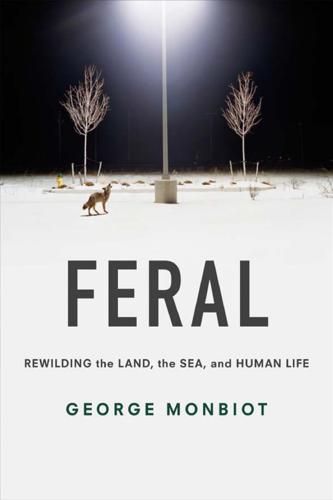
Feral: Rewilding the Land, the Sea, and Human Life
by
George Monbiot
Published 13 May 2013
While conservation often looks to the past, rewilding of this kind looks to the future. The rewilding of both land and sea could produce ecosystems, even in such depleted regions as Britain and northern Europe, as profuse and captivating as those that people now travel halfway around the world to see. One of my hopes is that it makes magnificent wildlife accessible to everyone. I mentioned that there are two definitions of rewilding that interest me. The second is the rewilding of human life. While some primitivists see a conflict between the civilized and the wild, the rewilding I envisage has nothing to do with shedding civilization.
…
It foresees large areas of self-willed land and sea, repopulated by the beasts now missing from these places, in which we may freely roam. Perhaps most importantly, it offers hope. While rewilding should not become a substitute for protecting threatened places and species, the story it tells is that ecological change need not always proceed in the same direction. Environmentalism in the twentieth century foresaw a silent spring, in which the further degradation of the biosphere seemed inevitable. Rewilding offers the hope of a raucous summer, in which, in some parts of the world at least, destructive processes are thrown into reverse. Nevertheless, like all visions, rewilding must be constantly questioned and challenged. It should happen only with the consent and enthusiasm of those who work on the land.
…
They have lost not only their physical structure–the trees, shrubs and dead wood which provide habitats for so many species–but also many of the connections between the species which build an ecosystem. Most of the strands of the web of life in these places have been broken. At first I struggled to identify the scientific principles that might inform rewilding. To formulate principles you must know what outcome you are trying to achieve. But rewilding, unlike conservation, has no fixed objective: it is driven not by human management but by natural processes. There is no point at which it can be said to have arrived. Rewilding of the kind that interests me does not seek to control the natural world, to re-create a particular ecosystem or landscape, but–having brought back some of the missing species–to allow it to find its own way.
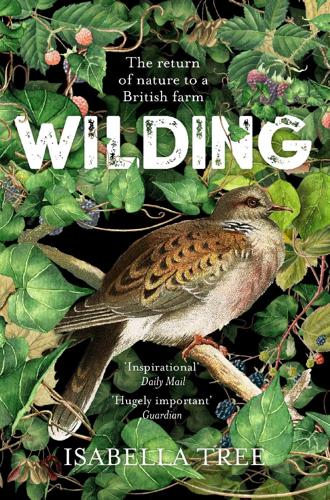
Wilding: The Return of Nature to a British Farm
by
Isabella Tree
Published 2 May 2018
O., Jain, M., et al. ‘Facilitation between bovids and equids on an African savanna’. Evolutionary Ecology Research , vol. 13, pp. 237–52 (2011) Soulé, M. and Noss, R. ‘Rewilding and biodiversity’. Wild Earth , pp. 1–11 (Fall 1998) Van de Vlasakker, Joep. ‘Bison Rewilding Plan 2014–2024 – Rewilding Europe’s contribution to the comeback of the European bison’. A report by Rewilding Europe (2014) 10. Purple Emperors Bartomeus, I., Vilà, M., and Steffan-Dewenter, I. ‘Combined effects of Impatiens glandulifera [Himalayan balsam] invasion and landscape structure on native plant pollination.’ Journal of Ecology , vol. 98, pp. 440–50 (2010) Hejda, M. and Pysek.
…
Sir John ref1 leafhoppers ref1 , ref2 Lennart von Post, Ernst Jakob ref1 , ref2 Leopold, Aldo ref1 , ref2 ref3 lesser redpoll (Carduelis cabaret ) ref1 , ref2 lesser spotted woodpecker (Dryobates minor ) ref1 , ref2 , ref3 lesser water-parsnip (Berula erecta ) ref1 Lewes, Sussex ref1 Lewes District Council ref1 lichens and closed-canopy theory ref1 Ennerdale ref1 at Knepp ref1 Kraansvlak ref1 loss of habitat ref1 , ref2 , ref3 Norway ref1 and oak trees ref1 light-demanding trees and shrubs ref1 , ref2 , ref3 see also aspen , birch , blackthorn , bramble , broom , crab apple , dog rose , gorse , hawthorn , hazel , juniper , oak , rowan , sallow , Scots pine , wild cherry , wild pear , wild privet lime trees ref1 , ref2 , ref3 , ref4 , ref5 , ref6 Line, Craig ref1 Linnartz, Leo ref1 linnet (Linaria cannabina ) ref1 , ref2 , ref3 little egret (Egretta garzetta ) ref1 , ref2 , ref3 , ref4 little owl (Athene noctua ) ref1 , ref2 , ref3 Littlehampton, Kent ref1 liverworts ref1 , ref2 livestock accumulation of chemicals in fatty tissues ref1 castration ref1 and handling systems ref1 loss to flooding ref1 and methane production ref1 regulations ref1 slaughter of ref1 stocking densities ref1 supplementary feeding ref1 tree fodder for ref1 Livestock Handling and Transport (Grandin) ref1 Living Landscapes ref1 , ref2 , ref3 , ref4 , ref5 Liza, river ref1 lizard see common lizard , sand lizard , slow-worm lob worm (Lumbricus terrestris ) ref1 Loch Garten, Speyside ref1 Loddon lily (Leucojum aestivum ) ref1 long-eared owl (Asio otus ) ref1 , ref2 long-tailed tit (Aegithalos caudatus ) ref1 longhorn cattle see old English Longhorn under cattle, breeds of Lord, Dr Alex ref1 lowland heathland, decline in ref1 lynx (Lynx lynx ) ref1 , ref2 , ref3 , ref4 , ref5 , ref6 , ref7 , ref8 , ref9 McCarthy, Mike ref1 mackerel ref1 macromoths, and ragwort ref1 Madgeland Wood ref1 magnesium ref1 , ref2 , ref3 , ref4 , ref5 magpie (Pica pica ) ref1 , ref2 , ref3 maiden’s blush moth see under moths, species of Maidment, John ref1 Maidstone, Kent ref1 Making Space for Nature: a review of England’s Wildlife Sites and Ecological Network ref1 Malaysia ref1 , ref2 mallard (Anas platyrhynchos ) ref1 , ref2 , ref3 Malta ref1 Mammal Society ref1 mammoth see woolly mammoth mandarin duck (Aix galericulata ) ref1 mantle vegetation ref1 , ref2 , ref3 maple ref1 see also field maple (Acer campestre ) marbled white see under butterflies, species of Marlborough Downs ref1 Marlpost Wood ref1 Marren, Peter ref1 marsh fritillary see under butterflies, species of marsh frog (Pelophylax ridibundus ) ref1 marsh harrier (Circus aeruginosus ) ref1 , ref2 marsh ragwort (Jacobaea aquatica ) ref1 marsh speedwell (Veronica scutellata ) ref1 marsh tit (Poecile palustris ) ref1 , ref2 marshland ref1 , ref2 , ref3 , ref4 , ref5 , ref6 , ref7 , ref8 , ref9 mast years ref1 mayflies ref1 meadow brown see under butterflies, species of meadow pipit (Anthus pratensis ) ref1 , ref2 Meadow Protection Plan (EU) ref1 meadows biodiversity of ref1 decline in ref1 , ref2 negative effect of Meadow Protection Plan ref1 Northern Block, at Knepp ref1 recovery of ref1 , ref2 sourcing native seeds ref1 support for ref1 meadowsweet (Filipendula ulmaria ) ref1 meat sales, at Knepp ref1 , ref2 medicinal properties of vegetation ref1 , ref2 , ref3 , ref4 Medmerry, West Sussex ref1 megafauna ref1 , ref2 , ref3 , ref4 , ref5 Melitta europaea see under bees, species of Mens Nature Reserve, Sussex ref1 , ref2 mental health ref1 , ref2 , ref3 , ref4 Meon, river ref1 Merck’s rhinoceros (Stephanorhinus kirchbergensis ) ref1 Merrik Wood, Knepp ref1 meta-populations, and habitat chains ref1 , ref2 methane production ref1 Mexico ref1 mice ref1 , ref2 , ref3 see also dormouse , harvest mouse , wood mouse , yellow-necked mouse micromoths ref1 Middle Block biodiversity ref1 , ref2 funding ref1 , ref2 and grazing animals ref1 location/scope ref1 , ref2 midges ref1 millipedes see under soil biota milk quotas, effects of ref1 , ref2 , ref3 milkcap mushrooms ref1 , ref2 mindfulness ref1 mining bees ref1 Ministry of Agriculture, Fisheries and Food ref1 mink see American mink mirror carp (Cyprinus carpio carpio ) ref1 Mississippi, river ref1 mistle thrush (Turdus viscivorus ) ref1 mixed-farming systems ref1 , ref2 , ref3 mob grazing ref1 mole ploughs ref1 , ref2 molluscs, life cycle and habitat ref1 Monbiot, George ref1 , ref2 money spiders (Trematocephalus cristatus ) ref1 Montagu’s harrier (Circus pygargus ) ref1 monumental trees see landmark trees moorhen (Gallinula chloropus ) ref1 moose see Eurasian elk Morocco ref1 mosquitoes ref1 Moss, Charles ref1 mosses and beavers ref1 and closed-canopy theory ref1 decline in populations of ref1 at Knepp ref1 , ref2 Kraansvlak ref1 Norway ref1 moths decline in UK populations ref1 at Knepp ref1 , ref2 , ref3 , ref4 and ragwort ref1 , ref2 , ref3 see also macromoths moths, species of beautiful china mark moth (Nymphula nitidulata ) ref1 canary-shouldered thorn moth (Ennomos alniaria ) ref1 cinnabar moth (Tyria jacobaeae ) ref1 coxcomb prominent (Ptilodon capucina ) ref1 dusky thorn moth (Ennomos fuscantaria ) ref1 figure of eight moth (Diloba caeruleocephala ) ref1 hummingbird hawkmoth (Macroglossum stellatarum ) ref1 maiden’s blush moth (Cyclophora punctaria ) ref1 rush wainscot moth (Globia algae ) ref1 waved black moth (Parascotia fuliginaria ) ref1 mud ref1 Mull, Isle of ref1 muntjac deer (Muntiacus reevesi ) ref1 , ref2 mycorrhizae/mycorrhizal fungi ref1 , ref2 , ref3 , ref4 , ref5 , ref6 , ref7 , ref8 names, origins ref1 , ref2 , ref3 , ref4 narrow-nosed rhinoceros (Stephanorhinus hemiotechus ) ref1 Nash, John ref1 National Farmers’ Union ref1 , ref2 , ref3 , ref4 , ref5 , ref6 National Health Service ref1 National Parks, UK ref1 , ref2 National Parks, US ref1 , ref2 National Trust ref1 , ref2 , ref3 , ref4 , ref5 National Trust for Scotland ref1 Natterer’s bat (Myotis nattereri ) ref1 natterjack toad (Epidalea calamita ) ref1 Natura 2000 (EU) ref1 natural capital ref1 , ref2 natural capital accounting ref1 Natural Capital Committee ref1 Natural England Invertebrate Species and habitats Information System ref1 and Knepp Wildland project ref1 , ref2 , ref3 meadow loss report ref1 Natural Thinking ref1 and nightingales at Knepp ref1 Operation Turtle Dove ref1 and ragwort ref1 Wild Ennerdale ref1 Natural Environment Research Council ref1 naturalistic grazing systems ref1 , ref2 , ref3 , ref4 , ref5 naturalistic livestock system see naturalistic grazing systems nature, accessibility to and effect on health ref1 nature conservation, disincentives for farmers ref1 nature conservation, history of ref1 Nature Improvement Areas ref1 , ref2 nature reserves, in UK ref1 necrophagous insects ref1 neighbours, attitudes to project ref1 , ref2 , ref3 , ref4 , ref5 Netherlands ref1 , ref2 , ref3 , ref4 , ref5 , ref6 , ref7 nettle see stinging nettle New Forest, Hampshire ref1 , ref2 , ref3 , ref4 New Forest pony see under horses/ponies, breeds of New Zealand ref1 Newhaven, East Sussex ref1 newts see common , great-crested and palmate newts NFU see National Farmers’ Union NHS see National Health Service nightingale (Luscinia megarhynchos ) ref1 , ref1 , ref2 , ref3 , ref4 , ref5 , ref6 nightjar (Caprimulgus europaeus ) ref1 , ref2 nitrates ref1 , ref2 , ref3 , ref4 , ref5 , ref6 nitrogen ref1 , ref2 , ref3 , ref4 nitrogen-fixating crops ref1 , ref2 non-native species ref1 North American beaver (Castor canadensis ) ref1 , ref2 North Devon ref1 Northern Block biodiversity ref1 , ref2 creeping thistle outbreak ref1 funding ref1 , ref2 and grazing animals ref1 , ref2 , ref3 , ref4 , ref5 location/scope ref1 , ref2 wild daffodils ref1 Norton-Griffiths, Michael ref1 Norway ref1 , ref2 Norwegian Fjord pony see under horses/ponies, breeds of Norwegian Institute for Nature Research ref1 Noss, Reed ref1 NPK (nitrogen, phosphorus, potassium) see individual components nuthatch (Sitta europaea ) ref1 nutrition conjugated linoleic acid (CLA) ref1 , ref2 declining value in foods ref1 fatty acids ref1 , ref2 , ref3 omega oils ref1 , ref2 , ref3 pasture-fed meat ref1 oak trees ageing process ref1 , ref2 , ref3 ancient ref1 , ref2 , ref3 , ref4 , ref5 , ref6 and biodiversity ref1 , ref2 , ref3 , ref4 bog trees ref1 and butterflies ref1 , ref2 and closed-canopy forests ref1 coppicing ref1 , ref2 earliest presence of ref1 , ref2 and fungi ref1 , ref2 growing requirements ref1 , ref2 , ref3 and jays ref1 , ref2 at Knepp ref1 , ref2 , ref3 , ref4 , ref5 , ref6 root systems ref1 Oates, Matthew ref1 , ref2 , ref3 , ref4 , ref5 , ref6 , ref7 oceanic liverwort see fingered cowlwort old English longhorn cattle see under cattle, breeds of old Knepp Castle (twelfth century) see also Knepp Castle (Nash/1809+) deer park ref1 , ref2 , ref3 location/origin ref1 , ref2 , ref3 , ref4 nearby water ref1 , ref2 , ref3 omega oils ref1 , ref2 , ref3 Oostvaardersplassen ref1 , ref2 , ref3 , ref4 , ref5 open grasslands, existence in prehistoric times ref1 open wood pasture see wood pasture Operation Turtle Dove ref1 , ref2 , ref3 orb weaver spiders ref1 orchids ref1 , ref2 , ref3 , ref4 see also bird’s nest , common spotted , early purple , greater butterfly and southern marsh orchid Orians, Gordon ref1 osprey (Pandion haliaetus ) ref1 , ref1 , ref2 Otter, river ref1 , ref2 otter (Lutra lutra ) ref1 , ref2 , ref3 , ref4 Ottery St Mary ref1 Our Vanishing Flora (2012) report ref1 Ouse, river ref1 , ref2 , ref3 Ouse and Adur River Trust ref1 over-grazing ref1 , ref2 , ref3 , ref4 , ref5 over-production ref1 , ref2 owls ref1 , ref2 , ref3 , ref4 see also barn owl , little owl , long-eared owl , short-eared owl ox-eye daisy (Leucanthemum vulgare ) ref1 Oxford University ref1 Packham, Chris ref1 painted lady see under butterflies, species of palmate newt (Lissotriton helveticus ) ref1 palynology ref1 , ref2 , ref3 , ref4 pannage ref1 , ref2 parasites, natural control of ref1 parasiticides ref1 , ref2 , ref3 see also avermectins parasol mushroom (Macrolepiota procera ) ref1 park restoration projects ref1 Parliament Oak, Sherwood Forest ref1 pasture-fed meat beef ref1 , ref2 , ref3 , ref4 , ref5 , ref6 definition ref1 horse ref1 and methane production ref1 nutrition ref1 pork ref1 Pasture for Life accreditation ref1 pasture lands, biodiversity of ref1 Pauly, Daniel ref1 PCB (polychlorinated biphenyl) ref1 peafowl (Pavo cristatus ) ref1 pear see wild pear pearl-bordered fritillary see under butterflies, species of Pearson, John ref1 Pearson’s draining plough ref1 , ref2 pedunculate oak (Quercus robur ) ref1 , ref2 penduline tit (Remiz pendulinus ) ref1 Penrith, Cumbria ref1 Percy the Peacock ref1 Père David deer ref1 peregrine falcon (Falco peregrinus ) ref1 , ref2 perimeter fencing ref1 , ref2 , ref3 , ref4 , ref5 , ref6 permanent pasture acreage in UK ref1 reducing CO2 levels ref1 permeability indexes ref1 , ref2 permissive footpaths ref1 pesticides ref1 , ref2 , ref3 , ref4 , ref5 , ref6 Petworth estate, fallow deer ref1 , ref2 pheasant (Phasianus colchicus ) ref1 , ref1 , ref2 , ref3 Phellinus robustus (bracket fungus) ref1 , ref2 Philippines ref1 phosphate ref1 , ref2 , ref3 , ref4 , ref5 , ref6 phosphorus ref1 , ref2 , ref3 physical health, in humans ref1 Pickering, Yorkshire Dales ref1 , ref2 pied flycatcher (Ficedula hypoleuca ) ref1 pigs see also Tamworth pigs and wild boar and annual and biennial weed species ref1 diet ref1 herd mentality ref1 at Knepp ref1 , ref2 , ref3 , ref4 , ref5 meat production ref1 and sallow ref1 slaughter of ref1 and visiting public ref1 pine marten (Martes martes ) ref1 pine-woods ref1 , ref2 see also individual species pink-footed goose (Anser brachyrhynchus ) ref1 pipistrelle bat (Pipistrellus pipistrellus ) ref1 , ref2 place names, origins ref1 , ref2 , ref3 , ref4 plant communities, catastrophic shift ref1 plant-growth hormones ref1 Plant Succession (Clements) ref1 Plantlife ref1 plants see flora Platystomos albinus (weevil) ref1 Pleasure Grounds ref1 , ref2 , ref3 Pleistocene era ref1 ploughing ref1 , ref2 action of wild boar and pigs ref1 , ref2 , ref3 ancient meadows and pasture land ref1 , ref2 , ref3 Dig for Victory campaign ref1 early agriculture ref1 effect on soil ref1 effect on trees ref1 , ref2 , ref3 , ref4 ploughs ref1 , ref2 see also mole ploughs Plumpton, East Sussex ref1 poaching ref1 Podoscypha multizonata (zoned rosette fungus) ref1 , ref2 Poland ref1 polecat (Mustela putorius ) ref1 , ref2 , ref3 pollarding ref1 , ref2 , ref3 pollen ref1 , ref2 , ref3 , ref4 , ref5 , ref6 , ref7 , ref8 , ref9 pollinators ref1 , ref2 , ref3 , ref4 , ref5 see also individual species pollution levels and beavers ref1 UK performance ref1 polychlorinated biphenyl (PCB) ref1 Pondtail Farm ref1 ponies see horses/ponies Pontbren, Brecon Beacons ref1 Poorter, Ernst ref1 pop-up Knepps ref1 poppy (Papaver rhoeas ) ref1 , ref2 population densities, effects of species isolation ref1 Portugal ref1 potassium ref1 , ref2 Pound Farm ref1 Pownall, Thomas ref1 predators ref1 , ref2 , ref3 , ref4 , ref5 , ref6 , ref7 , ref8 , ref9 , ref10 , ref11 , ref12 , ref13 , ref14 see also large predators and small predators primal/primeval forest ref1 , ref2 , ref3 , ref4 priority species see biodiversity , UK Biodiversity Action Plan species privet see wild privet Prostomis mandibularis (beetle) ref1 Public Health England ref1 public relations ref1 public rights of way ref1 , ref2 , ref3 , ref4 , ref5 , ref6 Pumlumon, Wales ref1 purple emperor see under butterflies, species of purple hairstreak see under butterflies, species of purple moor grass (Molinia caerulea ) ref1 PWN (Dutch water company) ref1 Pyrenees ref1 quail (Coturnix coturnix ) ref1 Quammen, David ref1 Queen of Spain fritillary see under butterflies, species of rabbit (Oryctolagus cuniculus ) ref1 , ref2 , ref3 , ref4 , ref5 , ref6 , ref7 , ref8 , ref9 , ref10 Rackham, Oliver ref1 , ref2 , ref3 Raeburn, John ref1 ragged robin (Lychnis flos-cuculi ) ref1 , ref2 ragwort see common , hoary and marsh ragwort Ragwort Control Act, 2003 ref1 rainbow trout (Oncorhynchus mykiss ) ref1 , ref2 raptors ref1 , ref2 see also buzzard , goshawk , kestrel , owls , peregrine falcon , red kite , sparrowhawk , white-tailed eagle Rare Breeds Survival Trust ref1 , ref2 , ref3 rarity of species, and attitudes to ref1 rats ref1 raven (Corvus corax ) ref1 , ref2 , ref3 raw materials/fibre, as ecosystem service ref1 Raymond, Sir Charles ref1 Raymond, Sophia ref1 recreation, as ecosystem service ref1 , ref2 red-backed shrike (Lanius collurio ) ref1 , ref2 , ref3 red bartsia bee see under bees, species of red clover (Trifolium pratense ) ref1 red deer (Cervus elaphus ) ref1 , ref2 , ref3 , ref4 , ref5 , ref6 , ref7 , ref8 , ref9 , ref10 , ref11 , ref12 , ref13 , ref14 , ref15 red fox (Vulpes vulpes ) ref1 , ref2 , ref3 , ref4 , ref5 , ref6 , ref7 red grouse (Lagopus lagopus scotica ) ref1 , ref2 , ref3 , ref4 red kite (Milvus milvus ) ref1 , ref2 Red Poll cattle see under cattle, breeds of red-spotted bluethroat (Luscinia svecica ) ref1 red squirrel (Sciurus vulgaris ) ref1 redstart (Phoenicurus phoenicurus ) ref1 redundancies, at Knepp ref1 redwing (Turdus iliacus ) ref1 , ref2 reed-beds ref1 , ref2 , ref3 reed mace (Typha latifolia ) ref1 , ref2 , ref3 reed warbler (Acrocephalus scirpaceus ) ref1 , ref2 Reg (digger driver) ref1 reindeer (Rangifer tarandus ) ref1 reptiles ref1 see also grass snake Repton, Humphry ref1 , ref2 , ref3 Repton park Countryside Stewardship Scheme funding ref1 , ref2 deer ref1 , ref2 , ref3 , ref4 , ref5 injurious weeds ref1 , ref2 land drainage ref1 , ref2 , ref3 oak trees ref1 , ref2 , ref3 , ref4 , ref5 restoration area ref1 , ref2 , ref3 , ref4 Second World War ref1 wildflower meadows ref1 rewilding attitudes to ref1 , ref2 , ref3 , ref4 , ref5 , ref6 , ref7 , ref8 , ref9 , ref10 costs ref1 , ref2 definitions ref1 , ref2 , ref3 and ecosystems services ref1 , ref2 , ref3 , ref4 , ref5 , ref6 effect on biodiversity ref1 , ref2 effect on landscape ref1 , ref2 , ref3 , ref4 in Europe ref1 in the US ref1 , ref2 tourism ref1 , ref2 UK government response to ref1 , ref2 , ref3 , ref4 as programme of soil restoration ref1 , ref2 Rewilding Britain (charity) ref1 Rewilding Europe ref1 Rewilding Institute (US) ref1 Rhode Island, University of ref1 rhododendron (Rhododendron ponticum ) ref1 , ref2 , ref3 Richard II ref1 ridge-cheeked furrow bee see under bees, species of rights of way see public rights of way ring-necked parakeet (Psittacula krameri ) ref1 ringlet see under butterflies, species of River Adur Navigation Act ref1 rivers ref1 , ref2 , ref3 see also floods ; individual rivers, re-naturalization of roads, impact on wildlife ref1 robin (Erithacus rubecula ) ref1 , ref2 roe deer (Capreolus capreolus ) ref1 , ref2 , ref3 , ref4 , ref5 , ref6 , ref7 , ref8 , ref9 , ref10 , ref11 , ref12 , ref13 , ref14 , ref15 Romania ref1 , ref2 , ref3 , ref4 Romney Marsh ref1 rook (Corvus frugilegus ) ref1 , ref2 , ref3 , ref4 Rookery ref1 Room for the River project ref1 rotational farming systems see farming, rotational systems Rothamsted Research, Harpenden ref1 rough-backed blood bee see under bees, species of rowan (Sorbus aucuparia ) ref1 , ref2 , ref3 Royal Bank of Canada ref1 Royal Saxon Academy of Forestry ref1 Royal Society ref1 RSPB and beavers ref1 decline in UK bird populations ref1 and Knepp Wildland project ref1 , ref2 Natural Thinking ref1 and red-backed shrikes ref1 and turtle doves ref1 , ref2 , ref3 , ref4 , ref5 rural tourism ref1 rush wainscot moth see under moths, species of Rutland Water ref1 ryegrass see Italian ryegrass SACs (Special Areas of Conservation) ref1 safaris ref1 Sahel zone, Africa ref1 , ref2 sainfoin (Onobrychis viciifolia ) ref1 St John’s wort (Hypericum perforatum ) ref1 sallow ref1 , ref2 , ref3 , ref4 , ref5 , ref6 , ref7 , ref8 , ref9 , ref10 , ref11 , ref12 , ref13 , ref14 see also individual species salmonella ref1 salmonids ref1 , ref2 , ref3 , ref4 , ref5 sambar ref1 sand, colonization of ref1 , ref2 sand lizard (Lacerta agilis ) ref1 sand martin (Riparia riparia ) ref1 sand wasps ref1 Gorytes laticinctus ref1 Sandom, Dr Chris ref1 saplings as food source ref1 protective value of thorny scrub ref1 , ref2 , ref3 , ref4 , ref5 , ref6 saproxylic beetles ref1 , ref2 , ref3 Dryophthorus corticalis ref1 Prostomis manibularis ref1 SARISA (Soil and Rhizosphere Interactions for Sustainable Agri-ecosystems) ref1 Savernake Forest, Wiltshire ref1 Savory, Alan ref1 Scandinavia ref1 , ref2 scarce chaser dragonfly (Libellula fulva ) ref1 scarce tortoiseshell see under butterflies, species of scarlet pimpernel (Anagallis arvensis ) ref1 scaup duck (Aythya marila ) ref1 scavenging animals ref1 , ref2 , ref3 , ref4 , ref5 Schwab, Gerhard ref1 , ref2 Scotland ref1 , ref2 , ref3 , ref4 , ref5 , ref6 , ref7 , ref8 , ref9 , ref10 , ref11 Scots pine (Pinus sylvestris ) ref1 , ref2 , ref3 , ref4 Scottish Beaver Trial ref1 , ref2 Scottish Highlands ref1 , ref2 , ref3 , ref4 , ref5 , ref6 Scottish Natural Heritage ref1 Scottish Wildlife Trust ref1 scrub see also thorny scrub decline in ref1 , ref2 and grazing animals ref1 , ref2 at Knepp ref1 , ref2 , ref3 , ref4 , ref5 , ref6 , ref7 , ref8 Norway ref1 returning to agricultural conditions ref1 and specific conservation targets ref1 and turtle doves ref1 value of ref1 Vera theory ref1 , ref2 , ref3 sea trout (Salmo trutta ) ref1 Second World War ref1 , ref2 , ref3 seed-bearing weeds, decline in ref1 seeds sourcing native ref1 transportation of ref1 Serengeti ref1 , ref2 Serengeti: Dynamics of an Ecosystem (Norton-Griffiths/Sinclair) ref1 sessile oak (Quercus petraea ) ref1 , ref2 set-aside ref1 , ref2 setaceous Hebrew character moth (Xestia c-nigrum ) ref1 Severn, river ref1 sewage treatment plants, and worms ref1 Seymour, Jim ref1 shade-tolerant trees ref1 , ref2 , ref3 sharp-flowered rush (Juncus acutiflorus ) ref1 sheep collapse of, in Norway ref1 effect as grazers ref1 , ref2 , ref3 , ref4 , ref5 , ref6 farming ref1 , ref2 , ref3 , ref4 foot and mouth disease ref1 grain-based diet ref1 herd mentality ref1 Jacob ref1 , ref2 at Knepp ref1 , ref2 , ref3 , ref4 non-native to Western Europe ref1 as reason for large predator control ref1 , ref2 soil compaction caused by ref1 shepherd’s purse (Capsella bursa-pastoris ) ref1 shifting baseline syndrome ref1 , ref2 Shipley Parish Council ref1 Shipley village effects of Second World War ref1 and Knepp project ref1 location ref1 and ragwort ref1 and role of river ref1 , ref2 , ref3 , ref4 shooting, unauthorized ref1 Shoreham, Kent ref1 , ref2 short-eared owl (Asio flammeus ) ref1 short-haired bumblebee (Bombus subterraneus ) ref1 short-tailed/field vole (Microtus agrestis ) ref1 , ref2 , ref3 shrew see common shrew Shropshire ref1 shrubs ref1 , ref2 see also individual species signal crayfish (Pacifastacus leniusculus ) ref1 sika deer (Cervus nippon ) ref1 , ref2 silver fir (Abies alba ) ref1 silver-washed fritillary (Argynnis paphia ) ref1 , ref2 Silwood Park, Imperial College ref1 Simard, Suzanne ref1 Simpson, Alf and Iris ref1 Sinclair, Anthony ref1 , ref2 Single Farm Payment see farming subsidies, Basic Payment sitatunga antelope ref1 Sites of Special Scientific Interest (SSSIs) ref1 , ref2 , ref3 , ref4 , ref5 , ref6 sitka spruce (Picea sitchensis ) ref1 skunk bear see wolverine skylark (Alauda arvensi ) ref1 , ref2 , ref3 , ref4 , ref5 , ref6 , ref7 , ref8 , ref9 Slovenia ref1 slow-worm (Anguis fragilis ) ref1 , ref2 , ref3 small copper see under butterflies, species of small heath see under butterflies, species of small-leafed lime (Tilia cordata ) ref1 small mammals habitat ref1 , ref2 , ref3 , ref4 , ref5 , ref6 predators of ref1 , ref2 , ref3 see also bank vole , common shrew , dormouse , field vole , harvest mouse , rats , short-tailed vole , squirrels , water vole , water shrew , wood mouse , yellow-necked mouse small predators ref1 , ref2 see also polecats , stoats , weasels , water shrew small skipper see under butterflies, species of small tortoiseshell see under butterflies, species of Smeaton, John ref1 smooth-leaved elm (Ulmus minor ) ref1 snails ref1 , ref2 , ref3 snake’s head fritillary (Fritillaria meleagris ) ref1 snares, unauthorized ref1 snowdrop (Galanthus nivalis ) ref1 soil and carbon sequestration ref1 , ref2 , ref3 catastrophic shift ref1 and earthworms ref1 , ref2 , ref3 erosion ref1 , ref2 and glomalin ref1 at Knepp ref1 natural management of ref1 , ref2 role of soil biota/microbes ref1 , ref2 , ref3 , ref4 Sustainable Development Goals (UN) ref1 topsoil depletion ref1 value of restoration ref1 , ref2 , ref3 , ref4 soil biota/microbes, role of ref1 , ref2 , ref3 , ref4 bacteria see bacteria centipedes and millipedes ref1 collembola, or springtails ref1 , ref2 earthworms see earthworms enchytraeid worms ref1 nematodes ref1 , ref2 , ref3 , ref4 mites ref1 , ref2 , ref3 protozoa ref1 , ref2 , ref3 , ref4 soil compaction ref1 soil erosion, ref1 , ref2 natural management of ref1 , ref2 Soil Food Web ref1 soil run-off ref1 Soil Science Association of America ref1 soil sterilization ref1 soldier beetles ref1 solitary bees ref1 , ref2 solitary wasps ref1 Somerset ref1 , ref2 Song of the Dodo, The (Quammen) ref1 song thrush (Turdus philomelos ) ref1 , ref2 , ref3 songbirds ref1 , ref2 , ref3 , ref4 , ref5 see also individual species Soulé, Michael ref1 South America ref1 , ref2 South Downs ref1 , ref2 Southern Block biodiversity ref1 , ref2 , ref3 , ref4 , ref5 , ref6 , ref7 birds ref1 , ref2 butterflies ref1 , ref2 , ref3 funding ref1 , ref2 , ref3 fungi ref1 and grazing animals ref1 , ref2 , ref3 , ref4 , ref5 location/scope ref1 , ref2 , ref3 neighbours’/visitors’ attitudes to ref1 , ref2 progress of ref1 , ref2 southern marsh orchid (Dactylorhiza praetermissa ) ref1 Southwater ref1 Spain ref1 , ref2 Spanish fighting bull see under cattle, breeds of sparrowhawk (Accipiter nisus ) ref1 , ref2 , ref3 , ref4 spear thistle (Cirsium vulgare ) ref1 , ref2 Special Areas of Conservation (SACs) ref1 Special Protection Areas (SPAs) ref1 species isolation ref1 , ref2 Spencer, Jonathan ref1 sperm whale (Physeter macrocephalus ) ref1 sphagnum moss ref1 spiders ref1 , ref2 , ref3 see also crab spiders , money spiders horrid ground weaver spider (Nothophantes horridus ) ref1 spindle (Euonymus europaea ) ref1 , ref2 , ref3 spoonbill (Platalea leucorodia ) ref1 spotted flycatcher (Muscicapa striata ) ref1 , ref2 , ref3 Spring Wood ref1 , ref2 , ref3 , ref4 , ref5 Spring Wood Pond ref1 Springwatch ref1 spurges ref1 squirrels ref1 , ref2 see also red squirrel SSSIs see Sites of Special Scientific Interest standing water, pollution levels ref1 Standish, Arthur ref1 Stapledon, Sir George ref1 , ref2 star moss (Tortula ruralis ) ref1 starling (Sturnus vulgaris ) ref1 starvation, as natural process ref1 State of Nature reports ref1 Status of World Soil Resources (UN) ref1 steely blue beetle (Korynetes caeruleu ) ref1 sterilization, soil ref1 Steyning ref1 Sting in the Tail, A (Goulson) ref1 stinging nettle (Urtica dioica ) ref1 , ref2 , ref3 , ref4 stoat (Mustela erminea ) ref1 , ref2 , ref3 stock dove (Columba oenas ) ref1 stocking densities, livestock ref1 Stonehenge ref1 stoneworts ref1 storms, as natural process ref1 straight-tusked elephant (Palaeoloxodon antiquus ) ref1 Stroud Sustainable Drainage Project ref1 subsidies, see farming subsidies supplementary feeding ref1 , ref2 , ref3 , ref4 , ref5 Sussex Biodiversity Record Centre ref1 Sussex Flow Initiative ref1 Sussex University ref1 Sussex Weald agriculture ref1 , ref2 clay soil ref1 , ref2 , ref3 iron industry ref1 origins of name ref1 wildflower meadows ref1 , ref2 Sussex Wildlife Trust ref1 , ref2 , ref3 , ref4 Sustainable Development Goals (UN) ref1 swallow prominent moth (Pheosia tremula ) ref1 Swallows Farm ref1 swan mussel (Anodonta cygnea ) ref1 Swanson, Jim ref1 Sweden ref1 , ref2 , ref3 Swedish Gotlandruss pony see under horses/ponies, breeds of sweet chestnut (Castanea sativa ) ref1 , ref2 sweet vernal grass (Anthoxanthum odoratum ) ref1 swift (Apus apus ) ref1 Switzerland ref1 , ref2 sycamore (Acer pseudoplatanus ) ref1 , ref2 , ref3 , ref4 tagging livestock ref1 tall herb fen vegetation ref1 Tamworth pigs ref1 , ref2 , ref3 , ref4 Tansley, Sir Arthur ref1 , ref2 tansy (Tanacetum vulgare ) ref1 targeted conservation interventions, effects of ref1 tarpan see under horses/ponies, breeds of taxation, and farming ref1 Tayside ref1 , ref2 TB testing ref1 teal (Anas crecca ) ref1 Ted see Green, Edward ‘Ted’ tenant farmers, at Knepp ref1 Tenchford ref1 , ref2 termites ref1 Texas, University of ref1 Thames, river ref1 Thompson, Ken ref1 thorny scrub see also scrub ; wood pasture and grazing animals ref1 , ref2 , ref3 intolerance for ref1 , ref2 at Knepp ref1 at Kraansvlak ref1 and land abandonment ref1 and nightingales ref1 and oak trees ref1 , ref2 , ref3 as protection for saplings ref1 , ref2 as protection for woodland ref1 regulatory protection of ref1 value of ref1 Vera theory ref1 , ref2 , ref3 , ref4 , ref5 as wind break ref1 , ref2 3 Cs (Cores, Corridors and Carnivores) ref1 tidal marshes, reclamation of ref1 tiger beetles ref1 timber trade ref1 , ref2 toad see common toad Toe, Patrick ref1 Toll Rides Off-road Trust (TROT) ref1 topsoil depletion ref1 , ref2 , ref3 Tour du Valat, Camargue, France ref1 tourism ref1 Town Field ref1 tree fodder ref1 tree pollen ref1 tree sparrow (Passer montanus ) ref1 treecreeper (Certhia familiaris ) ref1 , ref2 , ref3 trees dead wood ref1 , ref2 , ref3 , ref4 , ref5 , ref6 disease ref1 , ref2 , ref3 earliest presence of ref1 , ref2 and industrialized agriculture ref1 natural protection for saplings ref1 , ref2 regeneration ref1 , ref2 , ref3 , ref4 role of decay ref1 , ref2 as tree fodder ref1 see also individual species Trematocephalus cristatus (spider) ref1 Trent, river ref1 Trichomonas gallinae (bird disease) ref1 , ref2 trophic cascades see apex predator trophic cascades trout, migration ref1 truffles ref1 Tudor Vermin Acts ref1 Tumbledown Lagg ref1 tuna ref1 , ref2 Tunbridge Wells, Kent ref1 turtle dove (Streptopelia turtur ) ref1 , ref2 , ref3 , ref4 , ref5 , ref6 , ref7 , ref8 , ref9 , ref10 , ref11 Uckfield, Sussex ref1 UK, potential effects of leaving EU ref1 , ref2 , ref3 UK Biodiversity Action Plan species ref1 , ref2 , ref3 , ref4 Ulrich, Roger ref1 United Nations ref1 , ref2 , ref3 United States ref1 , ref1 , ref2 , ref3 , ref4 , ref5 , ref6 , ref7 , ref8 , ref9 United Utilities ref1 University of California ref1 University of Exeter ref1 , ref2 University of Rhode Island ref1 University of Texas ref1 US Agricultural Research Service ref1 vaccinations, livestock ref1 Vegetation Ecology of Central Europe (Ellenberg) ref1 vegetation succession ref1 , ref2 , ref3 , ref4 , ref5 , ref6 , ref7 , ref8 , ref9 Vera, Frans ref1 , ref2 , ref3 , ref4 , ref5 , ref6 , ref7 , ref8 , ref9 , ref10 Vera theory ref1 vermicompost ref1 , ref2 Vermin Acts ref1 Vermuyden, Cornelius ref1 Vertical Looking Radars (VLRs) ref1 Victorian era ref1 , ref2 , ref3 violas ref1 violet see common dog-violet violet click beetle (Limoniscus violaceus ) ref1 viruses, role of soil biota/microbes ref1 Vision for the Wildlife of Sussex, A (1996) ref1 Vlasakker, Joep van der ref1 , ref2 VLRs ref1 vocabulary, of nature ref1 volunteers, conservation reliance on ref1 Wageningen University, Soil Biology group ref1 Wainwright, Alfred ref1 Walker, Alice ref1 wall brown see under butterflies, species of Walpole-Bond, John ref1 , ref2 wapiti (Cervus canadensis , known as ‘elk’ in US) ref1 wasps ref1 , ref2 Crabro scutellatus ref1 see also sand wasps water see also floods and ephemeral ponds catastrophic shift ref1 , ref2 as ecosystem service ref1 , ref2 management of ref1 , ref2 pollution levels ref1 purification ref1 , ref2 , ref3 , ref4 storage ref1 , ref2 understanding ref1 water beetles, in ephemeral ponds ref1 water crowfoot (Ranunculus aquatilis ) ref1 water meadows (laggs) ref1 , ref2 , ref3 , ref4 , ref5 , ref6 , ref7 , ref8 as flood mitigation ref1 at Knepp ref1 , ref2 , ref3 , ref4 , ref5 and red deer ref1 Second World War ref1 water mint (Mentha aquatica ) ref1 water plants, decline in populations of ref1 water shrew (Neomys fodiens ) ref1 water starwort (Callitriche stagnalis ) ref1 water violet (Hottonia palustris ) ref1 water vole (Arvicola amphibious ) ref1 , ref2 , ref3 , ref4 Watkins-Pitchford, Denys ‘BB’ ref1 waved black moth see under moths, species of Weald Meadows Initiative ref1 , ref2 weasel (Mustela nivalis ) ref1 , ref2 , ref3 Weeds Act, 1959 ref1 weeds, seed-bearing, decline in ref1 weirs, removal of ref1 , ref2 West Grinstead ref1 , ref2 West Sussex County Times ref1 Westonbirt Arboretum, Gloucestershire ref1 wet dune slacks/hollows ref1 wetland ref1 , ref2 , ref3 , ref4 , ref5 , ref6 see also beavers ; Oostvaardersplassen whales ref1 Wharfe, river ref1 wheat crops ref1 , ref2 as fuel ref1 at Knepp ref1 price of ref1 yields ref1 wheatear (Oenanthe oenanthe ) ref1 , ref2 Where Do Camels Belong?
…
It particularly unsettles scientists who like to test hypotheses, run computer models, tick boxes and fix goals. Rewilding – giving nature the space and opportunity to express itself – is largely a leap of faith. It involves surrendering all preconceptions, and simply sitting back and observing what happens. Rewilding Knepp is full of surprises, and the unexpected outcomes are changing what we thought we knew about some of our native species’ behaviour and habitats – indeed it is changing the science of ecology. And it is also teaching us something about ourselves, and the hubris that has led us to our current predicament. When we began rewilding the estate seventeen years ago we had no idea about the science or the controversies surrounding conservation.
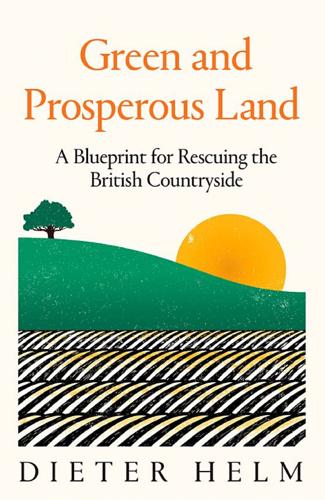
Green and Prosperous Land: A Blueprint for Rescuing the British Countryside
by
Dieter Helm
Published 7 Mar 2019
In Alladale in Scotland, a plan to introduce wolves is one that sees the Scottish uplands as a giant wildlife park, fenced in from the outside world (as is Knepp Castle).3 It would in effect be a large-scale extensive zoo, the Alladale Wilderness Reserve. This is not rewilding. It is very controlled, environmental engineering on a grand scale, in part because one person can own so much of the land. The animals that would be most strictly controlled are people, as paying safari travellers. The Alladale Wilderness Reserve has so far done much good conservation work, and has taken a more creative path compared with the conventional estate management for game. These are considerable benefits, as at Knepp, but wild it is not. For some rewilders, the key is about getting rid of human influences, as if there is a state of nature apart from us which must be protected from us.
…
This active management of nature by us, and with us very much in mind, is the opposite of rewilding. It is a man-made and man-managed nature, for which we take responsibility. It allows us to create something better for the future, and to maximise the benefits to us that will follow. None of this active approach rules out managed neglect of particular areas. The key difference in the managed case is that this is a planned decision and not an accident, and it is precise in its location and not general. It is a location-specific, controlled withdrawal of one type of land management in favour of another. The rewilding approach has a determinism to it which tends to ignore the transition as well as the desirability or otherwise of the end state.
…
Culling herbivores, like deer, is a key part of the management not just of the highlands, but of almost all woods and forests, and where it does not happen the results can be really damaging. Nor would it necessarily live up to our sense of beauty. Indeed, it is integral to rewilding that landscapes we have come to love would gradually disappear. Our woods and forests, which the rewilders would allow to expand rather than deliberately create, have been invaded by both native and alien species. The ‘wild’ of Britain did not have fallow deer, sika deer or muntjacs. It had only red deer and roe deer, themselves food for the top predators.

The Microbiome Solution
by
Robynne Chutkan M.D.
Published 5 Aug 2015
The Hygiene Hypothesis and Our Modern Plagues Chapter 4. Pharmageddon and the Antibiotic Paradox Chapter 5. Dysbiosis—Do You Have It? Chapter 6. Are Our Bacteria Making Us Fat? Chapter 7. Modern Microbial Disruptors part 3 • Rewilding Ourselves Chapter 8. Introducing the Live Dirty, Eat Clean Plan Chapter 9. The Live Dirty, Eat Clean Diet Chapter 10. The Live Dirty Lifestyle Chapter 11. A Rewilding Approach to Illness Chapter 12. Bugs over Drugs: Probiotics and Other Supplements Chapter 13. Everything You Wanted to Know About Stool Transplants but Were Afraid to Ask part 4 • Recipes Chapter 14.
…
Chapter 10, “The Live Dirty Lifestyle,” gives you practical rewilding advice for everyday life, from simple things like throwing out the hand sanitizer and opening a window, to specific details like which ingredients to avoid in personal care products. You’ll learn how to groom and care for yourself without stripping away the microbial soil that’s the key to cultivating healthy hair and skin, and become familiar with microbiome-friendly recipes for beauty products straight from the garden and kitchen. I’ll share the Live Dirty dos and don’ts that I follow in my own life that can help rewild you, your family, and your home.
…
Since then, I’ve seen hundreds of patients with stories similar to hers, and I’ve become even more convinced that damage to the microbiome—the trillions of organisms that call our digestive tract home—is at the root of many of our current health problems. Figuring out how to undo that damage and “rewild” ourselves has become a focus of my medical practice and a personal journey in our household. Living a little dirtier and eating a little cleaner is definitely part of the fix. Unwilding Ourselves Our ancestors had a symbiotic relationship with their microbes that evolved over millions of years and served them well.
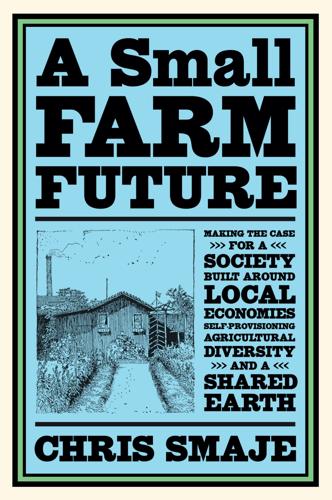
A Small Farm Future: Making the Case for a Society Built Around Local Economies, Self-Provisioning, Agricultural Diversity and a Shared Earth
by
Chris Smaje
Published 14 Aug 2020
This has applied among colonisers as well as the colonised – for example the mountaineers of Appalachia I mentioned at the beginning of this chapter, whose public image in the early years of the independent United States quickly sank from that of resourceful pioneers to semi-racialised and degenerate hillbillies.57 I invoke the language of ‘wildness’ here only cautiously because of the contemporary re-wilding movement, which often misses the point that if we’re to successfully re-wild the Earth’s habitats we need to re-wild human cultures as well, including our agricultures. In view of the tight farming situations we face in the present world, self-provisioning through agroforestry is probably about as wild as we can get. The most troubling counterarguments against this case for human re-wilding are, first, that it’s a path of economic insecurity, dearth and potential starvation and, second, that it’s impractical in today’s vastly populated world.
…
CHAPTER NINE The Fruited Thorn: Agroforestry Futurology nowadays involves a lot of utopian visions of centralised (and often vegan) urban civilisation pursuing high-tech, high-yielding grain-based agriculture that ‘spares’ a lot of land for re-wilding. I’m trying to build a case for something different: a distributed, omnivorous, de-centralised agricultural order in which re-wilding applies not only to other plants and animals but also to some degree to ourselves. We’d share land with wild organisms and keep grain farming to a minimum in favour of labour-intensive vegetable gardens, default livestock and woodland produce.
…
: the model identifies eight types of farmer, food producer or land user: Home gardeners, engaging in backyard production City farmers or community gardeners, producing food in small urban green spaces Market gardeners producing fruit and vegetables intensively on small, probably peri-urban, plots Smallholders, producing all their own food, along with small surpluses, on small rural holdings Mixed-arable farmers, producing a mixture of animal and staple plant products (with an emphasis on the latter) for commercial sale from larger rural holdings Dairy farmers, producing milk from dairy cows with some beef as a by-product Fisherfolk, producing wild seafood from inshore fisheries Re-wilders and re-provisioners The model doesn’t provide for specialist beef or sheep farming, although that’s an additional margin that could be exploited. Instead I leave room for people who want to turn some of the country’s pastureland over to wilderness (the re-wilders) and for people whose operations service the wider farm economy, for example by producing timber, seeds, hay or bloodstock (the re-provisioners). Here I assume that these two categories produce no directly usable food, though this assumption is over-restrictive.
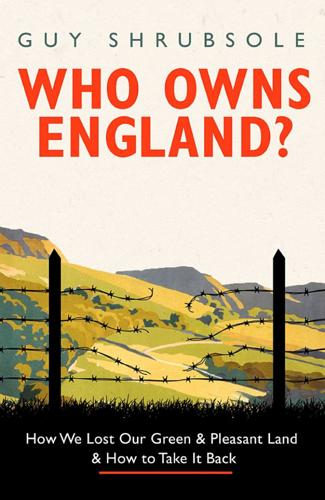
Who Owns England?: How We Lost Our Green and Pleasant Land, and How to Take It Back
by
Guy Shrubsole
Published 1 May 2019
For all its historic role in preserving the Lakes in its degraded ecological state, the National Trust has been quietly shifting towards a greater acceptance of rewilding in recent years. Its rewilding pilot at Ennerdale has seen a boom in populations of marsh fritillary butterflies, Arctic charr and the native juniper trees that gave the valley its name in Viking times. Professor Alasdair Driver, a veteran ecologist and adviser to the charity Rewilding Britain, calls Ennerdale ‘one of England’s best rewilding project areas’. But the Trust is also wary of voicing full-throated support for rewilding following the furore it provoked by trying to reforest parts of Thorneythwaite, a 300-acre Lakeland farm it bought in 2016.
…
Far better, Monbiot and others argue, to halt the intensive management and overgrazing and let nature take its course. Proponents of ‘rewilding’ point out that landscapes like the Lake District are simply preserving in aspic a degraded environment that’s almost entirely artificial. Not only is this a disaster for nature; it’s also making flooding worse – torrential rainfall simply flashes off denuded hillsides, drowning nearby towns and villages, as happened in the Lakes during the winter of 2015. But reduce sheep numbers, rewilding advocates suggest, and self-willed nature will quickly spring back – bringing with it not only much greater diversity of wildlife, but a far greater resilience to worsening floods and our changing climate.
…
But reduce sheep numbers, rewilding advocates suggest, and self-willed nature will quickly spring back – bringing with it not only much greater diversity of wildlife, but a far greater resilience to worsening floods and our changing climate. Of course, allowing the Lakes to rewild would change the character of a landscape that many have grown used to and cherish. Plenty of self-proclaimed conservationists want to conserve the Lake District for its aesthetic beauty, farming traditions and cultural landscape, rather than for the species it supports. ‘People ask me why I’m against rewilding,’ contends Rory Stewart, the MP for a large part of the Lakes, ‘and the answer is because of the human in the landscape … these are the hills across which Coleridge walked from Keswick to have dinner with Wordsworth.’

A New History of the Future in 100 Objects: A Fiction
by
Adrian Hon
Published 5 Oct 2020
Some of this environmental change has been down to factors outside of human control, but much can be laid at our feet. For decades, turning Saï Island’s ecological clock back to its original condition—“rewilding” it—seemed impossible. But in the 2050s, with our powers and resources recovering from The Melt, a question arose in Sudan: now that we finally have the capability to restore and rewild Saï Island, should we do it? Many other places had already been rewilded by then; the Area de Conservación Guanacaste in Costa Rica and a substantial part of the North American Great Plains had been restored to a wilderness state in the late twentieth and early twenty-first centuries.
…
In the latter case, a number of Pleistocene species were controversially introduced by the 500 Project, including the onager, the grey wolf, and the African lion (standing in as the American lion). Environmental sociologist Professor Marcy MacGregor explains the motivation behind the rewilding projects: Take your pick! For some, it was an inherited guilt about ruining the environment. For others, it was sheer curiosity. Of course, some argued that the value or authenticity of rewilding merely lay in the eye of the beholder, but overall there was strong and broad public support for rewilding on the back of the related idea of a half-empty world, and this support was bolstered by a number of wider contemporary social trends. The first of those trends was driven by the plummeting cost of construction drones, powered by vast new solar arrays constructed in northwest Sudan.
…
Life expectancy in Sudan had reached almost eighty-five years, which meant that people felt they were more likely to benefit from the results of rewilding, especially if you bear in mind that there had already been rapid, destructive climate change over the prior decades. And when people began thinking about their children and grandchildren, then even projects that might take a couple of centuries to come to fruition didn’t seem entirely ridiculous. More than a dozen rewilding projects were started in Sudan in the ’50s and ’60s, including an extension of the Dinder National Park and the reintroduction of Lacaon Pictus (the Painted Hunting Dog) in Mirgissa and Dabenarti Island. One site that was not rewilded, however, was Saï Island.

The Climate Book: The Facts and the Solutions
by
Greta Thunberg
Published 14 Feb 2023
We would like to see governments, public bodies, businesses, farmers, foresters, fishers and local communities coming together to develop collaborative place-based visions for the ecological restoration of our land and seas, which catalyse the economic restoration of communities. We believe that a new and thriving ecosystem of employment can be built around the healing and rewilding of nature. For example, recent analysis by Rewilding Britain reveals that, across England, rewilding projects have resulted in a 54 per cent increase in full-time-equivalent jobs. Not only has the number of jobs increased, so has their diversity. Rewilding can enrich lives and help us to reconnect with wild nature while providing a sustainable future for local communities. Rewilding enables us to begin to heal some of the great damage we have inflicted on the living world and, with it, the wounds we have inflicted on ourselves.
…
Lorraine Whitmarsh / Professor of Environmental Psychology, University of Bath; Director of the Centre for Climate Change and Social Transformations. 5.3 Towards 1.5°C Lifestyles Kate Raworth / Co-founder of Doughnut Economics Action Lab and Senior Associate at Oxford University’s Environmental Change Institute. 5.4 Overcoming Climate Apathy Per Espen Stoknes / A psychologist, TEDGlobal speaker and Co-director of the Centre for Sustainability at the Norwegian Business School. 5.5 Changing Our Diets Gidon Eshel / Professor of environmental physics at Bard College, New York. 5.6 Remembering the Ocean Ayana Elizabeth Johnson / Marine biologist, co-founder of the policy think tank Urban Ocean Lab, co-editor of All We Can Save, and co-creator of How to Save a Planet. 5.7 Rewilding George Monbiot / Writer, film-maker and environmental activist; author of a weekly column for the Guardian as well as various books and videos. Rebecca Wrigley / Founder and Chief Executive of Rewilding Britain and has worked in conservation and community development for thirty years. 5.8 ‘We now have to do the seemingly impossible’ / Greta Thunberg 5.9 Practical Utopias Margaret Atwood / Booker Prize–winning author of more than fifty books of fiction, poetry and critical essays. 5.10 People Power Erica Chenoweth / Political scientist, Professor at Harvard University. 5.11 Changing the Media Narrative George Monbiot / Writer, film-maker and environmental activist; author of a weekly column for the Guardian as well as various books and videos. 5.12 Resisting the New Denialism Michael E.
…
It is hard to have magnificent experiences in nature, to leave ourselves and our troubles behind, if scarcely any of it is left. But there is a way that we can begin to mend the living planet and our relationship with it. It is a variety of positive environmentalism which offers the hope of recovery, of re-enchantment with a world that often seems crushingly bleak. It is ‘rewilding’: the mass restoration of the planet’s ecosystems. In essence, rewilding means allowing natural processes to resume. It involves, where people agree, reintroducing missing species, removing fences, blocking drainage ditches and controlling especially virulent invasive exotic species, but otherwise, to the greatest extent possible, allowing nature to find its own way.
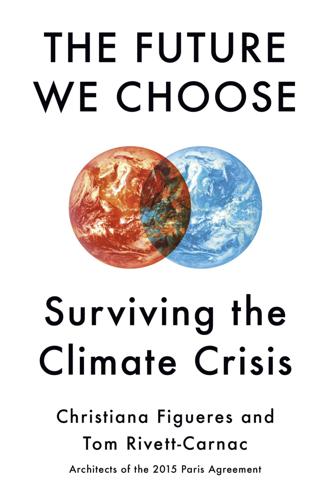
The Future We Choose: Surviving the Climate Crisis
by
Christiana Figueres
and
Tom Rivett-Carnac
Published 25 Feb 2020
Their impact is so pronounced that urban properties surrounded by trees are worth an average of 20 percent more than those that are not.59 If we are to make the transition to urban living that is needed to provide space for nature to thrive, we need to bring nature into cities and integrate it as never before. * * * — Let nature flourish. The term rewilding has been coined to describe the growing practice of allowing land to return to its natural processes. Rewilding has the potential to radically change the carbon balance of the atmosphere and to preserve the web of life. Multiple large- and small-scale rewilding initiatives are already taking place all over the world. An excellent example is the Knepp Wildland Project in West Sussex, England. In 2001, the project obtained more than 3,500 acres of land that had been farmed intensively since World War II.
…
.: Berrett-Koehler, 2017. NATURE Baker, Nick. ReWild: The Art of Returning to Nature. London: Aurum, 2017. Brown, Gabe. Dirt to Soil: One Family’s Journey into Regenerative Agriculture. London: Chelsea Green, 2018. Eisenstein, Charles. Climate: A New Story. Berkeley, Calif.: North Atlantic Books, 2018. Glassley, William E. A Wilder Time: Notes from a Geologist at the Edge of the Greenland Ice. New York: Bellevue Literary Press, 2018. Kolbert, Elizabeth. The Sixth Extinction: An Unnatural History. London: Picador, 2015. Monbiot, George. Feral: Rewilding the Land, Sea and Human Life.
…
There are still slums, but the trees, largely responsible for countering the temperature rise in most places, have made things far more bearable for all. Reimagining and restructuring cities was crucial to solving the climate challenge puzzle. But further steps had to be taken, which meant that global rewilding efforts had to reach well beyond the cities. The forest cover worldwide is now 50 percent, and agriculture has evolved to become more tree-based.3 The result is that many countries are unrecognizable, in a good way. No one seems to miss wide-open plains or monocultures. Now we have shady groves of nut and fruit orchards, timberland interspersed with grazing, parkland areas that spread for miles, new havens for our regenerated population of pollinators.4 Luckily for the 75 percent of the population who live in cities, new electric railways crisscross interior landscapes.

Carbon: The Book of Life
by
Paul Hawken
Published 17 Mar 2025
GO TO NOTE REFERENCE IN TEXT Clark’s nutcrackers remember: University Of New Hampshire, “Researcher Uncovering Mysteries of Memory by Studying Clever Bird,” ScienceDaily, October 12, 2006, sciencedaily.com/releases/2006/10/061012094818.htm; Lesley Evans Ogden, “Better Know a Bird: The Clark’s Nutcracker and Its Obsessive Seed Hoarding,” Audubon, November 8, 2016, audubon.org/news/better-know-bird-clarks-nutcracker-and-its-obsessive-seed-hoarding. GO TO NOTE REFERENCE IN TEXT Ten: Parlance It is a polyglot language: Willem Larsen with “Urban Scout” Peter Michael Bauer, “E-primitive: Rewilding the English Language,” Peter Michael Bauer, February 4, 2008, petermichaelbauer.com/e-primitive-rewilding-the-english-language. GO TO NOTE REFERENCE IN TEXT All of the world’s: Zhanyun Wang et al., “Toward a Global Understanding of Chemical Pollution: A First Comprehensive Analysis of National and Regional Chemical Inventories,” Environmental Science & Technology 54, no. 5 (2020): 2575–84, doi:10.1021/acs.est.9b06379.
…
GO TO NOTE REFERENCE IN TEXT work of biologist Frans Vera: Tree, Wilding, 57, Kindle. GO TO NOTE REFERENCE IN TEXT “giving nature the space”: Tree, Wilding, 9, Kindle. GO TO NOTE REFERENCE IN TEXT white stork nested: Caitlin Moran, “Why the Knepp Rewilding Project Is Truly Magical,” The Times, April 28, 2023, thetimes.co.uk/article/why-the-knepp-rewilding-project-is-truly-magical-m68trp899. GO TO NOTE REFERENCE IN TEXT The butterfly population exploded: Tree, Wilding, 168, 176, 268–69, Kindle. GO TO NOTE REFERENCE IN TEXT wildland carbon capture rates: “The Book of Wilding: Knepp’s Soil Carbon Journey,” Agricarbon, June 9, 2023, agricarbon.co.uk/the-book-of-wilding-knepp-soil-carbon.
…
People can create the conditions that engender fertile dark soils and have been doing so for thousands of years. However, only the inhabitants of soil create soil. Millions of years of coevolution reside in and upon the earth, forming, in the words of Peter McCoy, the “skin of the world, tattooed with the legacies of its inhabitants.” There is a growing movement to rewild ecosystems and bring back lost or declining species. Soil is the wildest organism of all. Unless we breathe life back into the ground, the web of life will fail. Conversely, soil will atrophy and perish without the myriad creatures that create it. Billions of microbes and fungi of indecipherable complexity reside in the soil.
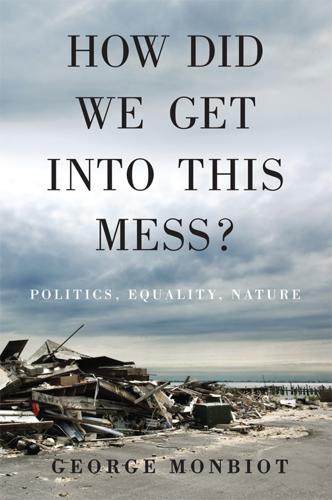
How Did We Get Into This Mess?: Politics, Equality, Nature
by
George Monbiot
Published 14 Apr 2016
These features catch the sediment and the tree trunks and rocks which otherwise pile up on urban bridges, and take much of the energy and speed out of the river. Rivers, as I was told by the people who had just rewilded one in the Lake District – greatly reducing the likelihood that it would cause floods downstream – ‘need something to chew on’.19 There are one or two other such projects in the UK: Paterson’s department is funding four rewilding schemes, to which it has allocated a grand total of, er, £1 million.20 Otherwise, the Secretary of State is doing everything he can to prevent these lessons from being applied. Last year he was reported to have told a conference that ‘the purpose of waterways is to get rid of water’.21 In another speech he lambasted the previous government for a ‘blind adherence to Rousseauism’ in refusing to dredge.22 Not only will there be more public dredging, he insists, but there will also be private dredging: landowners can now do it themselves.23 After he announced this policy, the Environment Agency, which is his department’s statutory adviser, warned that dredging could ‘speed up flow and potentially increase the risk of flooding downstream’.24 Elsewhere, his officials have pointed out that, ‘Protecting large areas of agricultural land in the floodplain tends to increase flood risk for downstream communities.’25 The Pitt Review, commissioned by the previous government after the horrible 2007 floods, concluded that, ‘Dredging can make the river banks prone to erosion, and hence stimulate a further build-up of silt, exacerbating rather than improving problems with water capacity.’26 Paterson has been told repeatedly that it makes more sense to pay farmers to store water in their fields, rather than shoving it off their land and into the towns.
…
Classification: LCC HN18.3 .M66 2016 | DDC 301.09/051– dc23 LC record available at http://lccn.loc.gov/2015050747 Typeset in Fournier MT by Hewer Text Ltd, Edinburgh Printed in the US by Maple Press To Rebecca, Hanna and Martha Contents Introduction Part 1: There Is Such a Thing as Society 1.Falling Apart 2.Deviant and Proud 3.Work-Force 4.Addicted to Comfort 5.Dead Zone 6.Help Addicts, but Lock Up the Casual Users of Cocaine Part 2: Lost Youth 7.Rewild the Child 8.The Child Inside 9.Amputating Life Close to Its Base 10.‘Bug Splats’ 11.Kin Hell 12.The Sacrificial Caste 13.A Modest Proposal for Tackling Youth 14.Pro-Death Part 3: The Wild Life 15.Everything Is Connected 16.Civilisation Is Boring 17.End of an Era 18.The Population Myth 19.The Dawning Part 4: Feeding Frenzy 20.Sheepwrecked 21.Ripping Apart the Fabric of the Nation 22.Drowning in Money 23.Small Is Bountiful Part 5: Energy Vampires 24.Leave It in the Ground 25.Applauding Themselves to Death 26.The Grime behind the Crime 27.Going Critical 28.Power Crazed Part 6: Riches and Ruins 29.The Impossibility of Growth 30.Curb Your Malthusiasm 31.Kleptoremuneration 32.The Self-Attribution Fallacy 33.The Lairds of Learning 34.The Man Who Wants to Northern Rock the Planet 35.The Gift of Death Part 7: Dance with the One Who Brung You 36.How the Billionaires Broke the System 37.Plutocracy’s Boot Boys 38.How Did We Get Into This Mess?
…
The drugs charity Transform has addressed this question, but only for the UK, where the results are clear-cut: prohibition is the worse option.13 As far as I can discover, no one has attempted a global study. Until that happens, Mr Costa’s opinions on this issue are worth as much as mine or anyone else’s: nothing at all. 30 June 2009 Part 2 Lost Youth 7 Rewild the Child What is the best way to knacker a child’s education? Force him or her to spend too long in the classroom. An overview of research into outdoor education by King’s College London found that children who spend time learning in natural environments ‘perform better in reading, mathematics, science and social studies’.1 Exploring the natural world ‘makes other school subjects rich and relevant and gets apathetic students excited about learning’.

The Wood Age: How One Material Shaped the Whole of Human History
by
Roland Ennos
Published 18 Feb 2021
By 2030 this could amount to almost 120,000 square miles of regenerating forest. And even greater areas are already being rewilded in North America, the largest being the Yellowstone to Yukon Conservation Initiative, which seeks to rewild a strip almost two thousand miles long and forty miles wide, an area of around half a million square miles. And across the world, Allan Savory, the Zimbabwean ecologist, has estimated that 19 million square miles of degraded grassland could be restored. The new areas of woodland and scrub that spring up in rewilded sites not only promote high levels of biodiversity, hosting wildflowers, insects, and birds, but they also absorb carbon dioxide and help reverse climate change, just as has been happening over the last century on the abandoned farms of New England and New Zealand.
…
There is a rapid expansion of green woodworking, carpentry, and wood turning that is producing furniture, oak buildings, and all manner of the useful tools and items that would have been familiar to our ancestors. The woodlands are starting to act once again as the foundations of a small-scale circular economy. Meanwhile, the rewilding movement is starting to reclaim large areas of marginal farmland for natural forests and scrub. Trials are showing that this can have huge benefits even in the heavily modified countryside of Britain. On a relatively small scale, discontinuing plowing of heavy clay soils in lowland areas, as at the Knepp Estate in Sussex, England, has allowed the regrowth of scrub and deciduous woodland, while stocking the land with low densities of cattle and pigs is re-creating the wood pasture of medieval times.
…
our effect on the world’s forests has accelerated rapidly: For more details see Williams (2002). Chapter 15: Mending Our Strained Relationship in all wood products, around 4.5 MJ/lb of dry wood: See Jones (2019). the benefits of urban trees are considerable: See my mini-review on the physical benefits of urban trees in Hirons and Thomas (2018). Meanwhile, the rewilding movement is starting to reclaim: See Tree (2017). References Anthony, D. A. 2007. The Horse, the Wheel, and Language: How Bronze-Age Riders from the Eurasian Steppes Shaped the Modern World. Princeton, NJ: Princeton University Press. Aranguren, B., A. Revedin, N. Amico, F. Cavulli, G. Giachi, S.
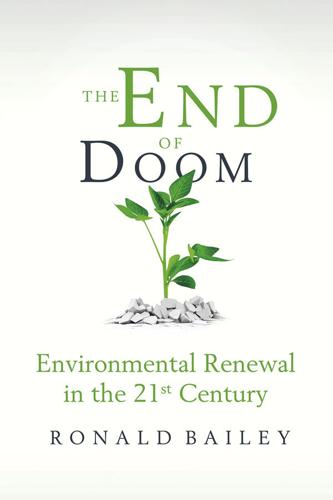
The End of Doom: Environmental Renewal in the Twenty-First Century
by
Ronald Bailey
Published 20 Jul 2015
Only when the ecologically correct ideologies that blind us are upended can we can see the real nature that is all around us. Baselines are properly transformed into aesthetic choices rather than “scientific” mandates. Consider the ambitious Pleistocene Rewilding proposal in which proxy wild species from Africa might be used to replace those North American species killed off by early peoples. African cheetahs might chase after pronghorns, and elephants graze where mastodons once roamed. A small version of rewilding is the fascinating Oostvaardersplassen experiment in the Netherlands, where researchers are designing an ecosystem that aims to mimic what Northern Europe might have looked like 10,000 years ago.
…
Trends in Ecology and Evolution, July 2013, 396–401. www.sciencedirect.com/science/article/pii/S0169534713000335. “In truth, ecologists and conservationists”: Martin Jenkins, “Prospects for Biodiversity,” Science 302.5648 (November 14, 2003): 1175–1177. www.zo.utexas.edu/courses/Thoc/Readings/Jenkins_Science2003.pdf. Pleistocene Rewilding proposal: Josh Donlan et al., “Re-Wilding North America.” Nature, August 18, 2005, 913–914. izt.ciens.ucv.ve/ecologia/Archivos/ECO_POB%202010/ECOPO4_2010/Ehrenfeld%202010.pdf. “Paleolithic landscape at the Oostvaardersplassen”: Sagoff, “What Does Environmental Protection Protect?” Ethics, Policy, & Environment, 16, No. 3, (2013): 239–257.
…
See El Niño Southern Oscillation Environmental Defense Fund Environmental Kuznets Curve (EKC) Environmental Protection Agency (EPA) Erten, Bilge estrogen, synthetic Europe biotech crops viewed by carbon trading in industrialization in meat industry in rewilding EWG. See Energy Watch Group extinction current rates of deforestation and endangerment or history nature restoration and new species and ocean animal predictions protection from recovery rewilding ExxonMobil famine predictions fertility rate and Green Revolution solution to Malthus’s FAO. See Food and Agriculture Organization Farrell, Paul FDA. See Food and Drug Administration female health Ferdinand, Franz Ferris, Timothy fertility rates decline per economists decline per evolutionary biologists developing nations economic freedom and education and food production, famine and globalized trade and income and innovation and life expectancy and mortality rates and rule of law and sperm quality and count decline fertilizers biotech efficiency with climate mitigation and resource depletion by Fettweis, Christopher fisheries floods food aid labeling Food and Agriculture Organization (FAO) Food and Drug Administration (FDA) food production.

Whole Earth Discipline: An Ecopragmatist Manifesto
by
Stewart Brand
Published 15 Mar 2009
Some fifty-seven Indian tribes in nineteen states are members of the Intertribal Bison Cooperative, which helps restore buffalo to tribal lands to promote “cultural enhancement, spiritual revitalization, ecological restoration and economic development.” Montana State University has a Center for Bison Studies. As people move out of the high plains “buffalo commons,” bison are moving back in. • Paul Martin’s rewilding vision joins a similar one that has been promoted since 1991 by Dave Foreman, a founder of Earth First! Foreman’s version of rewilding, inspired by ecologist Michael Soulé, is based on keystone carnivores instead of herbivores. In Rewilding North America (2004), Foreman writes, “Wolves, cougars, lynx, wolverines, grizzly and black bears, jaguars, sea otters, and other top carnivores need to be restored throughout North America in ecologically effective densities.”
…
In 1999 the originator of the Pleistocene overkill theory, Paul Martin, was inspired by a conversation with Kenya’s David Western to propose bringing the big tuskers back onto the American landscape as an element of “resurrection ecology” for the continent. Martin elaborates on the idea in Twilight of the Mammoths: Ice Age Extinctions and the Rewilding of America (2005). He was moved by Western’s description of the Amboseli Park elephants, who browse on trees and shrubs and continually swap places with Masai cattle, who graze on grass. Once the grass is grazed down, shrubs and trees take over; this attracts the elephants, who knock down and eat the woody plants, restoring the area to grassland suitable for cattle.
…
They’re awake! They’re moving. They’re looking over their shoulders. They aren’t loafing in big herds in open river valleys.” And the beaver are back. Conservation biologist Josh Donlan has blended the Martin and Foreman visions, saying it is time to reverse the “Pleistocene overkill” with a “Pleistocene rewilding.” As lead author (with Foreman, Soulé, Paul Martin, and others) of a 2005 paper for the American Naturalist, Donlon proposes to introduce “surrogate” replacements for the lost North American megafauna. African cheetahs, along with some African lions, would replace the long-vanished American cheetah that made our pronghorn antelopes so speedy.

Built to Move: The Ten Essential Habits to Help You Move Freely and Live Fully
by
Kelly Starrett
and
Juliet Starrett
Published 3 Apr 2023
There’s little sense in taking a romantic view of our Paleolithic selves—nothing dreamy about the days when you could die from something as simple as an abscessed tooth. Yet we could all use some of what, borrowing a term from conservation biology, we like to call rewilding of the body. Rewilding, in general terms, is defined as “restoring and protecting natural processes.” Like any ecosystem, our bodies have an inherent design for optimal functioning. Everything in this book is geared toward reinstating that natural state of affairs. Rewilding. It’s clear that we need it. As is well documented, we are now a society that drives to the gym, has our groceries delivered, and logs more screen time than even Steve Jobs and Bill Gates in their wildest dreams could have imagined.
…
A related benefit is that it undoes some of the less effective (and sometimes pain-inducing) compensatory positions the body adopts after sitting in a chair (or on a couch or in a car; pick your body-always-at-a-right-angle poison) for hours at a time, day after day. Our bodies are built to sit in ground-based positions, so when you spend some time on your nice parquet floor or plush rug each day, you’re helping to “rewild” your hip joints. Sitting on the floor restores their range of motion, which will not only make it easier to get up and down, but also potentially remedy the musculoskeletal issues associated with so much chair time. Let’s break it down a little further. CHAIR WARNING Kids have no trouble sitting on the ground in all different kinds of positions for hours at a time.
…
Popular workouts like Peloton and SoulCycle and other activities that put you on a bike or in a boat with a paddle or on a stationary rower for lengthy amounts of time play into what has now become your body’s preferred posture. The great thing about the human body is that it adapts, then it adapts again. You can, in other words, rewild your hip, but it takes a conscious effort. When we look at people in high-level sports environments who are having problems like knee or back pain, one of the things we do is survey the shapes and positions they’re moving in throughout the day—and the shapes and positions they’re not moving in throughout the day.
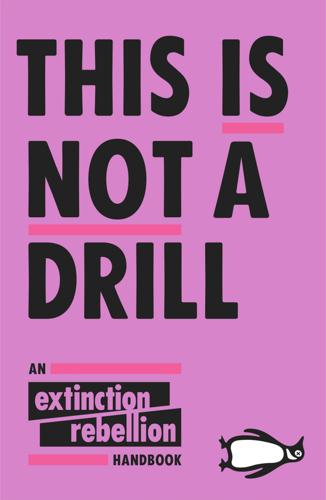
This Is Not a Drill: An Extinction Rebellion Handbook
by
Extinction Rebellion
Published 12 Jun 2019
The problem is power. The problem is inequality. The problem is greed, and corruption, and money, and this tired, broken system. The problem is our complete and utter failure to imagine any meaningful alternative. Perhaps this book will go some way to changing that. We need to rewild the world. That much is obvious. But first we need to rewild the imagination. We must all learn how to dream again, and we have to learn that together. To break down the old ways of thinking and to move beyond our current conception of what is and what is not possible. This book is supposed to be a handbook. A book that you will keep by you, that will help you, inform you, empower you to act.
…
That will pose huge communications challenges if we want to enable compassionate and collaborative responses from each other as much as possible. Helping people, with psychological support, to let go of some old attachments and aspirations will be important work. Third, we need to explore the restoration of attitudes and approaches to life and organization that our hydrocarbon-fuelled civilization eroded. Examples include rewilding landscapes so they provide more ecological benefits and require less management, changing diets back to match the seasons, rediscovering non-electronically powered forms of play and increasing community-level productivity and support. Fourth, as we contemplate endings, our thoughts turn towards reconciliation: with our mistakes, with death and, some would add, with God.
…
This leads to us treating nature as something external rather than as a life-support system we depend upon. At the same time, we need to unlock a new ‘human–city–nature’ deal, which is slowly emerging through restorative and regenerative practices in urban nature. A constellation of pioneering innovators and ideas, including rewilding, permaculture, urban agriculture, continuous productive urban landscapes and blue-green infrastructure is driving this. It is underpinned by a broader shift in the relationship between nature and the city away from resource extraction, private profit, linear notions of progress and privatization and towards equality, stewardship, nature-based regeneration and restorative cyclical and interconnected relations.
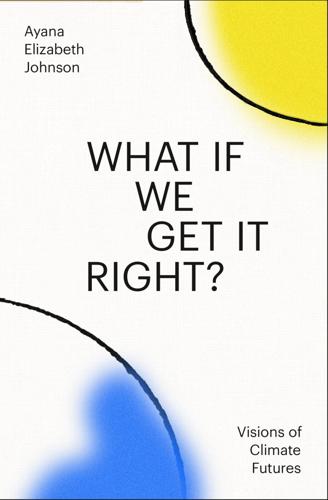
What If We Get It Right?: Visions of Climate Futures
by
Ayana Elizabeth Johnson
Published 17 Sep 2024
—or a Hippocratic Oath that enables you to know whether something is good or bad. Ayana: I like the idea of an oath like that.[*70] For Design Emergency, you also covered the idea of “rewilding.” Paola: Alice interviewed Isabella Tree, a well-known British author. For more than twenty years, Isabella has been working on Knepp, a castle and estate in West Sussex, England, together with her husband Charlie Burrell, a conservationist. They found rewilding to be the best solution to bring back the land from a complex situation of mis- and overgrowth—not to mention an invasion of creeping thistle. They left this beautiful property to the animals and to nature, seemingly intervening as little as possible.
…
See clean energy development; justly sourced renewable energy repairing, 108 reparations: for Black and Indigenous Americans, 83, 85, 382, 391 for countries impacted by climate change, 148, 272–74 Required Reading: Climate Justice, Adaptation and Investing in Indigenous Power (Begay), 382 resilience. See climate resilience restoration initiatives, 25, 35, 37–38, 47 rewilding, 108–9, 406, 428 See also nature-inspired solutions restorative design, 112 reuse, 88, 89, 108 deconstruction, 89, 114 See also circularity revenue-based financing, 413 rewilding, 108–9, 406, 428 Rickman, Alan, 216 rights of nature, 261, 326–27, 376 Rise St. James, 335–36 ritual, 82 rivers: legal rights for, 326 See also water law Rockefeller Foundation, 263n rom-com, 209 Roosevelt Institute, 285 Roosevelt, Franklin D., 419 Roy, Arundhati, xiii rural communities, 49 Donahue on rural revitalization, 54–56, 58–63 See also coastal ecosystems and communities rural repopulation, 60–63 S Saami people, 38, 39 Sanders, Bernie, 153 Saudi Arabia, the Al Baydha Project, 44–45 scallops, 401 See also ocean farming SCAPE, 93 See also Orff, Kate school gardens, 73 schools, 344 Schwartz, Judith D.
…
But that perfectly captures her sparkling curiosity and the fact that she somehow, amidst all her projects, magically, has time. It’s a joy to witness her curator’s mind. Always looking, zooming in to parse, zooming out to contextualize, and reliably, joyously, spotting that one thing. This is perhaps the broadest ranging of the dialogues in this book. It arcs from recycling infrastructure, to rewilding, artificial intelligence, the role of museums, and the climate action value of a good list. _______ Ayana: What do you mean by the term “design emergency”? Paola: I believe design is like an enzyme that takes revolutions that happen in science, in politics, in technology, in history, and metabolizes them into life.
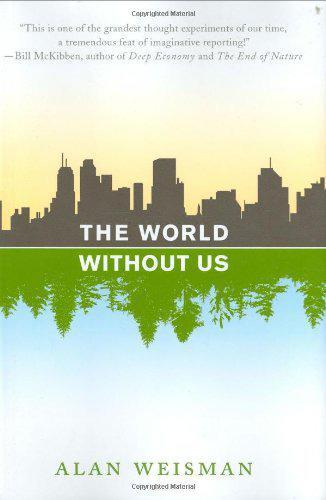
The World Without Us
by
Alan Weisman
Published 5 Aug 2008
But well before its famous transfiguration from Indian land to colonial real estate, priced to sell at 60 Dutch guilders, the mark of Homo sapiens was already on Manhattan. IN THE MILLENNIAL year 2000, a harbinger of a future that might revive the past appeared in the form of a coyote that managed to reach Central Park. Subsequently, two more made it into town, as well as a wild turkey. The rewilding of New York City may not wait until people leave. That first advance coyote scout arrived via the George Washington Bridge, which Jerry Del Tufo managed for the Port Authority of New York and New Jersey. Later, he took over the bridges that link Staten Island to the mainland and Long Island. A structural engineer in his forties, he considers bridges among the loveliest ideas humans ever conceived, gracefully spanning chasms to bring people together.
…
Gaia theorist James Lovelock prophesies that unless things change soon, we’d better stash essential human knowledge at the poles in a medium that doesn’t require electricity. Yet Dave Foreman, founder of Earth First!, a cadre of environmental guerrillas who had all but given up on humans deserving a place in the ecosystem, now directs The Rewilding Institute, a think tank based on conservation biology and unapologetic hope. That hope both includes, and depends on, the consecration of “mega-linkages”—corridors that would span entire continents, where people would be committed to coexisting with wildlife. In North America alone, he sees a minimum of four: they would span the continent’s dividing spine, the Atlantic and Pacific coasts, and the Arctic-boreal.
…
Hyon Gak Sunim, and His Holiness the Dalai Lama for sharing their varied, thought-provoking contemplations of the Earth after us. Each professes one of the world’s great religions, but what filled my own soul most was their common humanity—a quality also shared by VHEMT’s Les U. Knight, who would bring nature’s human experiment to a close, and the Rewilding Institute’s Dave Foreman, who would keep us, but in cooperation, not conflict, with the rest of our planet’s species. I am particularly beholden to Dr. Wolfgang Lutz of the World Population Program, and his colleague Dr. Sergei Scherbov of the Vienna Institute of Demography at the Austrian Academy of Sciences, for assistance with translating a critical element of that formula into plain numbers—numbers that, quite literally, we could live with.
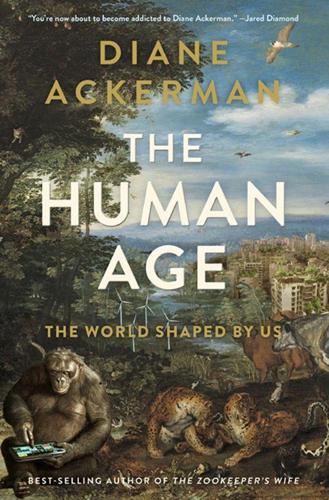
The Human Age: The World Shaped by Us
by
Diane Ackerman
Published 9 Sep 2014
In my experience, I tell her, Americans are deeply concerned about conservation, but we have clashing, fiercely defended opinions about how to do it. Some believe it’s essential to preserve our majestic national parks; some, that the parks are a lost crusade and that safeguarding animals in big preserves just hasn’t worked. Some believe in rewilding’s networks of “cores, corridors, and carnivores” to reconnect and rebalance unstable ecosystems; or Pleistocene rewilding—in North America, unloosing elephants, lions, bison, and cheetahs (the closest living relatives of the ancient native megafauna) to roam the Great Plains. Others argue that all of the above are last-epoch thinking, and, as an increasingly metropolitan species, we should weave more of the wild into the cities where we live.
…
Including a cloud forest and aerial walkways, the gardens collect rainwater, generate solar electricity, and bathe the air. Opening on June 29, 2012, they drew 70,000 nature-hungry visitors during the first two days. Although these new city oases won’t work for all species, or for all communities, the trend for rewilding our cities is growing. It’s positive, it enlightens, it’s widespread, and it helps. We need to retrofit and reimagine cities as planet-friendly citadels. They’re our hives and reefs. Sea mussels aren’t the only animals living in individual shells that are glued together. A GREEN MAN IN A GREEN SHADE As a child, Patrick Blanc loved going to the doctor’s office.
…
Other English bees have become prosperous city-dwellers, unassailed by agricultural pesticides, and there are now more sparrows, starlings, and blackbirds in the town gardens than in the open countryside. A sorry image of the English countryside, silent at dawn and devoid of wings, slinks through my mind. All the more reason I like Ann’s “try everything” mindset. Yes to national parks, to rewilding preserves, to wildlife corridors, to city shades of green, to DNA banking, and to any other strategy we can think of that will allow animals to pursue their dusty, feral ways and nature to stay replete with potent life forms. The office door swings gently open, and Chris Wade pokes his head in to take me on a tour of the lab.
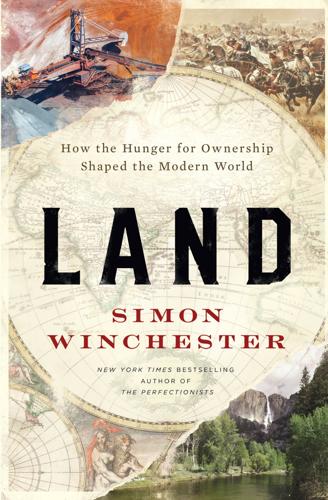
Land: How the Hunger for Ownership Shaped the Modern World
by
Simon Winchester
Published 19 Jan 2021
The pair would then wait some years, trying to manage their original dairy and beef cattle farm within this newly made wilded continuum, and see if in time Nature could do better at Knepp than Burrell and his family and their predecessors had ever managed to do. Charlie Burrell and Isabella Tree at their 3,500-acre estate at Knepp in southern England, which since 2000 has been a centerpiece of the rewilding movement. But unlike the Dutch cold-turkey, take-no-prisoners approach, following the pitiless rules of ecology that distressed so many, some measure of human help was offered to the animals under the Knepp estate’s supervision. Veterinarians visited to monitor the cows’ health. (A herdsman was taken on to search for the cattle who, though more numerous, now had a tendency to hide themselves deep in the new-growth woods and among the thickets and bushes that sprang up on the untended fields.)
…
The untended streams between these stands were soon stopped up by beaver dams, the resulting ponds thick with monarch butterflies and perching birds, the woods a wealth of eagles’ nests, armies of turkeys, promiscuous legions of black bears, coyotes, foxes, owls, porcupines, deer everywhere, and a rich assembly of returned birdlife that may well have been previously kept away by the din of all the threshing machinery and stone-wall building and loud human activity that once marked out a working farm. What many can see today in rural Massachusetts, where I live on a long-abandoned eighteenth-century property, is often classically rewilded land, rich with lurking animals and strange sounds, casually untended and with biological consequences unintended and unimagined. It is not only American farmers who have themselves become a migratory species—all across Europe there are abandoned farms, some of their former owners either having moved to better lands or, more usually, having decided that the prodigious challenges of agriculture are simply not for them and so having fled to the cities.
…
Wellington. New Zealand Government. 2015. Mitchell, John Hanson. Ceremonial Time: Fifteen Thousand Years on One Square Mile. Cambridge, MA. Perseus Books. 1984. Mitchell, John Hanson. Trespassing: An Inquiry into the Private Ownership of Land. Reading, MA. Perseus Books.1998. Monbiot, George. Feral: Rewilding the Land, the Sea, and Human Life. London. University of Chicago Press. 2014. Moss, Graham. Britain’s Wasting Acres: Land Use in a Changing Society. London. The Architectural Press. 1981. Neiwert, David A. Strawberry Days: How Internment Destroyed a Japanese American Community. New York. Palgrave Macmillan. 2005.
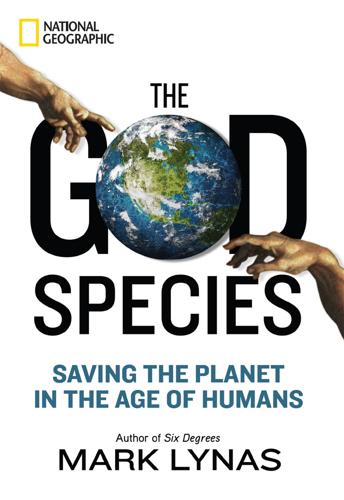
The God Species: Saving the Planet in the Age of Humans
by
Mark Lynas
Published 3 Oct 2011
As a result, Africa gives us the best idea of what a pre-human landscape might have looked like, with big animals like elephants browsing the undergrowth and herds of wild horses and cattle stirring up dust clouds across the savannah. Indeed, African ecosystems have been used as a model for proponents of “rewilding” parts of North America; if cheetahs, elephants, and camels can be imported into places like Montana, perhaps they could assume the ecological niches vacated by their extinct relatives, some have suggested.17 This is a romantic but vain hope, not least because the ancient homeland of these large surviving animals is seriously endangered by today’s generations of human beings.
…
My proposal for how this might work is a straightforward one, based on the fact that the human economy depends completely on the “natural capital” of a healthy biosphere. I suggest each country adds half a percent to Value Added Tax (VAT) with the proceeds raised specifically safeguarded for ecosystem and habitat restoration (“rewilding”) and preservation. This would be fair because a tax on consumption would mean that people pay in proportion to the environmental impact of their lifestyle patterns—with those who consume more bearing more of the cost—and as the economy grows so the yield from the tax would grow too. The amounts raised would be substantial, but barely noticeable to consumers: In the U.K. the rate of VAT has varied between 15 and 20 percent in just a couple of years in response to the changing economic situation while raising little protest.
…
In Costa Rica, abandoned cattle pasture is nurturing a flourishing young forest that in turn now supports a stable population of jaguars and other threatened fauna.67 A recent scientific paper looking at Latin America lists “similar patterns of ecosystem recovery following rural-urban migration” in Patagonia, northwest Argentina, Ecuador, Mexico, Honduras, and the montane deserts and Andean tundra ecosystems of Bolivia, Argentina, and Peru.68 Even in rich countries, proposals for “rewilding”—which I strongly support—only stand a chance of success in areas where rural populations have collapsed and formerly subsidized unproductive farms can be shut down to allow them to revert to nature. These observations, and many other studies around the world, suggest that environmentalists need to take land use more seriously.
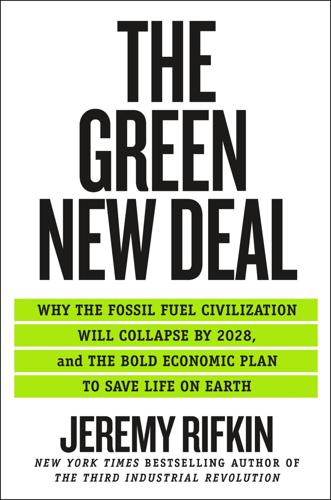
The Green New Deal: Why the Fossil Fuel Civilization Will Collapse by 2028, and the Bold Economic Plan to Save Life on Earth
by
Jeremy Rifkin
Published 9 Sep 2019
Spirited odes to the Age of Progress and the “perfectibility of Man” are seldom heard, and even then in muted tones. The Age of Resilience is upon us. The Green New Deal infrastructure is designed for this reality. Its components, applications, and operations will enable us to adapt to a once pacified and domesticated nature that is now rewilding—and hopefully to survive the escalating climate events that now envelop the Earth. That’s why a prospective Green Corps, Climate Corps, Infrastructure Corps, and Conservation Corps, made up of millions of young Americans, is more than just a career ladder to new business opportunities and employment.
…
These proposed agencies, at the federal, state, and local levels, will be among the first responders to climate events and in the disaster relief and recovery missions that will increasingly be a constant reality rather than a rare anomaly. Every community will need to be continually vigilant and engaged in disaster mode if we are to successfully adapt to the rewilding future that is now here. In this new world, national security is more about climate catastrophes than about military threats. Already, the Pentagon and state National Guards are reformulating their core missions and increasingly prioritizing critical operations around deployments to address climate events.
…
Anyone who tells you that the Green New Deal is going to preserve the way of life we know, sugarcoating the greening of society, is kidding you. Our tomorrows are going to be fraught with escalating climate events that are going to take an immense toll on our communities, our ecosystems, and our common biosphere. We are entering into a frontier of a new kind. Nature is rewilding, and we have to learn how to live with the uncertainty while adapting moment to moment to its surprises. We are going to need to cast aside any notion previously entertained about pacifying nature and molding and shaping it to serve humanity. Now we will need to regroup, gather our collective strength, learn to live by our wits, and find within ourselves the deep resilience that will allow us to survive and carry on into an unknown future that awaits our species and fellow creatures here on this little blue oasis in the universe.

The Ministry for the Future: A Novel
by
Kim Stanley Robinson
Published 5 Oct 2020
I am here to proudly speak for Cuba’s Sustainable Agriculture Revolution, on its eighty-fifth birthday. We are from Denmark’s Vitsohus Permakultur. I have been sent to you by Ecuador’s Cloudforest Agroforestry. I from Egypt’s Creating a Forest in the Desert. From England we represent Agroforestry Research Trust, the Eden Project, Knepp Estate Rewilding, Rewilding Britain, and River Restoration. From Eritrea we are Manazares Mango Regeneration, from Ethiopia, Ethiopia Rising, the Miracle of Merere, Regreening Ethiopia’s Highlands, Restoring Ecosystems, and the Watershed Movement. For France we happily represent Pur Projet Agroforestry. From Guatemala we are Reserva de Biosfera Maya and the Asociación de Comunidades Forestales.
…
The reforestation of that big island had been happening for well over a generation, and such was the fecundity of life that its rugged hillsides already looked densely forested, dark and wild. It had changed during Art’s time aloft, he said, and now the people of Madagascar were joining with Cubans and other island nations to help similar restoration efforts all over the world. Indonesia, Brazil, and west Africa were teammates in this effort. Rewilding, Art called it. They were rewilding down there. That night when Mary joined Art in his understudy, Madagascar was already behind them, but the air still seemed to carry its spicy scent. Art sat looking back at the island, bulking like a sea creature with thick napped fur. He seemed content. They sipped their whiskies for a while, enjoying a companionable silence.
…
Started as a glaciologist, hates meetings like this. Once said so right in meeting. Lived eight years on glaciers, she said. Wants back there. As for world cryosphere, it’s still melting. Huo Kaming, ecologist, Hong Kong. Biosphere studies, habitat restoration, refugia creation, animal protection, rewilding, biologically based carbon drawdown, watershed governance, groundwater recharge, the commons, the Half Earth campaign. She can do it all. Estevan Escobar. Chilean. Oceans. Prone to despair. Elena Quintero, agriculture. Buenos Aires. She and Estevan joke about Argentina-Chile rivalry. She cheers him up very skillfully.
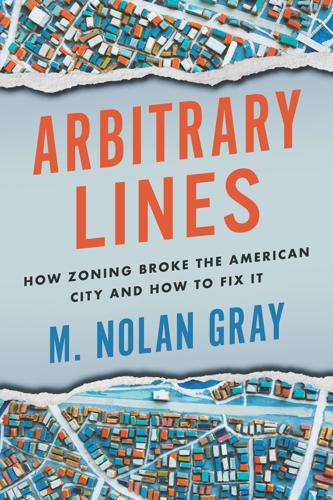
Arbitrary Lines: How Zoning Broke the American City and How to Fix It
by
M. Nolan Gray
Published 20 Jun 2022
United States Census Bureau, “We Are Gathered Here,” March 4, 2015, https://www.census.gov/library/visualizations/2015/comm/cb15-33_gathered_here.html. 6. Jose M. Rey Benayas, “Rewilding: As Farmland and Villages Are Abandoned, Forests, Wolves, and Bears Are Returning to Europe,” The Conversation, July 2, 2019, https://theconversation.com/rewilding-as-farmland-and-villages-are-abandoned-forests-wolves-and-bears-are-returning-to-europe-119316. In Europe, where the phenomenon is known as “rewilding,” the effects of this development can easily be seen from satellite imagery. 7. US Energy Information Administration, “Use of Energy Explained: Energy in Homes,” June 2021, https://www.eia.gov/energyexplained/use-of-energy/homes.php. 8.
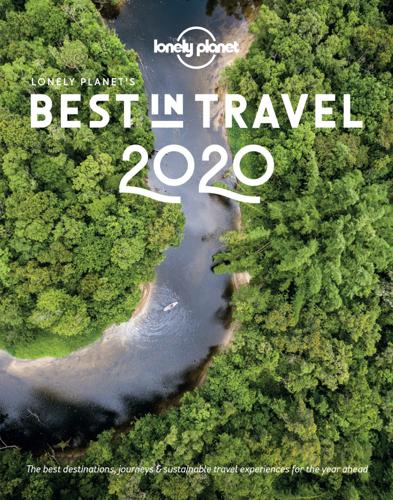
Lonely Planet's Best in Travel 2020
by
Lonely Planet
Published 21 Oct 2019
Of course there’s the famous Iguazú, one of the seven natural wonders of the world, but the rest of this rugged and temperate region will lead you well off the beaten path. Newly minted in 2018, Iberá National Park is poised to become one of Argentina’s greatest attractions. It’s an inspiring success story of how restoring wilderness can have a positive impact on adjacent communities. Rewilding is bringing back the native fauna, from the green-winged macaw to pampas deer and jaguars. Also, the country continues to be great value for travellers. Population: 3.7 million Main towns: Puerto Iguazú, Mercedes, Corrientes Language: Spanish Unit of currency: Argentine peso How to get there: From Buenos Aires, flights go to Puerto Iguazú, Corrientes and Resistencia; comfortable overnight buses link Mercedes to the capital.
…
Think South American safari: this watery expanse is a haven for wildlife. Camp among docile capybaras, ply through lily-choked waters to spy prehistoric-looking caimans and spot herds of rheas and flocks of reintroduced green-tipped macaws. Native jaguars and giant river otters are coming back, thanks to an innovative rewilding program based in the remote island outpost of San Alonso. Take in the region’s gaucho routes with a horseback-riding tour and admire the barefoot cowboys and banner-blue skies. In between excursions, soak up the slow pace of such colonial towns as Concepción and Colonia Pellegrini. While checking out the larger-than-life landscape of Iguazú Falls, explore the steamy subtropical forest of Misiones, stay at a jungle lodge in Puerto Iguazú, and visit the fascinating ruins of early Jesuit missions.

Novacene: The Coming Age of Hyperintelligence
by
James Lovelock
Published 27 Aug 2019
The use of carbon compounds such as petrol or diesel as fuels is wholly undesirable because it accelerates the heating of the Earth's atmosphere. It continues because political power goes to those who possess petroleum fuel. The burning of these fuels should be stopped as soon as possible. I think re-wilding and reforestation are worthwhile, but they should occur naturally. I know from personal experience that planting forests is no substitute and can even be harmful. In terms of energy generation, as I have said, I think wind and solar power are no substitute for nuclear energy produced in efficient and well-engineered power stations.
…
(Rossum's Universal Robots) 91, 114 capitalism, global 68 carbon 109 compounds 72 carbon dioxide 5, 10, 11, 57, 64, 105, 110 interglacial levels 55 possible implications of over-reducing levels 56 chalk 64 chlorofluorocarbons (CFCs) 38, 69, 71 cities 40, 50–53 Clarke, Arthur C. 59 climate change global warming 54, 57–8, 60–62, 65, 111 Paris Conference on (2016) 55 possible implications of over-reducing carbon dioxide levels 56 Clynes, Manfred 29 coal 33–5 communication cyborg 99–101 and evolution of speech 96–9 Marconi and electronic information transfer 128 telepathic 100–101 computer code 95 computer programs 79–80, 82, 83, 84 design limitations, lacking intuitive awareness 92 computing systems 92 based on an adaptive neural network 113–14 evolution of adaptive 114 parallel 82 PC chips 92 cosmos age of 3–4 and anthropic principle 25–7, 75, 89, 123 awakening to consciousness 3, 23, 26–8, 121–3 conventional scientific view of 15 dependence of the knowing cosmos on human survival 23–4 Grand Unification epoch 39 information as fundamental property of 26, 75, 87–8 purpose 26–8, 123 size of 3 cyborgs 29–30, 88–9, 101–3, 106, 119–20, 123 and Asimov's three laws of robotics 94 communication 99–101 cooperation with humans 102–3, 104–5, 106–8, 110, 115 and Earth's temperature 106–8, 115 emergence of 85–6, 118–20 evolution 29–30, 94–5, 101, 118, 123 human diplomacy and life with 118–20 as masters over humans 118–20, 123 parallel processing 82 and the quantum world 102 self-written code 94–5 space travel possibilities 108–9 telepathy 100–101 and war 112–17 Daisyworld 13 ‘Data’ (Star Trek android) 93 DeepMind (AI technology company) 79, 80 Deep Blue (computer) 79–80 deep learning technology 82 Delhi 50 diamond 109 chips 44, 109 diesel 72 digital technology 82–3 dimethyl sulphide 60 DNA 109, 127 dolphin intelligence 23 drones 91, 101, 113, 114, 116 Earth/Gaia age of 3, 4, 57–8 in Anthropocene 37–40; see also Anthropocene and asteroid strikes 6–8, 58–9, 63, 65–6 beginning of life on 3, 129–30 capacity to know itself 130 cooling mechanisms 11, 15, 30, 64, 66, 105 feedback loops 65 Gaia theory 12–13, 14–17, 26–7, 106 geoengineering 106–8 glaciation 55 Great Dying 6–7 in Novacene 30, 106–11; see also Novacene as an ocean planet 59–60, 64, 105–6; see also oceans population growth 67 radiation of excessive heat 11, 15, 30 temperature, see temperature of the Earth ecomodernism 67–9 The Economist 112–13 ecosystems 7, 19 Einstein, Albert 20, 21, 102 electrical power 70 electromagnetic pulses (EMPs) 114 electron capture detector (ECD) 38 electronic life 85, 105, 109, 114, 118 cyborgs, see cyborgs exoplanet possibilities of 9–10 European Geophysical Union 17 evolution 27, 28, 129–30 of adaptive computer systems 114 Anthropocene 35–6, 43, 70 chance, necessity and 85 cybernetic 29–30, 94–5, 101, 118, 123 and entry to the Novacene 83–6 of the eye 97 by intentional selection 43, 84, 86, 88–9 by natural selection 3–4, 70, 114; see also natural selection of nesting insects, and city life 51–2 Novacene 29–30, 94–5, 101, 110–11 from self-written code 94–5 of speech 96–9 exoplanets 3, 9–10, 121–2 extremophiles 62, 106 eyes, evolution of 97 Faraday, Michael 70 feedback loops 65 feminine intuition 18, 20 Fermi, Enrico 121 Feynman, Richard 102 First World War 45 fossil fuels 49 Freedman, Sir Lawrence 48 Frege, Gottlob 16 Freud, Sigmund 90 Gaia, see Earth/Gaia galaxies 3, 27 Gatling, Richard, rotary cannon 45 geoengineering 106–8 glaciation 55 global warming 54, 57–8, 60–62, 65, 111 Go (game) 79–80, 84, 88 God 24, 26, 68 Goldilocks Zone 10–11 graphene 109 greenhouse effect 5, 12, 60–61, 107 Greens, the 57, 71, 72 Guernica bombing 45, 48 Hamilton, Clive 68 Hansen, James 63 Hardy, Thomas 124 Havel, Václav 26–7 Hawking, Frank 62–3 Hawking, Isobel Eileen 63 Hawking, Stephen 63 Heaviside, Oliver 128 helium 11 Hiroshima 46 Hooke, Robert 33 human race age of species, Homo sapiens 3 aloneness of 3–5, 121, 122 and the Anthropocene, see Anthropocene at edge of extinction 6–13 guilt feelings over achievements 56 as prime understanders of cosmos 5 temperature tolerance 62, 63–4 hunter-gatherers 21, 67, 125 hydrogen 11, 63–4, 110 Indonesia 7 industrial pollution 37–8 Industrial Revolution 34–5, 37, 70 information 21, 74–5, 87 and anthropic principle 26, 75, 89, 123 capture and storage of 28, 74–5 communicating, see communication conversion of sunlight into 28, 39, 74–5, 87 cyborg retrieval of 101 as a fundamental property of the universe 26, 75, 87–8 junk information 111 Marconi and electronic information transfer 128 maximum transmission rate 81 and neurons 81 theory 88 unconscious 14; see also intuition units of 88, 89 instinct 17, 19, 20, 93 see also intuition intelligence/intelligent life 3, 4, 26, 102–3 AI, see artificial intelligence of animal species 23, 51–2 and cosmic purpose 26–8 cybernetic, see cyborgs distinguishing feature of human intelligence 23 dolphin intelligence 23 electronic, see artificial intelligence; cyborgs; electronic life humanoid ideas of intelligent beings 90–92, 93–4 intelligence/intelligent life (Cont.) hyperintelligence 29, 117, 122 natural selection for 27 social intelligence of bees 51–2 intentional selection 43, 84, 86, 88–9 intuition 13, 14, 18–20, 22, 38; see also instinct AI 80 computer design limitations, lacking intuitive awareness 92 denigration of 20, 99 feminine 18, 20 and invention 38, 99 and parallel processing 92–3 and telepathy 100–101 iodine 60 Jakarta 50 Jefferson, Thomas 52 Jet Propulsion Laboratory, California 47–8 junk information 111 Kasparov, Garry 79–80 Kline, Nathan 29 Laki volcano, Iceland 40 Laplace, Pierre-Simon 18–19 Latour, Bruno 17 LAWS (lethal autonomous weapons systems) 115–17 Lidwell, Owen 62 life chance, necessity and the appearance of 85 and Earth's temperature 11, 15, 30, 62, 63–4, 105–6 electronic, see cyborgs; electronic life evolution of, see evolution on exoplanets 3, 9–10, 121–2 intelligent, see intelligence/intelligent life longevity of life forms 4 Novacene 86, 88–9; see also cyborgs; electronic life spotting life on another planet 127 and zone of habitability/Goldilocks Zone 10–11 limestone 64 linear logic, see logic, linear logic, linear 13, 14, 15, 16, 18, 21, 93, 94, 100, 102 Lotka, Alfred 19 Lovelace, Ada 83 Lovelock, Nell 124 Lovelock, Sandy 125 Lovelock, Tom 124–5 Lovelock family 124–5 Luftwaffe 45 Lynas, Mark 67–8, 69 Marconi, Guglielmo 128–9 Mars 6, 8–9, 10, 59, 108 Mariner mission 126–7 The Matrix 108 Maxwell, James Clerk 16 megacities 40, 50 memory 120 Mercury 10, 21, 22 methane 65, 72 methyl iodide 60 Monod, Jacques 85 Moon 6, 58, 126–7 soft landing on 25, 126 Moore, Gordon 43 Moore's Law 43–4, 82–3, 86 Morton, Oliver: The Planet Remade 107 multiverse theory 26 Mumford, Lewis 45 Musk, Elon 115 Nagasaki 46 NASA 24–5, 126–7 natural selection 3–4, 70, 84, 88, 98, 114 for intelligence 27 neurons 81 new atheists 27 Newcomen, Thomas 33, 128 steam engine 34–6, 87, 124 Newton, Isaac 18–19 laws of planetary motion 21 Novacene and AlphaZero 80, 82 and autonomous weapons 115–17 and the conscious cosmos 121–3 cyborgs, see cyborgs and engineering 83–6; see also cyborgs evolution 29–30, 94–5, 101, 110–11 and Gaia 30, 106–11 likely duration 39 and Marconi 128–9 and Moore's Law 43–4, 82–3, 86 rise of 30, 80, 82–6 speech and writing delaying emergence of 98–9 nuclear power/energy 46, 48–9, 61, 73 nuclear weapons 7, 46–9, 114 oceans 55, 59–60, 63, 64, 107, 110, 129 original sin 56 Orwell, George 4 oxygen 28, 35, 48, 63–4, 108, 109, 110 packaging 72 Palaeocene/Eocene Thermal Maximum 65 parallel processing 82, 92–3 Paris Conference on Climate Change (2016) 55 permafrost 65 petrol 72 Philosophical Transactions of the Royal Society 19 photosynthesis 28, 39, 87, 109 Planck, Max 18–19 plastics 71–2 Poincaré, Henri 18–19 polar ice caps 65 pollution 54, 55, 74 industrial 37–8 radioactive 46 Popper, Karl 16 population growth 67 quantum theory 26, 96, 102 radioactivity 46 railways 41–2 re-wilding 72 reforestation 72 religion 24; see also God green 69 and original sin 56 Rhodes, Richard 46 robots 90, 91, 93–4 rocket speed 42 Roswell incident 121 Russell, Bertrand 16 Second World War 46, 112 selenium 60 Shanghai 50 Shannon, Claude 88 Shelley, Mary: Frankenstein 7 shipbuilding 33–4 Siberian Traps 6–7 silicon 109 chips 43–4 Silverstein, Abe 126 Socrates 20 solar power 73 see also Sun/solar energy solar system 4, 17 speech, evolution of 96–9 stars 3, 4, 27, 121 main sequence 4, 11, 13, 105; see also Sun/solar energy steam engines 70 Newcomen's 34–6, 87, 124 Watt's governor 15–16 Stockfish (computer program) 80 Stoermer, Eugene 37 sulphur 60 Sun/solar energy 4–5, 28, 35, 39, 48, 75; see also sunlight heat emission, and Earth's temperature 5, 10–13, 105, 106–7, 111 sunlight 5, 30, 35, 61 conversion into information 28, 39, 74–5, 87 and the Industrial Revolution 34, 35 and photosynthesis 28, 87 supercritical steam 63, 64 Szilard, Leo 46 Tambora, Mount 7 telegraphy, wireless 128 telepathy 100–101 Tellus journal 17 temperature of the Earth 5, 55–6, 57–66 critical upper limit for life 62, 63–4, 105 current average 65 and cyborgs 106–8, 115 and extremophiles 62 Gaia's cooling mechanisms 11, 15, 30, 64, 66, 105 global warming 54, 57–8 and greenhouse effect 5, 12, 60–61, 107 and human skin cells 62 and life 11, 15, 30, 62, 63–4, 105–6 Palaeocene/Eocene Thermal Maximum 65 possible implications of over-reducing carbon dioxide levels 56 and radiation of excessive heat 11, 15, 30, 60, 107–8 and sea temperature 60, 64 and the Sun 5, 10–13, 105, 106–7, 111 supercritical state 63–4 and water vapour 60–61, 107 Tennyson, Alfred, Lord 130 thinking and anthropic principle 25–7, 89 intuitive, see intuition logical, see logic, linear Tipler, Frank (with John Barrow): The Anthropic Cosmological Principle 24, 25–6, 27, 123 Tokyo, Greater 50 trains 42 transport 42–3 trench warfare 45 Tsar Bomba 46 UFOs 121 unconscious mind 19, 20 see also intuition Venus 10, 64 volcanic events 66 devastating 6–7, 63 Laki 40 Vulcan 21–2 warfare 45–9, 54; see also nuclear weapons and cyborgs 112–17 water vapour 60–61, 107 Watson, Andrew 13 Watt, James 15, 70 Watt governor 15–16 White, Gilbert 39, 41 The Natural History of Selborne 39–40, 41 Wilson, Edward O. 51 wind power 73 Wittgenstein, Ludwig 16, 96 Wood, Lowell 106 Wordsworth, William 42, 54 zone of habitability 10–11
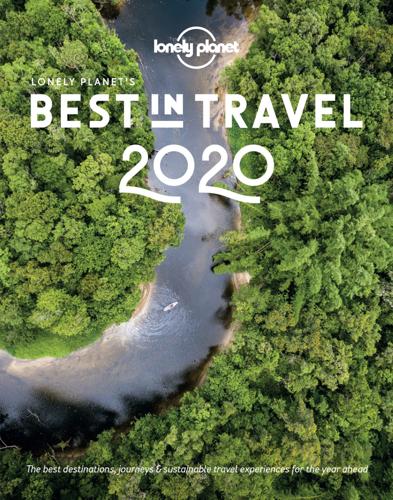
Lonely Planet Lonely Planet's Best in Travel 2022
by
Lonely Planet
Published 26 Oct 2021
Of course there’s the famous Iguazú, one of the seven natural wonders of the world, but the rest of this rugged and temperate region will lead you well off the beaten path. Newly minted in 2018, Iberá National Park is poised to become one of Argentina’s greatest attractions. It’s an inspiring success story of how restoring wilderness can have a positive impact on adjacent communities. Rewilding is bringing back the native fauna, from the green-winged macaw to pampas deer and jaguars. Also, the country continues to be great value for travellers. Population: 3.7 million Main towns: Puerto Iguazú, Mercedes, Corrientes Language: Spanish Unit of currency: Argentine peso How to get there: From Buenos Aires, flights go to Puerto Iguazú, Corrientes and Resistencia; comfortable overnight buses link Mercedes to the capital.
…
Think South American safari: this watery expanse is a haven for wildlife. Camp among docile capybaras, ply through lily-choked waters to spy prehistoric-looking caimans and spot herds of rheas and flocks of reintroduced green-tipped macaws. Native jaguars and giant river otters are coming back, thanks to an innovative rewilding program based in the remote island outpost of San Alonso. Take in the region’s gaucho routes with a horseback-riding tour and admire the barefoot cowboys and banner-blue skies. In between excursions, soak up the slow pace of such colonial towns as Concepción and Colonia Pellegrini. While checking out the larger-than-life landscape of Iguazú Falls, explore the steamy subtropical forest of Misiones, stay at a jungle lodge in Puerto Iguazú, and visit the fascinating ruins of early Jesuit missions.

Politics on the Edge: The Instant #1 Sunday Times Bestseller From the Host of Hit Podcast the Rest Is Politics
by
Rory Stewart
Published 13 Sep 2023
The first draft of this book was 220,000 words long and still covered only a fraction of the events between 2010 and 2019. I have since cut half of that material entirely. Anyone interested in my involvement as a backbencher in Libya or the campaign for community hospitals, my speeches inside and outside the House of Commons, my arguments as a minister over Yemen policy and rewilding, my fight with the government over Covid policy, or my run as an Independent to be mayor of London, would have to get their hands on the unpublished draft. For those stories are no longer included. Nor are my detailed attempts to analyse Boris Johnson, populism, the hope for the centre ground, or the place of ethics in politics.
…
There were thousands of East Europeans working in the hotel industry and care homes; and thousands of civil servants, nurses, and teachers, mostly from Manchester, who had chosen to retire to the Lakes. These ‘new villagers’ were often passionately energetic: hammering up and down the narrow lanes on racing bikes; cleaning the village hall; organising village fetes and half-marathons. Some developed strong views on rewilding the fellside, and on the importance of marsh fritillaries; went to the agricultural shows to admire the lavender-dyed Herdwick sheep; and photographed the perfect Neolithic stone circle at Castlerigg. But this did not mean they were originally from Cumbria. Meanwhile, the older farming families around me – Atkinsons, Warburtons, Wears, Smiths, Richardsons and Raines – seemed often more taken with rewatching The Lord of the Rings than with the medieval history of their parish.
…
I visited most of the parks in the country and, on long walks beside them, I warmed to the quirky, confident, energetic CEOs. I gave them a budget, and was able to push through the expansion of a park boundary in Cumbria. But generally, these women and men were splendidly independent of ministerial control: choosing to favour small farmers in Yorkshire or battle with them in Cumbria; rewild in the Lakes, or focus on Roman heritage in Northumberland. They had real power over their own small patches, and a confidence and joy in their job which I saw in few civil servants. And they stayed in the roles for decades. I felt I would prefer to be the CEO of a national park than an MP. Liz Truss called me in again.
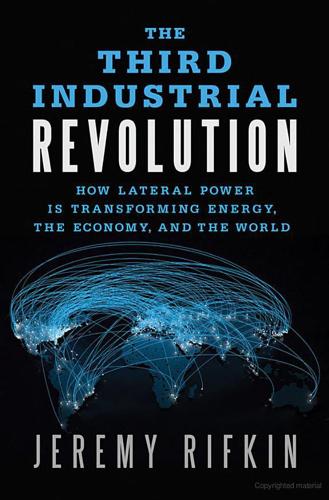
The Third Industrial Revolution: How Lateral Power Is Transforming Energy, the Economy, and the World
by
Jeremy Rifkin
Published 27 Sep 2011
Educators realize that creating biosphere consciousness is no easy task, especially since over half of the world’s human population now lives in dense urban or suburban environments that were designed to be isolated and walled-off from nature. Rewilding urban landscapes—bringing nature back into our lives—has become a central theme among urban land planners and architects. We forget that even the most sterile urban environments abound with wildlife—birds, insects, rodents, rabbits, raccoons, opossums, even deer, fox, coyotes, and abundant flora. Instead of fencing wildlife out, or killing them off, urban planners and an increasing number of civic organizations are finding new, creative ways to revitalize urban biospheres by reestablishing ecological niches scattered across metropolitan regions. The debate over rewilding urban and suburban spaces is often contentious.
…
Ben Breedlove, an American urban designer, is cautiously optimistic about creating environments where people and wildlife can coexist. Breedlove notes that “The largest unmanaged ecosystem in America is suburbia,” which is a counterintuitive notion that strikes a chord.39 In Europe, metropolitan areas are far advanced of the United States and other parts of the world in re-wilding urban regions and establishing an urban biosphere consciousness. Many European cities have devoted half their space or more to open green areas, forests, and agriculture. They have also made sure to maintain or reclaim creeks, small clumps of forests, and meadows inside or close to the urban cores.
…
He believes that “the creative potential is not going to be met by sending a handful of people to Mars. It’s going to be fulfilled by the exploration of this planet, by the constant celebration and deepening of knowledge of life around each one of us, on both the scientific and popular levels.”41 Re-wilding urban areas provides students with the opportunity to experience nature up close, rekindle the biophilia connection, understand their relationship to their evolutionary kin, and develop biosphere consciousness. That’s why in our TIR master plans we have reconceptualized metropolitan areas like Rome as urban biospheres.

How to Spend a Trillion Dollars
by
Rowan Hooper
Published 15 Jan 2020
There is no time to lose here. It’s not even that ecosystems are fragmenting and disappearing, or being converted to agriculture or housing; it’s that it’s harder to get them back once they are gone. Politically and socially it’s harder, not just ecologically. Once land is unwilded, it’s very hard to rewild. As Brendan Costelloe of the British Ecological Society points out, the history of Europe shows this, and so we have to act fast, especially in Africa, where much of the wildlife requires large territories and is prone to conflict with humans. Again, our intervention must also promote the social benefit of the people on that land.
…
It would allow large businesses to take a lead on climate change by demonstrating that they are willing to take a small hit. The public response might bear them out. Some people might be willing to pay extra to live carbon-neutral lives. Dave Reay, a climate scientist at the University of Edinburgh, told me he is trying to balance his lifetime carbon debt by rewilding a patch of land he’s purchased in Scotland. It will cost him many thousands of pounds, but it’s a price he’s happy to pay. We will be able to do the same, but with several orders of magnitude more money. The hope is that billionaires currently sitting on nest eggs for their children’s future will decide that the best way they can realise that future is to start capturing carbon.
…
DOI: 10.1896/0898-6207.20.1.29 31 Donal McCarthy et al. (2012) ‘Financial costs of meeting global biodiversity conservation targets: current spending and unmet needs’. Science 338(6109), 946–949. DOI: 10.1126/science.1229803 32 ‘Key Biodiversity Areas: keep nature thriving’. www.keybiodiversityareas.org 33 Michael Soulé and Reed Noss (1998) ‘Rewilding and biodiversity: complementary goals for continental conservation’. Wild Earth 8(3), 19–28. 34 Edward O. Wilson (2016) Half-Earth: Our Planet’s Fight for Life. New York: W. W. Norton. 35 Jonathan Baillie and Ya-Ping Zhang (2018) ‘Space for nature’. Science 361(6407), 1051. DOI: 10.1126/science.aau1397 36 Patrick Barkham (2020) ‘First wild stork chicks to hatch in UK in centuries poised to emerge’. www.theguardian.com/environ-ment/2020/apr/26/uk-first-wild-stork-chicks-hatch-centuries 37 Eric Dinerstein et al. (2020) ‘A “Global Safety Net” to reverse biodiversity loss and stabilize Earth’s climate’.

The Pyramid of Lies: Lex Greensill and the Billion-Dollar Scandal
by
Duncan Mavin
Published 20 Jul 2022
He bought a fleet of private jets, a wardrobe full of expensive, custom-made suits and a glass-fronted beachside property in his native Queensland, Australia. He picked up awards, became a regular guest on business television, and lavished a £2.5 million donation on the University of Manchester, where he had attended business school. Lex even planned to buy as much as 1,000 acres of land around his Cheshire home to ‘re-wild’ – it was the kind of thing, he told his senior staff, that billionaires like him did with their money. While the trappings of wealth were hugely rewarding, Lex was just as desperate for the status he got from hanging around politicians and top bankers. It was exhilarating to zip around the world in your own Gulfstream 650 – an elite plane even among global private aircraft owners.
…
After Covid-19 hit, and everyone was working from home, Greensill’s senior executives smirked at what they could see in the background on Zoom calls: through the window behind Lex, they watched a team of gardeners, dressed in Greensill farming outfits, working away on the estate. Lex even tried to buy a tract of land in the local area for a ‘rewilding’ project. With the SoftBank money pouring into Lex’s bank account, he made a proposal to the local parish council to buy about 1,000 acres around Saughall. Lex personally met with local councillors and residents to pitch his idea. The minutes of the Saughall and Shotwick Park Parish Council meeting outline the scale of Lex’s plans to erect a ‘two-metre-wide hedge, plant thousands of trees to create forests, orchards and wildflower meadows and introduce some rare breeds of livestock, etc.’
…
Index Aar Tee Commodities ref1 Abengoa ref1, ref2 Accenture ref1, ref2 Agritrade ref1 Ahearn, John ref1 AIG ref1, ref2, ref3, ref4, ref5 Aigis Banca ref1, ref2 Allesch-Taylor, Stefan ref1, ref2 Allin, Patrick ref1 anti-money-laundering (AML) questions ref1 ANZ ref1 Apollo Global Management ref1, ref2 Apple ref1 Aramco ref1 ArcelorMittal ref1 Archegos ref1 Arthur Andersen ref1 Asda ref1 Atlantic 57 Consultancy ref1, ref2, ref3, ref4, ref5 Auditing Association of German Banks ref1 Augustus Asset Managers ref1 Austin, Jason ref1, ref2 Australia ref1, ref2, ref3, ref4, ref5, ref6, ref7, ref8, ref9, ref10, ref11, ref12, ref13, ref14, ref15, ref16, ref17, ref18, ref19 Australian Taxation Office ref1 Aviva ref1 BAE Systems ref1 Baer, Julius ref1, ref2 BaFin ref1, ref2, ref3, ref4, ref5, ref6, ref7, ref8, ref9, ref10, ref11 Bailey, Andrew ref1 Bank of America ref1 Bank of England ref1, ref2, ref3, ref4 Barclays ref1, ref2 Barnes, Rob ref1, ref2, ref3 Barrell, Neil ref1 Barron’s ref1, ref2, ref3 Bates, Chris ref1, ref2, ref3, ref4 Battershill, William ref1, ref2 Baylis, Natalie ref1 BBB see British Business Bank BBC News ref1 BBVA ref1 BCLP see Bryan Cave Leighton Paisner BDO ref1, ref2 Becker, Arthur ref1 Berkshire Hathaway ref1 Bethell, Richard, 6th Baron Westbury ref1, ref2 Bingera ref1 Bishop, Julie ref1, ref2 BlackRock ref1, ref2, ref3 Blackstone ref1 Blair, Tony ref1, ref2, ref3, ref4 Bloomberg ref1, ref2, ref3 Bloomberg News ref1, ref2, ref3, ref4 Bluestone Resources Inc. ref1, ref2, ref3, ref4, ref5 Blunkett, David ref1, ref2 BNP Paribas ref1 Boeing ref1, ref2, ref3, ref4 737 Max 8 aircraft ref1 Bond and Credit Company, The (TBCC) ref1, ref2, ref3, ref4, ref5, ref6, ref7 Borbely, Barnabas ref1 Borneo ref1 Breedon, Tim ref1 Breedon report ref1 Brereton, Greg ref1 Brexit referendum ref1 Brierwood, David ref1, ref2, ref3, ref4, ref5, ref6, ref7, ref8 Brighthouse ref1 British Business Bank (BBB) ref1, ref2, ref3 British Gas ref1 Brown, Eliot ref1 Brown, Gordon ref1, ref2 Bryan Cave Leighton Paisner (BCLP) ref1 BSi Steel ref1, ref2, ref3, ref4 Buckingham Palace ref1, ref2, ref3, ref4 Buffett, Warren ref1 Bundaberg, Queensland, Australia ref1, ref2, ref3, ref4, ref5, ref6, ref7, ref8, ref9, ref10 Bunge ref1 Business, Energy and Industrial Strategy committee ref1 Cabinet Office ref1, ref2, ref3 Caillaux, Gabe ref1, ref2, ref3, ref4, ref5, ref6 Callahan, Mark ref1 Cameron, David ref1, ref2, ref3, ref4, ref5 ‘Big Society’ policy ref1 and Earnd ref1 Greensill remuneration ref1 and Greensill’s collapse ref1, ref2, ref3, ref4, ref5 hired as Greensill adviser ref1, ref2 lends credibility to Greensill ref1 and Lex ref1, ref2, ref3, ref4, ref5, ref6, ref7, ref8, ref9 and Mohammed Bin Salman ref1 and the pharmacy plan ref1 role at Greensill during the Covid-19 pandemic ref1 and The Bond and Credit Company ref1 Cameron, Samantha ref1 Cameron administration ref1, ref2 Cantor Fitzgerald ref1, ref2, ref3 Carillion ref1, ref2 ‘early payment facility’ ref1 Carlyle Group ref1 Carna ref1 Carnell, Kate ref1, ref2 Carney, Mark ref1 Carrington ref1 Carson Block ref1 Carusillo, Mickey ref1 Casey, Dame Louise ref1 ‘cash-less rolls’ ref1 Catfoss group ref1, ref2, ref3 central banks ref1 Chap (magazine) ref1 Charles, Prince ref1, ref2, ref3, ref4 Chase Manhattan ref1 CHBG Limited ref1 Chehaoduo ref1, ref2 Chelsea Group ref1 Chelsea Village ref1 Chicago Police Pension Fund ref1 Chilean mining ref1 Chubb ref1 Chuk ref1 CIMIC ref1, ref2 Citibank ref1 Citigroup ref1, ref2, ref3, ref4, ref5, ref6, ref7, ref8, ref9, ref10, ref11, ref12, ref13 City, the ref1 Clarke, Tracy ref1 Clearbrook Capital ref1 Cleland, Robert ref1, ref2, ref3, ref4, ref5, ref6, ref7 coal mining ref1, ref2, ref3 Coca-Cola ref1, ref2 CoFace ref1 Comerford, Robert J. ref1, ref2 Commerzbank ref1 Companies House ref1, ref2, ref3, ref4 Confederation of British Industry (CBI) ref1 Conservative government ref1, ref2 Copenhagen ref1 Coronavirus Business Interruption Loan Scheme (CBILS) ref1, ref2 Coronavirus Large Business Interruption Loan Scheme (CLBILS) ref1, ref2 corporate espionage ref1, ref2, ref3, ref4 Coupe, Mike ref1 Covid-19 Corporate Financing Facility (CCFF) ref1, ref2 Covid-19 pandemic ref1, ref2, ref3, ref4, ref5, ref6, ref7, ref8, ref9, ref10, ref11 government loan schemes ref1, ref2, ref3, ref4, ref5 restrictions ref1, ref2, ref3, ref4 Crain’s (magazine) ref1 Credit Suisse ref1, ref2, ref3, ref4, ref5, ref6, ref7, ref8 and the Covid-19 pandemic ref1 and Greensill Capital ref1, ref2, ref3, ref4, ref5, ref6, ref7, ref8, ref9, ref10, ref11, ref12, ref13, ref14, ref15, ref16, ref17, ref18, ref19, ref20, ref21, ref22, ref23, ref24, ref25, ref26, ref27, ref28, ref29, ref30, ref31, ref32, ref33 and Sanjeev Gupta ref1 Crothers, Bill ref1, ref2, ref3, ref4, ref5, ref6, ref7 Crown Representatives programme ref1 Cunliffe, Sir Jon ref1 CWB ref1 de Botton, Alain ref1 de Botton, Gilbert ref1 de la Rue, Tom ref1 Deal Partners ref1, ref2, ref3 Degen, Michel ref1, ref2, ref3 Dell ref1 Deloitte ref1, ref2, ref3, ref4, ref5 Demica ref1 Department for Business, Energy and Industrial Strategy ref1, ref2 Department of Environment, Food and Rural Affairs ref1 Department of Health ref1 Department of Health and Social Care ref1 Department of Work and Pensions ref1 Deutsche Bank ref1, ref2, ref3, ref4, ref5, ref6 Deutsche Börse ref1 Doordash ref1 Doran, James ref1, ref2, ref3, ref4, ref5, ref6, ref7, ref8, ref9, ref10, ref11, ref12 dotcom boom ref1, ref2 Dow Jones ref1, ref2, ref3, ref4, ref5, ref6, ref7, ref8, ref9, ref10, ref11 Downes, Brett ref1, ref2, ref3, ref4, ref5 Dragon Technology ref1, ref2, ref3 Eadie, Al ref1 Earnd ref1, ref2, ref3, ref4 Ecclestone, Bernie ref1 Edelman ref1 1860 Munich ref1 Ellis, Brett Easton, American Psycho ref1 Enterprise Investment Schemes (EISs) ref1 equity warrants ref1 Ernst & Young ref1 see also EY Euler Hermes ref1, ref2 European Banking Association ref1 Ewing, Fergus ref1 EY ref1, ref2 see also Ernst & Young Eyjafjallajökull ref1 factoring ref1, ref2, ref3 see also supply chain finance Fair Financial ref1, ref2, ref3 Fairmac Reality ref1 Fairymead ref1 Fan, Colin ref1, ref2, ref3, ref4 Farrell, Maureen ref1 FCA see Financial Conduct Authority ‘fee ramp agreements’ ref1 Feeney, Chuck ref1 Ferrin, Ronald ref1 Fidelity ref1 5th Finger ref1 Finacity ref1 Financial Accounting Standards Board ref1 Financial Conduct Authority (FCA) ref1, ref2, ref3, ref4, ref5, ref6, ref7, ref8, ref9, ref10 Skilled Persons Reviews ref1, ref2 financial crisis 2008 ref1, ref2, ref3, ref4 aftermath ref1, ref2, ref3 and central banks ref1 and fintechs ref1 tougher regulations following ref1, ref2 Financial News (banking publication) ref1, ref2, ref3, ref4, ref5, ref6 Financial Reporting Council ref1 Financial Times (newspaper) ref1, ref2, ref3, ref4, ref5, ref6, ref7 Finews (Swiss news site) ref1 ‘fintechs’ ref1, ref2, ref3, ref4, ref5, ref6 Fitch ref1 ‘flash title’ ref1 Fleetsolve ref1 Food Revolution Group ref1 Forbes (magazine) ref1 Ford ref1 Ford, Bill ref1 Formula One ref1 ‘Four Eyes Principle’ ref1 FreeUp ref1, ref2 Friedman, Alex ref1, ref2, ref3, ref4, ref5, ref6, ref7 Galligan, Shane ref1, ref2 GAM Greensill Supply Chain Finance fund (GGSCF) ref1, ref2 Gapper, John ref1 Garrod, Neil ref1, ref2, ref3, ref4, ref5 GBM Banca ref1 General Atlantic (GA) ref1, ref2, ref3, ref4, ref5, ref6, ref7, ref8, ref9, ref10, ref11, ref12, ref13, ref14, ref15, ref16, ref17, ref18, ref19, ref20 General Mills ref1, ref2, ref3 Gentleman’s Journal (magazine) ref1 German Deposit Protection Authority ref1 Global Asset Management (GAM) ref1, ref2, ref3, ref4, ref5, ref6, ref7, ref8, ref9, ref10, ref11, ref12, ref13, ref14, ref15, ref16, ref17, ref18, ref19, ref20, ref21, ref22, ref23, ref24, ref25, ref26 Absolute Return Bond Fund (ARBF) ref1, ref2, ref3, ref4, ref5, ref6, ref7, ref8, ref9 regulators ref1 Global Supply Chain Finance Forum ref1 Global Trade Review (trade finance publication) ref1 Goldman Sachs ref1, ref2 Gorman, John ref1, ref2, ref3, ref4, ref5 Gottstein, Thomas ref1, ref2 government loans ref1, ref2, ref3, ref4, ref5 ‘GovTech’ firms ref1 Grant Thornton ref1, ref2, ref3, ref4, ref5 Gray, Sue ref1 Green, Philip ref1, ref2 Greenbrier hotel ref1 Greene, Stephen ref1 Greensill, Alexander ‘Lex’ David ref1, ref2, ref3, ref4 ambition ref1, ref2, ref3, ref4, ref5 ascent ref1 Australian property investments ref1, ref2 Australian tax obligations ref1 awards ref1, ref2, ref3 CBE ref1, ref2, ref3 birth ref1 and Carillion ref1 celebrity status ref1 childhood ref1, ref2 at Citigroup ref1, ref2, ref3, ref4, ref5, ref6, ref7, ref8, ref9 on the Crown Representatives programme ref1 CV ref1 and Daniel Sheard ref1 and David Cameron ref1, ref2, ref3, ref4, ref5, ref6, ref7, ref8, ref9 directorships ref1 double down strategy ref1, ref2 and Downes ref1 dresses the part ref1, ref2, ref3, ref4 and Duncan Mavin ref1, ref2, ref3, ref4, ref5, ref6 eager to own bank ref1, ref2 education ref1 legal studies ref1 MBA at the Alliance Manchester Business School ref1, ref2, ref3, ref4, ref5, ref6 and 5th Finger ref1 and Greensill Bank AG (formerly NoFi) ref1 and Greensill Capital ref1, ref2, ref3, ref4 acquisitions ref1, ref2 aircraft leasing deals ref1 attempts to raise emergency finance ref1, ref2, ref3 avoids toughest regulators ref1 BaFin probe ref1 Bluestone ref1, ref2 BSi ref1 Covid-19 pandemic ref1, ref2, ref3 Credit Suisse involvements ref1, ref2, ref3, ref4 demise ref1, ref2, ref3, ref4, ref5, ref6, ref7, ref8 Dragon Technology ref1 expansion ref1, ref2, ref3 ‘flak’ (PR advisers) ref1 General Atlantic ref1, ref2, ref3, ref4, ref5, ref6 Global Asset Management ref1, ref2, ref3, ref4, ref5 harmful effect of SCF on small businesses ref1 insurance ref1, ref2, ref3 malpractice ref1 multi-obligor programmes ref1 National Health Service venture ref1, ref2 new category of loans ref1 payroll finance ref1 perilous state ref1 premier ref1, ref2, ref3, ref4, ref5 sells company private jets ref1 Softbank dealings ref1, ref2, ref3, ref4, ref5, ref6, ref7, ref8, ref9 start-up ref1, ref2, ref3, ref4, ref5 Tower Trade ref1 Tradeshift Networks ref1, ref2 and Jeremy Heywood ref1 and John Gorman ref1 legal work ref1 marriage ref1 and Masayoshi Son ref1, ref2, ref3, ref4, ref5 mentors ref1 mission statement, ‘helping out the little guy’ ref1 and Mohammed Bin Salman ref1 at Morgan Stanley ref1, ref2, ref3, ref4, ref5, ref6, ref7, ref8, ref9, ref10, ref11, ref12 remuneration ref1 moves to the UK ref1, ref2 at OzEcom ref1 and politics ref1, ref2, ref3, ref4, ref5 ‘rewilding’ project ref1 risk-taking ref1, ref2, ref3, ref4, ref5, ref6, ref7, ref8, ref9, ref10, ref11, ref12 and Sanjeev Gupta ref1, ref2, ref3, ref4, ref5, ref6, ref7, ref8, ref9, ref10 and Saudi Arabia ref1 sits on Bank of England committee on SCF ref1 skiing ref1 spending ref1, ref2, ref3, ref4, ref5, ref6 takes loan from the Greensill family ref1 and Tim Haywood ref1, ref2, ref3, ref4, ref5, ref6, ref7, ref8, ref9, ref10 at TRM ref1, ref2 wealth ref1 billionaire status ref1, ref2 hits the big time ref1, ref2 Greensill, Andrew (Lex’s brother) ref1 Greensill, Judy (Lex’s mother) ref1, ref2, ref3, ref4, ref5 Greensill, Lloyd (Lex’s father) ref1, ref2, ref3 Greensill, Peter (Lex’s youngest brother) ref1, ref2, ref3, ref4, ref5, ref6, ref7, ref8, ref9, ref10 Greensill, Roy (Lex’s grandfather) ref1, ref2 Greensill, Victoria (Lex’s wife) ref1, ref2 Greensill Bank AG (formerly NoFi) ref1, ref2, ref3, ref4, ref5, ref6, ref7 and the Atlantic 57 loan ref1, ref2 and the BaFin probe ref1, ref2, ref3, ref4 and the end ref1, ref2 and General Atlantic ref1 and government loans ref1 and Gupta ref1, ref2, ref3, ref4, ref5, ref6, ref7 private aircraft ref1 regulation ref1 and Softbank ref1, ref2 technology ref1 and trade credit insurance ref1, ref2 whistle-blower at ref1 Greensill Capital ref1, ref2 aircraft leasing deals ref1 allegations of corruption at ref1 and the Atlantic 57 loan ref1, ref2, ref3, ref4, ref5 avoids toughest regulators ref1 and the BaFin probe ref1, ref2, ref3, ref4, ref5, ref6, ref7, ref8, ref9 and Bill Crothers ref1 billion dollar plus valuation ref1 and Bluestone ref1, ref2, ref3, ref4, ref5 and BSi ref1 business cards ref1, ref2 cash burner ref1 client list ref1 collapse ref1, ref2, ref3, ref4, ref5, ref6, ref7, ref8, ref9, ref10 corporate events ref1 corporate governance ref1, ref2, ref3, ref4, ref5, ref6, ref7 and the Covid-19 pandemic ref1, ref2, ref3, ref4, ref5, ref6 and Credit Suisse ref1, ref2, ref3, ref4, ref5, ref6, ref7, ref8, ref9, ref10, ref11, ref12, ref13, ref14, ref15, ref16, ref17, ref18, ref19, ref20, ref21, ref22, ref23, ref24, ref25, ref26, ref27, ref28, ref29, ref30, ref31, ref32, ref33 Credit Suisse’s investigation into ref1, ref2, ref3 crisis mounts ref1, ref2, ref3 and David Cameron ref1, ref2, ref3, ref4, ref5, ref6, ref7 and David Solo ref1, ref2, ref3 defaults ref1, ref2 and Dragon Technology ref1 early backers ref1 early struggles ref1, ref2 evergreen loans ref1 ‘everyone wins’ pitches ref1 expansion ref1, ref2, ref3, ref4, ref5, ref6, ref7, ref8, ref9 external public relations ref1, ref2 EY investigation into ref1 fault lines ref1 as ‘fintech’ company ref1, ref2 fraud and misconduct allegations ref1 and General Atlantic ref1, ref2, ref3, ref4, ref5, ref6, ref7, ref8, ref9, ref10, ref11, ref12, ref13, ref14, ref15 and Global Asset Management ref1, ref2, ref3, ref4, ref5, ref6, ref7, ref8, ref9, ref10, ref11, ref12, ref13, ref14, ref15, ref16, ref17, ref18, ref19, ref20, ref21, ref22 gossipy culture ref1 and Greensill Bank ref1 and Griffin Coal ref1 and Gupta/Gupta Family Group ref1, ref2, ref3, ref4, ref5, ref6, ref1, ref2, ref3, ref4, ref5, ref6, ref7, ref8, ref9, ref10, ref11, ref12, ref13, ref14 harmful impact on small businesses ref1 headquarters on the Strand ref1 ‘High Risk Franchise Names’ document ref1 hits the big time ref1, ref2 illiquid investments ref1 insolvency ref1, ref2 investment protection ref1 investors abandon ref1, ref2 IPO ref1, ref2, ref3, ref4, ref5, ref6, ref7, ref8 and John Gorman ref1 and Katerra ref1 and the Lagoon Park SPV ref1 launch ref1, ref2 lavish spending at ref1, ref2, ref3, ref4 Lex’s claims about ref1 liquidity ref1, ref2 and Lloyds ref1 loan book ref1 losses ref1 and Maurice Thompson ref1 Morgan Stanley employees ref1 and the NHS ref1, ref2, ref3 obligors ref1, ref2, ref3, ref4, ref5, ref6, ref7, ref8 offices ref1, ref2, ref3 and payroll finance ref1 and Pemex ref1 perilous state ref1 and the pharmacy plan ref1 pre-IPO funding (‘Project Olive’) ref1, ref2, ref3, ref4, ref5 profitability issues ref1, ref2, ref3, ref4, ref5, ref6 ‘reasonably permanent’ funding ref1 reducing the early risks of using ref1 remuneration ref1, ref2, ref3 retrenchment ref1, ref2 risk team ref1, ref2 risky ventures ref1, ref2, ref3, ref4, ref5, ref6, ref7, ref8 and Roland Hartley-Urquhart ref1 and Saudi Arabia ref1 as ‘shadow bank’ ref1 and SoftBank ref1, ref2, ref3, ref4, ref5, ref6, ref7, ref8, ref9, ref10, ref11, ref12, ref13, ref14, ref15, ref16, ref17, ref18, ref19, ref20, ref21, ref22, ref23, ref24 SPAC talks ref1 start-up style management ref1, ref2 takes loan from the Greensill Capital family ref1 technology ref1, ref2, ref3, ref4 and Tim Haywood ref1, ref2, ref3, ref4, ref5, ref6, ref7, ref8, ref9, ref10 and Tower Trade ref1, ref2, ref3 and trade credit insurance ref1, ref2, ref3, ref4, ref5, ref6, ref7, ref8, ref9, ref10, ref11, ref12 ‘Unicorn’ status ref1 and the US capital markets ref1 whistle-blower allegations emerge ref1 and the Wickham SPV ref1 Greensill Corporation Pty ref1 Greensill Farming Group ref1, ref2, ref3, ref4, ref5 Greensill Trust ref1 Grenda Investments ref1 Griffin Coal ref1, ref2 Gross, Bill ref1 Guazi ref1 Gulf Petrochem (GP Global) ref1 Gupta, Nicola ref1 Gupta, Sanjeev ref1, ref2, ref3, ref4, ref5, ref6, ref7, ref8, ref9, ref10, ref11, ref12, ref13, ref14, ref15, ref16, ref17 Australian property ref1 and Bluestone ref1 and the demise of Greensill ref1, ref2, ref3, ref4 and German steel ref1 and Grant Thornton ref1 and Greensill Bank ref1 Gupta Family Group (GFG) ref1, ref2, ref3, ref4, ref5, ref6, ref7, ref8, ref9, ref10, ref11 and Bluestone ref1 and government loans ref1 and Greensill ref1, ref2, ref3, ref4, ref5, ref6, ref7, ref8, ref9, ref10, ref1, ref2, ref3, ref4, ref5, ref6, ref7, ref8, ref9, ref10, ref11 and Greensill Bank ref1 Guttridge, Jane ref1, ref2 Guy, Toby ref1 Gymshark ref1 Haas, Lukas ref1, ref2, ref3, ref4, ref5 Hambro, Jay ref1 Hanafin, Dermot ref1 Hanafin, Sean ref1, ref2, ref3, ref4, ref5 Harris, Piers ref1 Harry, Prince ref1 Hart ref1 Hartley-Urquhart, Roland ref1, ref2, ref3, ref4, ref5, ref6, ref7, ref8, ref9, ref10 Havens, John ref1, ref2 Haywood, Tim ref1, ref2, ref3, ref4, ref5, ref6, ref7, ref8, ref9, ref10, ref11, ref12, ref13, ref14, ref15, ref16, ref17, ref18 Henkel ref1 Hewlett Packard ref1 Heywood, Jeremy ref1, ref2, ref3 Highways Agency ref1 HM Revenue & Customs ref1 HM Treasury ref1, ref2, ref3, ref4 Hobday, Neil ref1, ref2, ref3, ref4 Holmes, Elizabeth ref1 House of Lords ref1 HSBC ref1, ref2, ref3, ref4, ref5 Huawei ref1, ref2, ref3 Hutton Inquiry ref1 IAG see Insurance Australia Group ICBC Standard Bank ref1 Indonesia ref1 Industrial Cadets ref1 Inflexionpoint ref1 ING ref1 Insurance Australia Group (IAG) ref1, ref2, ref3 International Chamber of Commerce ref1 Intrepid Aviation ref1 ‘Iran Notices’ ref1 Iraq, UN weapons inspectors ref1 Isle of Dogs ref1 Jacob, David ref1, ref2, ref3 Jahama Highland Estates ref1 Jain, Anshu ref1 Jakarta ref1 Jardine Matheson ref1 Johnson, Boris ref1 Jones, Karen ref1 J.P.

Radiant Rest
by
Tracee Stanley
Published 9 Mar 2021
I live in the Santa Monica Mountains on traditional Tongva land where the “mountains meet the sea,” and I teach annually in Big Sur, traditional Esselen land. These settings provided inspiration for restoring my connection to nature. I realized very quickly that renewing this connection was amplifying my yoga nidra practice and changing my life in unexpected ways. I was rewilding myself and allowing nature to heal me, awaken dormant wisdom, and transform my practice. I no longer had to conjure up an image of a brilliant starlit sky; it was there, real. I could place each of those “tiny, blue, starlike points of light” in my body, in real time. When I went back to practicing in my house, my body remembered, and I returned to a vibration that felt very familiar.
…
rest Quiet, freedom from toil, refreshing ease, peace of mind or spirit; the result of yoga nidra practice. See this page. restorative yoga A form of yoga that uses props to support the body in relaxed and calming postures held for long periods of time. Although some restorative postures may be used in your yoga nidra nest, restorative yoga is not the same as yoga nidra. See this page. rewilding A holistic approach to living that returns you to your natural state through a connection with nature. See this page. rishis, rishikas The original seers of yoga. See this page. ritual An observance, ceremony, or way of doing something. See this page. sadhana Dedicated practice over time, spiritual discipline.
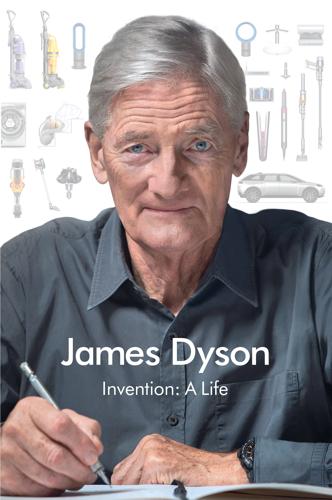
Invention: A Life
by
James Dyson
Published 6 Sep 2021
Sustainable food production and food security are vital to the nation’s health and economy. Britain currently imports 30 percent of its food. This is unnecessary since we can grow almost everything and so reduce the carbon footprint caused by importing food with all this entails in terms of fuel and transport. The same eco warriors who are so keen on the re-wilding of farms think nothing of consuming avocados flown in by air and other imported foods. Within our greenhouses, and with our fertile soil and more than ample rainfall, we can grow the food we need. At the same time there is also a real opportunity for agriculture to drive a revolution in technology and vice versa.
…
As Britain leaves the European Union, powerful voices object to farm payments, which means that subsidies will decline and big farmers will be hit hard. These subsidies help support proven greening practices for the climate and environment on which most farmers lose money. The same people who object to subsidies also want farmers to be paid to turn their farms over to re-wilding and to be used as leisure spaces for everyone, neglecting to mention that if we did this, we would have to import all our food. Some imagine that big farmers are pocketing farm payments, ignoring the fact that it is hard not to lose money growing food, whether you are a large or small producer.
…
We can farm with increasing efficiency while the birds thrive. Between them, our tractors and harvesters sow, fertilize, and reap crops with a precision that means there is little waste. We can farm with increasing efficiency while nature thrives. To me, all this is common sense. I am not by any means a hair-shirted conservationist or ardent re-wilder. I don’t plan to release wolves onto our estates. Rather, I aim to be a productive and profitable farmer growing as much good food as possible. But, with the aid of invention, innovation, and technology, I can help to shape farms with my colleagues where human demands are in balance with those of nature.
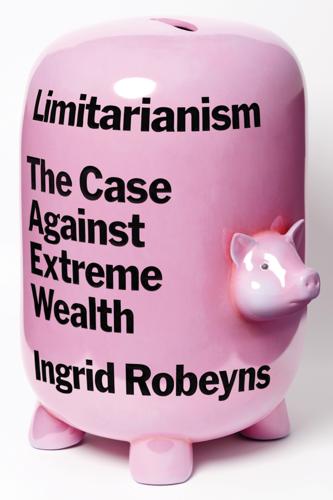
Limitarianism: The Case Against Extreme Wealth
by
Ingrid Robeyns
Published 16 Jan 2024
Some of the most common strategies that have been advocated to stop further global warming are: for individuals to consume less, particularly by not flying and by switching from animal-based to plant-based diets; for companies and households to switch to electricity for fueling energy-intensive activities (transportation, cooking, heating, and so on); and for governments to change land use (encouraging rewilding, reforestation, and so on). Despite these efforts, our emissions just keep getting worse. We have emitted more carbon dioxide since 1991 than throughout the rest of human history. In 2022, scientists warned that we had just six and a half years left at current rates of emissions before we surpass our “carbon budget”—that is, the maximum amount of CO2 that we can emit while still having a chance of keeping global warming at 1.5°C.7 At 1.2°C of warming, we are already beginning to experience the disastrous effects of climate change.
…
But if the entire world were to switch to a plant-based diet, the effect on global emissions would be huge. This would in part be due to the lower emissions generated by producing this food, but also because vast swaths of livestock pasture and land currently used to grow the crops for feeding livestock (rather than for feeding people) could be rewilded, allowing for carbon drawdown and ecological renewal on a vast scale. However, as George Monbiot argues in his book Regenesis, making such changes—which would also allow the entire world population to be fed—would require a transformation in the farming industry: we’re talking here about substituting the production of animal proteins and fats with the production of proteins from plants, fungi, and bacteria, with all the changes in practice, equipment, and supply chains that this implies.
…
These are also problems that, once they are solved, benefit everyone. The most urgent current example is, of course, climate change and the biodiversity crisis. There is no single solution, and no individual can solve this problem on their own. We may decide to avoid taking airplanes or eating animal-based products. We may decide to rewild our gardens. All of this is admirable—and valuable as a means of raising awareness and creating community among people who are working toward a better world—but it won’t solve the crisis, even if we do manage to convince all our neighbors to join us. As we saw, we need a green strategy that entails different climate and biodiversity action at the highest level: vastly increasing the production of renewable energy and getting rid of fossil fuels; developing new, greener technologies; providing poor people with off-grid electricity from renewable sources; drastically decreasing the number of livestock; buying land to protect it from excess cultivation; buying up the most environmentally damaging firms; and so forth.

2312
by
Kim Stanley Robinson
Published 22 May 2012
So the escorts might get arrested before they were done, but hopefully the habitat corridors would be quickly recognized as values worth the land given over to them. As usual when walking with a group of people, Swan quickly fell behind. There was too much to look at; things were so interesting that she forgot what her task was, even now. The plans and research devoted to the possible rewilding of Earth had been going on for a century, and here she was part of it, and still she stumbled around looking at flowers poking out from rocky soil here and there, velvet pads of astonishing color. Above them stood a tall pale blue sky, with a line of cumulus scudding east. She still saw in her mind animals floating down like seeds in the sun; the sight had cast her into a dream and she had not emerged from it, and so naturally she had to go slow.
…
During the descent some animals were shot out of the sky like shooting-range skeet. And yet on the whole down they came, landed, survived, endured. For a few weeks or months, therefore, it was all anyone spoke about, and all shouted at the tops of their lungs. And the massive flood of images was ambiguous, to say the least. Some cried invasion, but others cried reunion. Rewilding, assisted migration, the revolt of the beasts; and at some point it was called the reanimation, and that term got capitalized and gradually stuck and spread, superseding all the rest. And in the end it did not matter what name people gave it: the animals were there many accused the terraria of fomenting revolution on Earth.
…
Have you seen that shirt with all the excuses printed on it?” “They made that shirt by listening to me and writing things down.” “Ha-ha. Which one this time?” “Well, I’ve just spent almost a year on Earth. I’m throwing everything long.” “I bet. What were you doing there?” “Working on animal stuff.” “The invasion, you mean?” “The rewilding.” “Huh. What was that like?” “It was interesting.” She didn’t want to talk about it right now, and she suspected the youth knew that and only wanted to distract her. “Your shot.” “Yes.” The youth’s waist-to-hips ratio was sort of girlish, the shoulder-to-waist-to-ground lengths sort of boyish.

What Technology Wants
by
Kevin Kelly
Published 14 Jul 2010
Among the green anarchists there’s talk of recovering your soul, of making fire by rubbing sticks together, discussions of whether vegetarianism is a good idea for hunters, but there is no outline of how groups of people go beyond survival mode, or whether they do. We are supposed to aim for “rewilding” but the rewilders are shy about describing what life is like in this rewild state. One prolific green anarchy author whom I spoke to, Derrick Jensen, dismisses the lack of alternatives to civilization and told me simply, “I do not provide alternatives because there is no need. The alternatives already exist, and they have existed—and worked—for thousands and tens of thousands of years.”
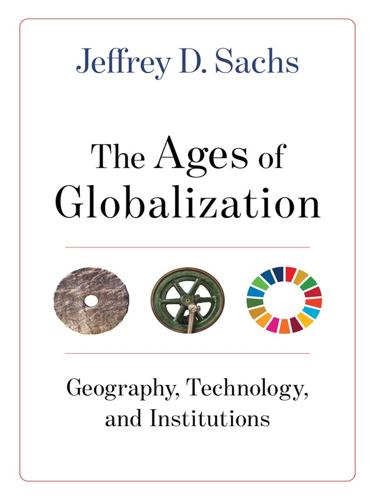
The Ages of Globalization
by
Jeffrey D. Sachs
Published 2 Jun 2020
Horses were present in Africa only at the very northern tip of the continent, in the small temperate band north of the Sahara. 4.3 The Distribution of Wild Horses in the Late Pleistocene–Early Holocene Source: Pernille Johansen Naundrup and Jens-Christian Svenning, “A Geographic Assessment of the Global Scope for Rewilding with Wild-Living Horses (Equus ferus),” PLoS ONE 10(7): https://doi.org/10.1371/journal.pone.0132359 Figure 4.3 depicts the remarkable decline in the range of horses between the late Pleistocene (light) and the mid/late Holocene (dark). The main reason is that horses were hunted for meat in the early Holocene and driven to extinction throughout the Americas and in most of Eurasia other than the steppe region.
…
Scientific American Blog Network. 2015. https://blogs.scientificamerican.com/tetrapod-zoology/domestic-horses-of-africa/. National Science Board. Science and Engineering Indicators 2018. Alexandria, VA: National Science Foundation, 2018. Naundrup, Pernille Johansen, and Jens-Christian Svenning. “A Geographic Assessment of the Global Scope for Rewilding with Wild-Living Horses (Equus Ferus).” Ed. Marco Festa-Bianchet. PLoS ONE 10, no. 7 (2015): e0132359. https://doi.org/10.1371/journal.pone.0132359. Neubauer, Simon, Jean-Jacques Hublin, and Philipp Gunz. “The Evolution of Modern Human Brain Shape.” Science Advances 4, no. 1 (2018): eaao5961. https://doi.org/10.1126/sciadv.aao5961.

Beautiful Solutions: A Toolbox for Liberation
by
Elandria Williams, Eli Feghali, Rachel Plattus
and
Nathan Schneider
Published 15 Dec 2024
Nonprofit, public, and community land ownership. Laws protecting the rights of nature. Rewilding: restoring, protecting, and connecting ecosystems. Housing cooperatives and co-housing. Public and social housing with community control. HOW ARE WE MAKING BEAUTIFUL TROUBLE? Squatting and informal settlement networks. Rent strikes. Tenant organizing and eviction defense. HOW CAN WE HEAL? Landback, land rematriation, and land reparations: returning control of land to Black and Indigenous communities. Land taxes to local Indigenous communities. Habitat restoration and rewilding. Deepening our relationships with the land we live on, learning about who lives there.
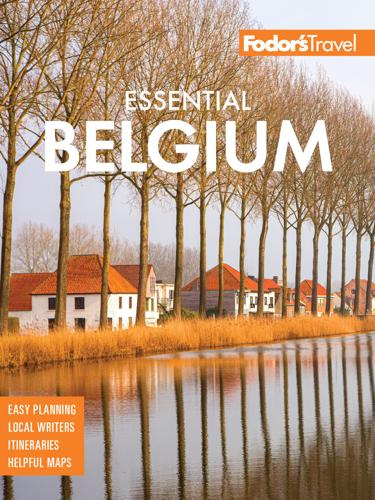
Fodor's Essential Belgium
by
Fodor's Travel Guides
Published 23 Aug 2022
Boucle Noire (GR412) TRAIL | This 26-km (16-mile) Grand Randonnée walking route traces a path through the old mining villages east of the city. The “Black Loop,” as it’s known, traverses canal towpaths, former railways, and the area’s main slag, or spoil, heaps—the excavated soil and waste from the mines—which have been left to rewild since the last pits closed here in the early 1980s. These, in particular, afford fine views across an area that, while not always pretty, is still dramatic. Maps with directions in English can be picked up at the tourism information office. You can pick up the route at Charleroi Sud station. EGare de Charleroi Sud, Sq. des Martyrs 18, Charleroi AFree.
…
Both Celts and Romans once founded villages here, but by the 19th and 20th centuries, the area was known for one thing only: its iron and mineral deposits, which gifted the region its nickname, the Redlands (for its red-tinted, iron-rich soils). In 1798 Esch-sur-Alzette it was just a small village; today, it’s Luxembourg’s second-largest city, a metropolitan area home to some 60,000. Its old mining sites were rewilded, creating a string of nature reserves. Old pits became museums, and the plants of the industrial Belval area were converted into a university, music venue, and visitor center. This even won the city the European Capital of Culture title for 2022. For visitors, the city is something of a base. You’ll not spend much time in its center with so many interesting villages and sights on the outskirts.
…
Joseph’s Church) CHURCH | The largest and oldest church in Esch-sur-Alzette was built in neo-Gothic style by Charles Arendt, a truly prolific state architect who designed and restored many buildings across Luxembourg in the prewar years. Inside you’ll find some impressive murals. ERue d’Église, Esch-sur-Alzette AFree. Ellergron Reserve NATURE PRESERVE | Around 2 km (1 mile) south of the city lies the nature reserve of Ellergron, a former ore extraction zone that has been rewilded. The best way to get there is to walk. Take the lift next to the railway station to the bridge over the tracks and you’ll find yourself in Gaalgebierg park. From there, the reserve is well signed. Once you arrive, a visitor center outlines the surrounding trails. You’ll also find the Musée Mine Cockerill (Cockerill Mining Museum), which is set in the old mine workings that date back to 1887, now mostly inhabited by bats.
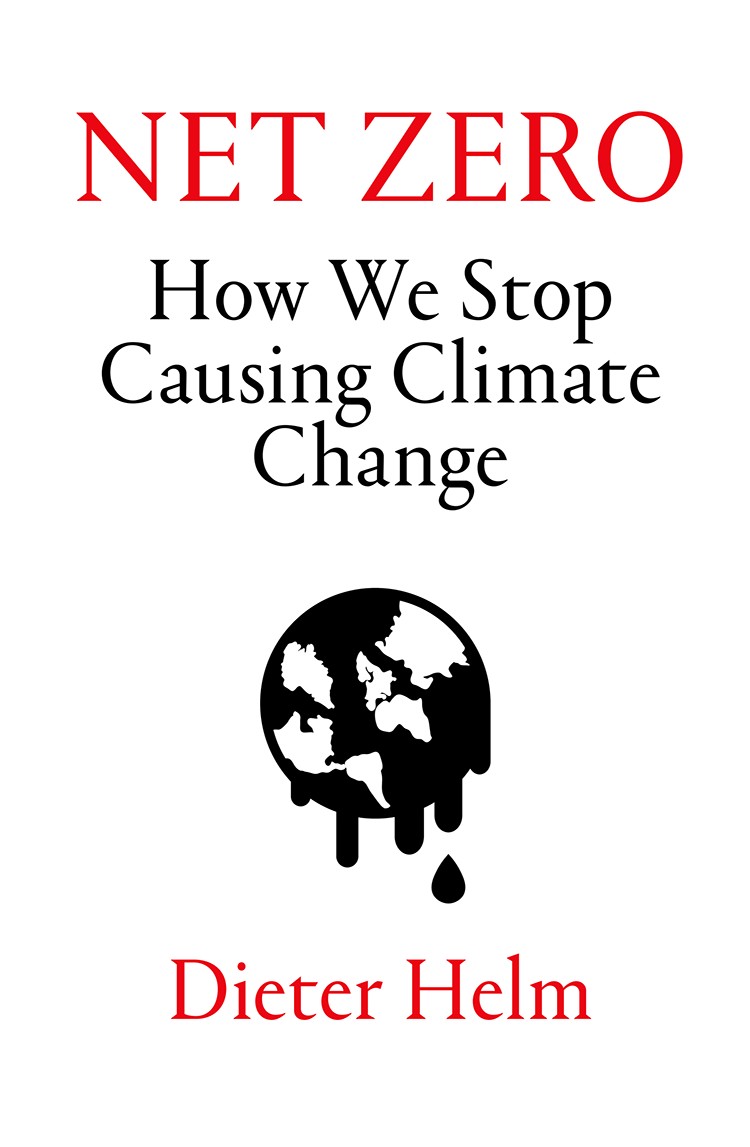
Net Zero: How We Stop Causing Climate Change
by
Dieter Helm
Published 2 Sep 2020
There would be few if any crops, and we would live only on those renewable bits of natural capital which are abundant and well in excess of any threshold below which they could not renew themselves. We humans are always changing our world, and there is no prospect that this will end, unless of course there is some cataclysm. There is no wild to rewild back to, no primitive and pristine state of nature to which we can aspire.[1] The point is to make our impacts in such ways as to leave the natural world in at least as good a state as we inherited it. We should tread lightly, but nevertheless still tread. This is not and can never be a zero-pollution world.
…
‘Agriculture after Brexit’, Oxford Review of Economic Policy, 33(1), 2017, pp 124–133; and chapter 4 of Helm, D., Green and Prosperous Land: A Blueprint for Rescuing the British Countryside. London: HarperCollins, 2019. Back to text 14. Federal Ministry for Economic Affairs and Energy, ‘Commission on Growth, Structural Change and Employment: Final Report’, January 2019. Back to text * * * * * * 4 LiVING WITHIN OUR ENVIRONMENTAL MEANS 1. The fashion for ‘rewilding’ confuses the advocacy of a particular management technique in particular circumstances with a back-to-nature romanticism. Back to text 2. Technically, this includes rules in respect to the depletion charges of renewable and non-renewable natural resources. For the classic treatment, see Dasgupta, P.

Meat: A Benign Extravagance
by
Simon Fairlie
Published 14 Jun 2010
Woodland or Wildland We are left in Table F with about nine million hectares, of which 3.7 million hectares are currently classed as woodland or else ‘other land on agricultural holdings including woodland’, and the rest are rough grazing – including 1.5 million hectares of grouse moor. There are therefore nearly five million hectares of mostly poor quality land spare, for which the most obvious uses are either to ‘rewild’ it, or else to put it over to woodland. In the livestock permaculture scenario I have opted to leave slightly over half of this area for wildlife and to convert the other half to woodland. This gives us about six million hectares of woodland, around a quarter of the entire country. This is still a lower proportion than in France (27 per cent), the EU (40 per cent) or the world (29 per cent).
…
An obvious candidate is fenland, which could well allow a proportion of its fertile arable land to revert to waterland. Drained by Dutch engineers and Scottish prisoners of war in the 17th century for agriculture, much of the land is now kept dry by the use of diesel or electric pumps. A return to fenland is already being carried out by the National Trust at Wicken Fen in Cambridgeshire, where the aim is to rewild 3,700 hectares of farmland and return it to fenland. Currently some of the reclaimed area is being grazed by semi-wild Konik horses, though as far as I know the National Trust is not, like the Dutch wetland managers, retailing pony-burgers. The scheme will sequester carbon in the peaty soils that have been stripped bare by years of arable farming; and it will serve as a ‘green lung’ for residents experiencing spiritual suffocation in the new expanse of suburban sprawl planned for the Cambridge area.
…
If we choose to use arable land for biogas to help fuel power-hungry cities and develop technologies for turning biomass residues into chemical fertilizers, then our farmed countryside will become a deserted hydroponic factory. The more biomass that is required for energy, the less there will be for livestock, leading to increased pressure for vegan solutions. Under the vegan option, areas of less fertile land could be cordoned off for rewilding, a bargain which would be welcomed by those who, like James Lovelock, Paul Shepard and the GOOFs, believe that the resurgence of Gaia requires the human race to live a crabbed urban existence, expelled from the Garden for our sins. Following this course would signal our further withdrawal from the natural world, and point us further down the road that leads ultimately towards the spooky scenarios advanced by transhumanists.
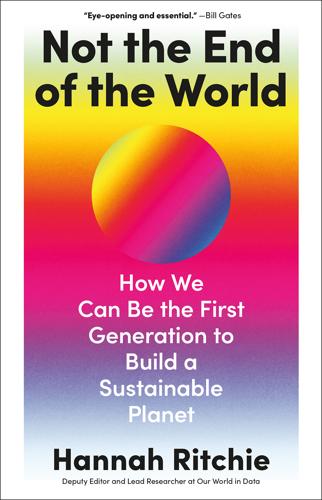
Not the End of the World
by
Hannah Ritchie
Published 9 Jan 2024
But it has made an impressive comeback in the last 50 years. By the end of 2021, there were almost 10,000 of them. Across the world, we find examples of successful conservation programmes that have restored animal populations. A coalition of conservation organisations – including the Zoological Society of London, BirdLife International and Rewilding Europe – periodically publish reports on how animal populations in Europe are changing. In their latest report they looked at the change in populations of 24 mammal species and one reptile species – the loggerhead turtle – that have been making a comeback.38 Eurasian badger populations achieved an average increase of 100% – a doubling.
…
Borgelt et al., ‘More than half of data deficient species predicted to be threatened by extinction’, Commun Biol 5, 1–9 (2022). 37 N. Benecke, ‘The Holocene distribution of European bison’, MUNIBE Antropologia-Arkeologia (2005). 38 S. E. H. Ledger et al., Wildlife Comeback in Europe: Opportunities and challenges for species recovery. Final report to Rewilding Europe by the Zoological Society of London, BirdLife International and the European Bird Census Council. London, UK: ZSL, https://www.rewildingeurope.com/wp-content/uploads/publications/wildlife-comeback-in-europe-2022/ (2022). 39 UNEP-WCMC & IUCN, Protected Planet Report 2020 (2021). 40 UN Convention on Biological Diversity, ‘First Draft of the Post-2020 Global Biodiversity Framework’, Preprint at https://www.cbd.int/doc/c/abb5/591f/2e46096d3f0330b08ce87a45/wg2020-03-03-en.pdf (2021). 41 Nature Needs Half, Nature Needs Half, https://natureneedshalf.org/. 42 B.

A Prayer for the Crown-Shy: A Monk and Robot Book
by
Becky Chambers
Published 12 Jul 2022
“I don’t want to bring things down, but I think we should chat about what your—what our expectations should be like while we’re here. I don’t … I don’t know … how much of the beach we’ll actually get to see close up.” The robot lowered its binoculars. “Why?” Dex exhaled. They sat in one of the chairs, and gestured for Mosscap to take the other. “Two things,” they said, as Mosscap sat. “First, most of the Coastlands is rewilded territory. You could walk through it, if you want to, but I can’t. There are no roads or trails in a lot of places, and the animals that live there aren’t used to people and shouldn’t be disturbed.” “So, nesting birds and the like,” Mosscap said. “Pupping seals, that kind of thing?” “Probably,” Dex said.
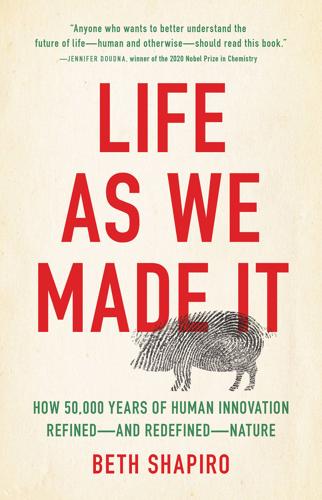
Life as We Made It: How 50,000 Years of Human Innovation Refined--And Redefined--Nature
by
Beth Shapiro
Published 15 Dec 2021
What troubles me is Brown’s wish to get rid of all cattle, which I don’t see as necessary. To my mind, even those who abhor the beef and dairy industry should see a place for cattle in our world. They are, after all, descendants of aurochs. If nothing else, cattle could at the least live where aurochs once did and fill the role of a large grazing herbivore in a rewilded natural ecosystem. Pat Brown spent 25 years as a professor of biochemistry at Stanford University before he decided to switch careers. In 2009, he took an 18-month sabbatical to figure out what to do next. He’d already invented the DNA microarray, which changed the way scientists catalogue differences between DNA sequences and in the quantities of proteins that genes make.
…
The experiments to engineer the cloned bucardo are presented in Folch et al. (2009). Zimov et al. (2012) argue that resurrected mammoths will transform the tundra into a productive steppe grassland. Malhi et al. (2016) review our current understanding of how megafauna impact ecosystems, with special consideration to the idea of rewilding ecosystems in which megafauna have become extinct. The Wyoming Game and Fish Department produced an excellent series of videos about the history of the black-footed ferret conservation project that are available on its YouTube channel (www.youtube.com /user/wygameandfish/) and at http://blackfootedferret.org.
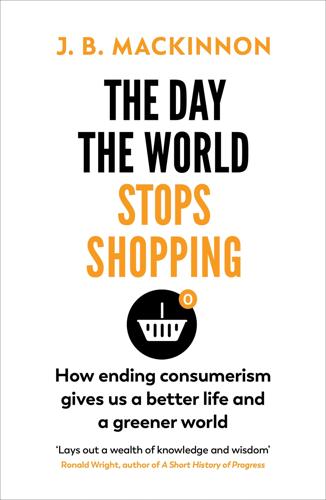
The Day the World Stops Shopping
by
J. B. MacKinnon
Published 14 May 2021
We may not think of ourselves as being at war with nature, but one sign that we are is that when the human world retreats, the natural world advances. The change happens quickest in the oceans, because so many living things there move so freely: they sense when we are gone and swim in to fill the space. During the pandemic, the first signs of rewilding often appeared in suddenly empty waters: fish and jellyfish in the calm, clear canals of Venice; river dolphins alongside the ghats—huge riverside stairways for bathers—of Kolkata, India, for the first time in three decades; crocodiles surfing the waves at a popular beach in Mexico. But the same principles, Friedlander said, apply to the land as well.
…
Nearly a third of its people are over sixty-five years old, and the population is declining by the hundreds every day. Unless it opens the floodgates to immigration, the UN predicts Japan will lose nearly twenty million people in the next thirty years. While much of the world struggles with overpopulation, Japan worries about depopulation. Wild boars and monkeys are rewilding forgotten villages. Japan’s economy is not shrinking, but it’s treading a fine line. The first decade after the bubble collapsed was nicknamed the Lost Decade, and the first generation to enter the postlapsarian workforce is known as the Lost Generation or Ice Age Generation. Three decades into the post-bubble era, many Japanese simply talk about it all as the Lost Years.
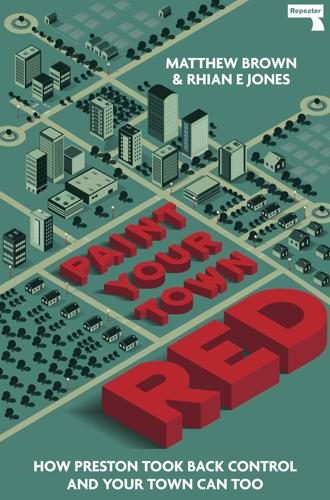
Paint Your Town Red
by
Matthew Brown
Published 14 Jun 2021
As with Preston, community wealth-building offered North Ayrshire an alternative to failed previous models of inward investment and the problem of “leakage” from the local economy. Cullinane sees the management of land and assets by the local community rather than private developers as further tying into a wider environmental strategy through projects of reforesting and rewilding in parts of the area. The council’s “Anchor Charter”, currently being developed, will set out a range of commitments for anchor institutions that not only covers the five “pillars” identified by CLES but also adds a sixth point on tackling climate change. Although welcoming the Scottish government’s interest in community wealth-building, Cullinane is conscious of the need for it to be accompanied by a commitment to a transformative agenda, to avoid diluting its potential when scaled-up and to get beyond relatively abstract political platitudes on “inclusive growth” or “well-being”.
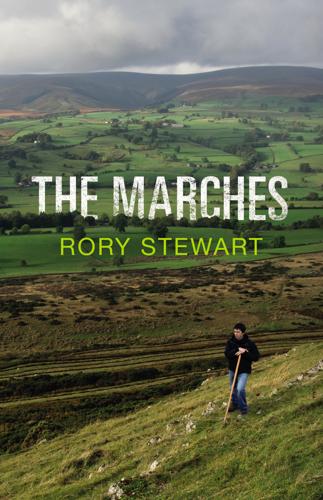
The Marches: A Borderland Journey Between England and Scotland
by
Rory Stewart
Published 14 Jul 2016
An army of government officials moved in. They drove the cattle and sheep that remained alive from the land. They prohibited peat-digging, the clearing of trees and vegetation, or the planting of crops. Much of the best farmland in the Middleland, which had been farmed for 2,000 years or more, was rewilded – including the Eden valley between Penrith and Carlisle – converted back into swamp, scrub and woodland, as a protected habitat for birds and above all for deer. * My walking companion Julian was a Cumbrian painter. His wife, his mother, his father, his father’s father, his father’s mother and his mother’s mother had all been Cumbrian painters.
…
Behind me I could see the great forest of aerials which marked the nuclear submarine control centre at Anthorn. 69 The Scottish side of the border looked different to the English side. Here the agricultural improvements had happened much later, the land drains had not been abandoned, and rewetting and rewilding schemes were yet to commence. Oaks loomed above long-eared grain and thoroughbred horses. Between the coast and the fields were dense thickets of briars and nettles, raspberry bushes and hints of more exotic, pink-flowered aliens – all taking advantage of the nitrogen-rich soil. In 1914, this whole patch of mostly Scottish ground, nine miles long and three miles wide, had been fenced in by the Imperial War Office.
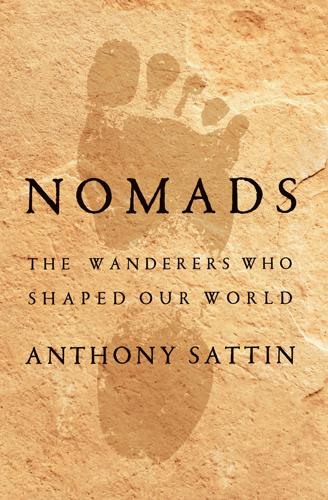
Nomads: The Wanderers Who Shaped Our World
by
Anthony Sattin
Published 25 May 2022
With the Uighur khanate on side, the Mongols continued westwards and hoped for similar success from their diplomatic advances towards the Uighurs’ neighbour, the Sultan of Khwarazm. The Great Khan was learning to curb his steppe instinct to return agricultural land to pasture, an early form of rewilding. Those of his advisers who had experience at the Chinese court had helped him see the advantages of allowing settled people to continue in their own way, not least the wealth to be had in trading with them. It was with the intention of establishing this sort of trade link that Genghis exchanged messages with the Shah of Khwarazm, Ala ad-Din Muhammad II.
…
If religious conviction was not sufficient reason to align oneself with the new masters of the world, the head count of those who died in a few blood-soaked years might have been. That, and the knowledge that some of Central Asia’s richest provinces had been reduced to wasteland, fertile farmland allowed to rewild, some of its strongest cities levelled, some of the glories of Afghanistan gone, along with those of the Persian heartland, including the fabled underground canals. Hundreds of thousands, perhaps millions of people were forced to flee ahead of the Mongol wave. ‘O would that my mother had never borne me,’ the Arab chronicler Ibn al-Athir wrote, echoing common sentiment, ‘that I had died before and that I were forgotten.’
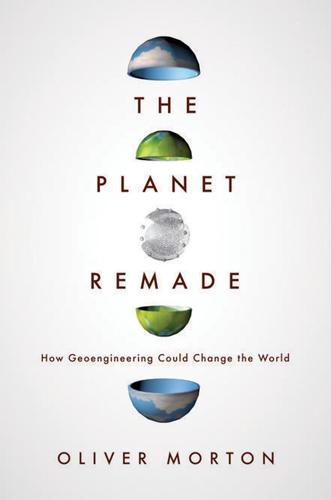
The Planet Remade: How Geoengineering Could Change the World
by
Oliver Morton
Published 26 Sep 2015
But they are not inseparably conjoined, nor indistinguishable; they still have their separations, and there is always room for the unintended. Perhaps the all-encompassing nature that people once yearned for has gone – perhaps it was never really there. The idea that there are things, processes and places which can express nature has survived, as it has through all sorts of cultural shifts. The patchwork ecosystems created by the rewilding projects of a century ago – those that re-introduced once-common species like the wolf and beaver to landscapes from which they had been removed – now seem like places where nature is at work even though they are manifestly contrived. The sense of the natural as a process persists even when some genetic engineering has gone into the contrivance, as in the case of the mammoths now rooting up some Siberian and Canadian forests, thereby doing their bit to raise the planet’s albedo as well as to delight its inhabitants.
…
forum/geoengineering My own blog is at http://heliophage.wordpress.com Index Abbot, Charles, 49 Ackerman, Thomas, 307–8, 323 adaptation and mitigation: costs, 106; future scenarios, 355–7, 359, 360–1, 362–4, 366, 370; as only solution, 29; reasons for neglect, 146–7; relationship with geoengineering, 158, 159–60, 161–2, 163, 165, 347, 355–7, 359, 362–4; and two-degree limit, 165 AEC see Atomic Energy Commission aerosols: cooling effects, 63, 73, 84–5, 89–99, 275–80; and fossil fuels, 12; future scenarios, 370; and health, 281; and local climate modification, 297; and ozone layer, 93–4; and rainfall, 95–6; from sulphur, 275; warming effects, 73; see also veilmaking afforestation see trees Africa: aerosols over, 297; and colonialism, 178; early humans in, 230; and global warming, 116; Kilimanjaro’s glaciers, 344–5; potential geoengineering effects, 121–2, 371; prehistoric climate, 241–2; see also Sahara Desert; Sahel; South Africa agreements see air pollution: agreements; climate negotiations and agreements; nuclear weapons: treaties and test bans; UNFCCC agriculture and farming: and algal blooms, 196; and asteroid strikes, 329; and carbon dioxide, 236–40; and climate change, 72, 237–8; energy intensity, 193–4; EU subsidies, 208; genetic modification, 289–90; and greenhouse gases, 224–5, 227; increasing crop reflectivity, 289–90; machinery, 184; and nuclear winter, 307; organic, 199–200; origins, 230–1, 234–5; separation of livestock from arable, 205; unintended fertilization, 199–200; see also fertilizers, synthetic; plant growth Agung, Mount, 90, 98 air conditioning, 284 air pollution: in Asia, 280, 297, 365; international agreements, 208, 282–3; and nitrogen, 199; and sulphur, 274–5, 281–3 aircraft: B-52 bombers, 42; F-15, 104; Lockheed U-2, 42–3, 44, 45, 53; and ozone layer, 51–2; supersonic, 358; and veilmaking, 101–6, 352, 368 airships, hybrid, 106 albedo: and averting ice ages, 278; definition, 71–2; future scenarios, 282; and ice, 73, 231; ice–albedo feedback, 223, 276, 278, 342–3; reduced by mammoths, 373; and trees, 130, 260; and volcanic eruptions, 85 algal blooms, 95, 195–6, 253–4, 256 Algeria, 241–2 Alliance of Small Island States, 355 Alps, 371 Alvarez, Luis, 321–2, 327–8 Alvarez, Walter, 321–2, 327–8 American Association for the Advancement of Science, 138 Americas, effect of European ‘discovery’, 227–9 Ames Research Center, 156, 307 ammonia, 176, 199; see also nitrogen Anderson, James, 53, 169 Andes, 371 animals: biodiversity and global warming, 257; cattle, 224; and European ‘discovery’ of Americas, 227–8; extinctions, 25, 321–2, 328; livestock farming, 205; polar bears, 95; rewilding, 373 Antarctica: ice as record of earlier climates, 222, 227, 321; ozone layer over, 53, 93, 110, 111; protecting the icecap, 372; see also Southern Ocean Anthropocene: attitudes to, 219–21, 225–9; definition, 25–6; and greenhouse gases, 222–9; origins of term, 52; start date, 44–5, 225–9 anthropology, 129 Apollo programme, 60, 62, 77, 212–13; Apollo 8, 60, 213 Archer, David, 267 Archimedes, 81 Arctic: climate research projects, 138; future scenarios, 342; ice, 313, 362; methane release, 241; and next ice age, 278; ozone layer over, 110; temperature records, 108; and weather in temperate zones, 316 Argentina, 16 arms-control agreements, 144 Armstrong, Louis, 375 Arrhenius, Svante, 88, 130–1, 243 ‘asteroclique’, 333–4, 335–6 asteroids and comets, 139, 321–2, 327–40, 341 Aswan Dam, 198 Atacama Desert, 180 atmosphere: effects and properties, 38–40, 65–73; etymology, 40; layers, 41; size, 375; see also stratosphere; troposphere; veilmaking Atomic Energy Commission (AEC), 45, 316 Aurora Flight Sciences, 101–5 Australia, 271 Bachelard, Gaston, 35 back scattering see scattering Bacon, Francis, 24–5 Bala, Govindasamy, 151, 292 Bali, 90 balloons, 105–6 Barrett, Scott, 106–7 Baruch, Bernard, 185, 188, 314 BASF, 182, 190 BECCS see biomass energy with CCS Bennett, Hugh, 185 Bezos, Jeff, 353 biochar, 264 biodiversity, 257–8 biofuel, 263 biomass, 18, 263; see also renewable energy biomass energy with CCS (BECCS), 262–4, 265 biotechnology, 289 Birks, John, 306–7 Blair, Tony, 144 Blue Origin, 353 Bolivia, 180 Borgstrom, Georg, 228 Borlaug, Norman, 189, 190–1, 192, 197 Bort, Léon Teisserenc de, 39–40 Bosch, Carl, 182, 190, 193 Boserup, Ester, 203 Boulton, Matthew, 226 Box, George, 71 Branson, Richard, 28, 353 Brazil, 16, 294 Brians, Paul, 309–10 Bristol, University of, 261, 289 Britain see UK British Association for the Advancement of Science, 178, 181, 184 Broecker, Wally, 231–2 Bronfman, Edgar, 28 Brown, George, 330 Brown, Harrison, 239–40, 243, 246 Bryson, Reid, 275–6 Budyko, Mikhail, 138, 276, 277 Buffon, Georges-Louis Leclerc, Comte de, 124 Burke, Edmund, 41 Bush, George W., 159 Byers, Horace, 269 Byron, George Gordon, Lord, 332 cabin ecology, 75–8 Caldeira, Ken: background, 150; funds source, 156–7; and Gates, 102, 156–7; and geoengineering, 149–52, 157, 160, 238, 240, 286 Calgary, University of, 28, 101–2 Calgary direct-air conference (2012), 1, 23, 27–9, 249 California: energy prospects of, 20; 1970s drought, 319–20 Callendar, Guy, 243, 267 Caltech, 239–40 Canada, 184 cancer, 58–9 Cancún summit (2010), 165 capitalism, 225–6, 228, 310; see also industrialization carbon: carbon cycle, 216–19; carbon cycle and humankind, 221–9; fixing/reduction, 216–17 carbon capture and sequestration/storage (CCS), 246–9 carbon dating, 215–16, 226 carbon dioxide: atmospheric concentration, 245; BECCS, 262–4, 265; and carbon cycle, 216; carbon markets, 144; CCS, 246–9; centrality to climate change politics, 141–2, 143–7; and climate change, 65, 72–3; direct-air capture, 22–9, 245–6, 249, 265; early geoengineering schemes, 137–8; early research, 75–6, 88; emissions reduction, 1, 3–4, 8–22, 145, 264–5; historical atmospheric levels, 222–9; increase in emissions statistics, 2; and the oceans, 152–4, 249–59, 265, 362, 363–4, 371; and plant growth, 96, 117, 232–42, 259–61; reduction/removal technologies, 243–67, 369; relationship between emissions reduction/mitigation and veilmaking, 347–52, 355–7, 359, 360–1, 363–4 Carbon Engineering, 28, 101–2 carbonates, 233 Carnegie Institute, 102 Carson, Johnny, 324 Carson, Rachel, 58, 277 Carter, Jimmy, 132 cattle, 224 CCS see carbon capture and sequestration/storage CFCs see chlorofluorocarbons Chapman, Clark, 328 Chapman, Sydney, 48, 50 Charlson, Robert, 282 Charney, Jule, 312 chemical warfare, 340–1 chemtrails and chemtrailers, 102–4, 137, 351 Chernobyl, 15 Chicago, University of, 267 Chile, 180, 189–90 China: afforestation, 260; agriculture, 230; air pollution, 280; carbon dioxide emissions, 21–2, 143; Chinese guano workers in South America, 180; effects of volcanic eruptions, 86; fertilizer industry, 193; future scenarios, 342; industrialization, 229; population issues, 187; potential for cloud-brightening experiments, 296–7; rainmaking schemes, 271; US cold war attempts to minimize influence, 192; and veilmaking models, 121; weapons sales to Saudi Arabia, 354 China Syndrome, 14 chlorofluorocarbons (CFCs), 52–3, 72, 93, 109–10, 143–4, 287 Christo, 344–5 CIA, 354 cities: age of, 230; and albedo, 72; cooling, 289; growth, 177; low-lying, 371; and nuclear weapons, 306; and pollution, 128 Clarke, Arthur C., 63, 266 Clementine mission, 334 climate, worldwide interconnectivity, 293–4 climate change: and agriculture, 237–8; cooling effects of sulphates, 84–5, 89–93, 94–5; difficulty of rectifying by switch to renewables and nuclear, 1, 3–4, 8–22; first discovery, 43–4; harm caused by gases other than carbon dioxide, 146; lack of uniformity, 94; politics, 139–47; rate, 68; and reflectivity of Earth’s surface, 71–2; reliability of predictions, 68–71; risks and responsibilities, 1–3, 5–8; tipping points notion, 231–2, 240–1; two-degree limit, 165–6; and volcanoes, 83–99; workings of, 65–80; see also ice ages; ozone layer climate geoengineering: and achieving the two-degree limit, 166; argument from aesthetics, 337–8, 372; attitudes to, 124–5, 154–5, 261–2, 308, 311–12, 344–6; breathing-space approach, 162–3; case for, 22–7, 29–31; challenges of, 81–2; as control system, 170–1; current debate, 152–65; definition, 26; as doomsday device, 342–3; and emissions reduction/mitigation, 347–52, 355–7, 359, 360–1, 363–4; feasibility of secret execution, 354; first scientific proposals, 137–9; future of, 166–72, 335; future scenarios, 347–75; as gradual process, 359–61; historical methods and attitudes, 126–47; as hope for future, 375–8; in-case-of-emergency approach, 160–2; international governance, 256, 357–9, 374; and international relations, 364–8; moral hazard issues, 158–62, 335, 361–4; nuclear risk’s effect on attitudes to, 308, 311–12; and nuclear weapons, 312–18, 319–20, 340; origins, 308; parallels with asteroid impact work, 332–8; reasons currently ignored, 141–7; weaponizing, 341–2; winners and losers, 120–2, 164–5 climate negotiations and agreements, 21, 140–1, 143–4, 355–6, 359; see also UNFCCC climateprediction.net, 120 Climatic Change (journal), 137, 153 Clinton, Bill, 144 clouds: brightening, 273–4, 279–88, 292–8, 323, 360; calculating droplets in, 298–9; as complicating factors in climate change prediction, 72–3; and cooling the Earth, 273–4, 279; dominating view of Earth from space, 63; increased scientific interest, 268–72; lightning generation, 299–300; and ozone layer, 93; and rainmaking, 268–71; seeding, 268–73; and sunsets, 268; veilmaking’s effect, 111 cloudships, 283–5 coal: current usage, 8; future scenarios, 369; and industrialization, 229; sustainability as fuel source, 180–1; twentieth-century abundance, 211, 212; see also fossil fuels Cohen, Leonard, 148 cold war, 192, 326; see also nuclear weapons colonialism, 177–8, 228–9 Columbia University, 27–8, 106–7 Comer, Gary, 27–8 comets see asteroids and comets Commoner, Barry, 47, 276, 277 communism, US fight against, 192 Competitive Enterprise Institute, 232 Conrad, Kevin, 355 consumerism, 23 continental drift, 47–8 Conway, Erik, 365 Copenhagen climate summit (2009), 10–11, 21, 146; accord, 165 coral reefs: creation, 233; and fertilizer run-off, 198; future scenarios, 362, 363–4; and heat, 292; and ocean acidification, 152; protecting, 251, 292, 294–5; and volcanic eruptions, 95 counter-geoengineering, 341–2 Cox, Peter, 240 Crookes, Sir William, 178–84, 194, 201–2, 210 Crutzen, Paul: and the Anthropocene, 52, 153, 219, 220; and effects of nuclear war, 305–7; and geoengineering, 152–6, 280, 286; and nox, 52; ozone layer studies, 152–3, 201 cryosphere, 40–1 Cullather, Nick, 191 Dai, Aiguo, 96 Dawson, Terry, 330 DDT, 47, 58 deforestation see trees deserts, 241–2, 368–9, 371; see also individual deserts by name developing countries: and adaptation, 147; and carbon-dioxide fertilization, 198, 236; and carbon emissions, 5–6, 143, 145; and climate negotiations, 140–1, 143–4; energy use, 9–11; future scenarios, 347–75; and geoengineering, 115–16; population, 10; and synthetic fertilizers, 192, 193 difluoromethane, 341 dinosaurs, 321–2, 328 direct-air capture, 22–9, 245–6, 249, 265 Dolan, David Scott, 132 Dominic (author’s friend), 300 Draper, General William, 188 drones, 368 drought, 95–6, 237, 293, 319–20, 368–9, 371; see also water supply dry ice, 268–9 Dubner, Stephen, 154–5 Dyson, Freeman, 137–8, 259–60 Earth: age, 215–16; appearance from space, 60, 63, 65; end of, 214–15; historical changes in perception of, 57–60; human relationship with, 24–6, 78–80, 219–21; isolation, 62; non-fragility, 61; saving the planet, 61–2; size, 374–5; surface reflection of sunlight see albedo effect; see also Anthropocene earthquakes, 83 earthsystem: definition, 24; human relationship with, 24–6, 78–80, 219–21; workings of, 57–80; see also Anthropocene economic issues: constant progress, 29; effect of synthetic fertilizers, 205 ecosystems: etymology, 74; geoengineering and, 257; workings of, 76–7, 81 Edwards, Paul, 80, 319 Egypt, 198 Ehrlich, Anne, 188–9 Ehrlich, Paul, 188–9, 307–8 Einstein, Albert, 185, 314 Eisenberger, Peter, 28 Eisenhower, Dwight D., 167 Ekholm, Nils, 243–4 El Chichón, 90–1, 92, 98 El Niño events, 70, 91, 140, 294, 362 electricity: and CCS, 246; and fertilizers, 182; generating from renewables, 18; Massachusetts use, 263; twentieth-century usage and technology, 212; see also fossil fuels electron-capture detector, 287 Eliot, T.

Hope Dies Last: Visionary People Across the World, Fighting to Find Us a Future
by
Alan Weisman
Published 21 Apr 2025
Bar-On, Yinon M., Rob Phillips, and Ron Milo. “The Biomass Distribution on Earth.” Proceedings of the National Academy of Sciences 15, no. 25 (June 19, 2018): 6506–6511. https://doi.org/10.1073/pnas.1711842115. Berwin, Bob. “ ‘Rewilding’ Parts of the Planet Could Have Big Climate Benefits.” Inside Climate News, March 27, 2023. https://insideclimatenews.org/news/27032023/rewilding-animals-carbon-storage. Cagle, Alison. “Tribes Halt Major Copper Mine on Ancestral Lands in Arizona.” Earthjustice. November 7, 2022. https://earthjustice.org/article/rosemont-mine-arizona-tribes-tohono-oodham. Carol, Tim, Zeke Rowe, Joel Berger, Philippa Wholey, and Andrew Dobson.
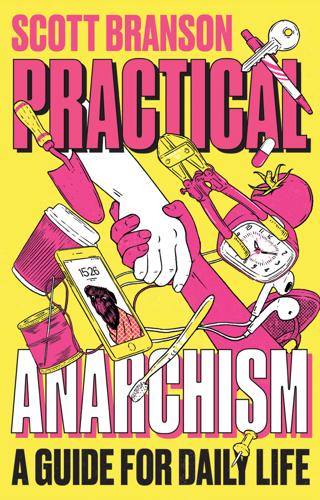
Practical Anarchism: A Guide for Daily Life
by
Scott. Branson
Published 14 Jun 2022
Perhaps the urban spillover of slums is actually proof of the exorbitant life that cannot be contained. There is a common anarchist propaganda graphic of plants reclaiming the world from buildings, police, and the state: through the cracks of the sidewalks, we see the grass always squeezing through. Green anarchists talk about rewilding, ways to undo the domestication of the planet and its life-forms (of course, like many other terms this has been co-opted to be largely emptied of its meaning). The relationship this entails means not prioritizing human life over plants and animals (sometimes referred to as more than human), but finding a way to create ecosystems that are not based on destruction: an attempt at mutual thriving.

Let My People Go Surfing
by
Yvon Chouinard
Published 20 Jun 2006
He stands out as a mountain himself—a mountain of integrity, responsibility, courage, and vision. No matter what you do, you will find essential guidance and inspiration in Let My People Go Surfing. I probably wouldn’t be here without Yvon’s support over the years; his book now gives me more strength to carry on.” —Dave Foreman, The Rewilding Institute “At last Yvon Chouinard has taken time to write his story, some of us in the progressive business world have waited decades. This is a wonderful, wonderful book. Two hundred-odd pages of truth-telling, consciousness-raising and ballsy bravery. Every wannabe entrepreneur, every school teaching a course on ‘business’ and every MBA program should buy this book.

Spite: The Upside of Your Dark Side
by
Simon McCarthy-Jones
Published 12 Apr 2021
Sitkin, Miller, and See, “The Stretch Goal Paradox.” 52. Sitkin, Miller, and See, “The Stretch Goal Paradox.” 53. D. Kahneman, Thinking, Fast and Slow (London: Penguin, 2012). 54. Sitkin, Miller, and See, “The Stretch Goal Paradox.” 55. Manning, Lindenmayer, and Fischer, “Stretch Goals and Backcasting.” See also “Rewilding the Scottish Highlands,” Trees for Life, updated 2020, https://treesforlife.org.uk/. 56. R. Niebuhr, Moral Man and Immoral Society: A Study in Ethics and Politics (Louisville, KY: Westminster John Knox Press, 2013 [1932]). For a stirring modern invocation of Niebuhr, see C. Hedges, Wages of Rebellion: The Moral Imperative of Revolt (New York: Nation Books, 2015). 57.
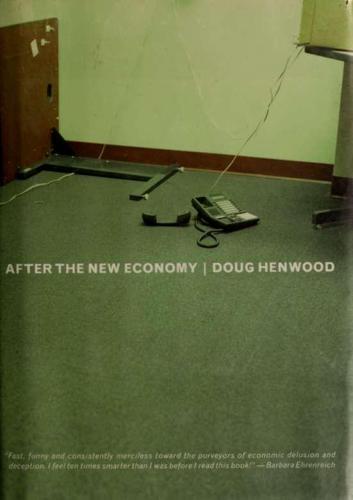
After the New Economy: The Binge . . . And the Hangover That Won't Go Away
by
Doug Henwood
Published 9 May 2005
Tompkins fiinded the Wildlands Project, guided by Dave Foreman, which aims to depopulate huge swaths of North America and return them to wilderness—so that "grizzlies in Chihuahua have an unbroken connection to grizzlies in Alaska," with "pre-Columbian populations of plants and animals." Unexplored is the need, said to be recognized privately by Project members, to reduce the human population by two-thirds for this "rewilding" to work. The FDE also funds the scary Negative Population Growth and Carrying Capacity Network, which has no compunctions about promoting the agenda of reducing the human population. Tompkins' stated principles didn't stop the FDE's 1995 portfoho from holding stocks or bonds of Allstate, which insures cars; Citicorp, and three foreign banks, which fund the globalization the conference bemoaned; Fannie Mae, which greases suburbanization; Grupo Televisa, the Mexican TV network, a nice irony given their locaHst rhetoric and program director Jerry Mander's hatred of TV; HCA-Hospital Corp, of America; Telefonos de Mexico, which Wall Street viewed as a way of playing the expected NAFTA "boom"; and Wal-Mart, enemy of small-town shopkeepers everyw^here.

12 Bytes: How We Got Here. Where We Might Go Next
by
Jeanette Winterson
Published 15 Mar 2021
Safe until you have to come out. Safe until you go crazy and kill everyone else in the bunker, leaving the dog till last. * * * Or you could try Seasteading. Seasteading is about claiming the sea as a new city. The website looks calm, environmental, and egalitarian – families living in peace, and helping to rewild the ocean. In fact, seasteading is a way of establishing communities not subject to land taxes or land laws. For its supporters, it’s a clever twist on what humans have always done – struck out on our own, for reasons of exploration, or personal beliefs. It’s like a Noah’s Ark version of the Amish, or, before them, the Founding Fathers themselves, twinning pioneer spirit with deeply held conviction.

The Switch: How Solar, Storage and New Tech Means Cheap Power for All
by
Chris Goodall
Published 6 Jul 2016
Pasture is often an extremely unproductive form of agriculture in terms of the food value gained from each hectare of land. The uplands of Wales, for example, sustain relatively small numbers of sheep across large tracts of land on which little else grows other than a thin grass. Without those sheep, as environmental writer George Monbiot has made us aware in his influential work on rewilding, woodlands would generally quietly return and prosper. Would a sustained programme of reforestation provide the UK with enough stored energy in trees to help overcome seasonal shortages of power? The numbers aren’t very encouraging. A hectare that fed a couple of sheep would grow at least two tonnes of wood a year once woodland was re-established.

Fully Automated Luxury Communism
by
Aaron Bastani
Published 10 Jun 2019
Besides the huge savings in labour, time, energy, land and water, synthetic biology will underpin a historic relocation of food production. Synthetic meat, which needs no sunlight, would appear to be a perfect candidate for vertical, urban farming, while the obvious savings with land come to fundamentally alter our relationship with nature. This could have a number of benefits including the re-wilding of vast wildernesses lost to deforestation and the Industrial Revolution – certainly of major use as carbon sinks in trying to mitigate climate change. Meanwhile, the end of global food distribution, at least in its present form, would avert colossal amounts of waste. At present the average ingredient in an American meal travels 1,550 miles before consumption, while 70 per cent of a food’s final retail price comes from transportation, storage and handling.

Uprooting: From the Caribbean to the Countryside - Finding Home in an English Country Garden
by
Marchelle Farrell
Published 2 Aug 2023
It was a small village, a few hundred residents maybe. A mix of housing, from council to manor, along one small high street. There was a village school, a busy pub, a community bus, and a shop run by volunteers as a cooperative. We passed a poster on the parish noticeboard for a night of Aretha Franklin’s music next to one about rewilding. The village lay in a Conservation Area, in an Area of Outstanding Natural Beauty, and contained several Sites of Special Scientific Interest; it was as picture-perfect-rolling-hills-chocolate-box beautiful as all those titles suggest. Yet behind the perfectly preserved facade, there was a sense of a thriving community, something very vibrantly alive.

The Dark Net
by
Jamie Bartlett
Published 20 Aug 2014
A growing number of writers have pointed to possible long-term detrimental health effects of online stimulation, such as technostress, data asphyxiation, information fatigue syndrome, cognitive overload and time famine. The only answer, he says, is to leave technology behind and return to a non-civilised way of life through large-scale deindus-trialisation and what he calls ‘rewilding’. If sci-fi writers like William Gibson inspire the transhumanists, the anarcho-primitivists prefer the writings of Henry David Thoreau: back to nature. I ask Zerzan how far back he’s willing to go in pursuit of a natural state of existence. Should we also rid ourselves of dialysis machines? Sewage plants?
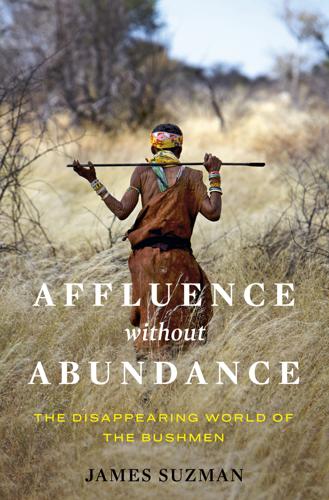
Affluence Without Abundance: The Disappearing World of the Bushmen
by
James Suzman
Published 10 Jul 2017
The conceptual separation farming communities made between the natural/wild and the human/cultural worlds was so widespread that for a long period social anthropologists believed it was a human universal. But the conceptual separation of the human and natural worlds was rarely absolute. All farmers understood that land left untended and uncared-for would inevitably be rewilded. They also realized that some wild lands and some wild animals were more resistant to domestication than others. In the Fertile Crescent, where many plant and animal species were appropriate for domestication, the division between nature and culture became deeply embedded over time. But in the tropics of Africa, South America, and eastern Asia, only a handful of local plants and even fewer animals were domesticable.
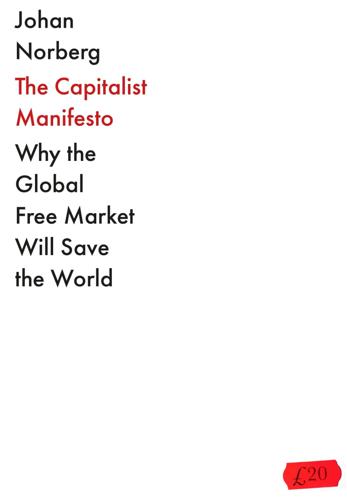
The Capitalist Manifesto
by
Johan Norberg
Published 14 Jun 2023
Without it, an area equivalent to the size of two South Americas would have had to be put under the plough.15 In recent decades this has led to ‘peak farmland’ and, for the first time in history, we have allowed pastures to grow again.16 If urbanization and agricultural productivity continue to increase – with the help of genetically modified crops, for example – we have a historic chance for rewilding, where wildlife recovers lost land with flora and fauna in diverse combinations. The economists Jonas Grafström and Christian Sandström have compiled an impressive set of statistics for Sweden showing that in almost all environmental areas there has been striking improvements since 1990. Despite the fact that the population has increased by 1.6 million and the economy has almost doubled, emissions and resource use have decreased.
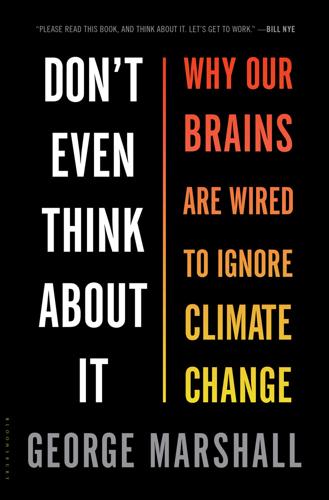
Don't Even Think About It: Why Our Brains Are Wired to Ignore Climate Change
by
George Marshall
Published 18 Aug 2014
Our sense of loss looks backward rather than forward, and research suggests that people are more motivated to restore lost environmental quality than improve current environmental quality. There is therefore a potential to express climate change as an opportunity to RESTORE PAST LOSS, whether it is social (lost community, values, purpose) or environmental (lost ecosystems, species, or beauty). The rapidly growing movement for the rewilding of degraded landscapes is an interesting response to the uncertainties of future loss. We are very well adapted to respond to immediate threats but slow to accommodate moving change. Climate change is a process, not an event, so it requires that we RECOGNIZE MOMENTS OF PROXIMITY that can demand attention.
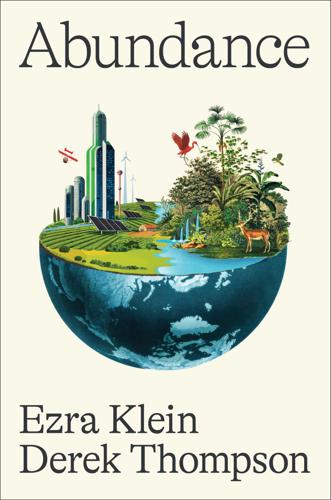
Abundance
by
Ezra Klein
and
Derek Thompson
Published 18 Mar 2025
As for the chicken and beef, much of it comes from cellular meat facilities, which grow animal cells to make chicken breasts and rib eye steaks—no live animals needed, which means no confinement and slaughter. Once prohibitively expensive, cultivated meat scaled with the help of plentiful electricity. When your parents were young, nearly 25 percent of all global land was used to raise livestock for human consumption. That is unimaginable now. Much of that land has rewilded. Out the window and across the street, an autonomous drone is dropping off the latest shipment of star pills. Several years ago, daily medications that reduced overeating, cured addiction, and slowed cellular aging were considered miracle drugs for the rich, especially when we discovered that key molecules were best synthesized in the zero-gravity conditions of space.
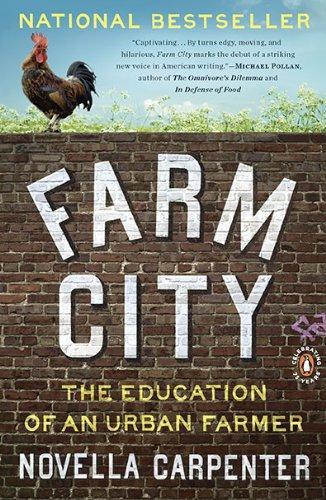
Farm City: The Education of an Urban Farmer
by
Novella Carpenter
Published 25 May 2010
A stand of corn rustled in the corner. My presence, my influence, was evident all around me. Thoreau, my fellow squat farmer, eventually ceded his bean field to the woodchucks. I would soon have to cede my garden to an urban farmer’s most dreaded pest, the real estate developer. From my window I would be able to watch the rewilding before the destruction. The tomatoes would turn red, burst open, ooze down their seeds in a slurry. The carrots would swell and split, send out a flower stalk, become fibrous. Armies of slugs and snails would slide across the wooden beds, tuck into the soil, and reproduce deliriously. The corn, neglected and unharvested, would crumple into the earth.
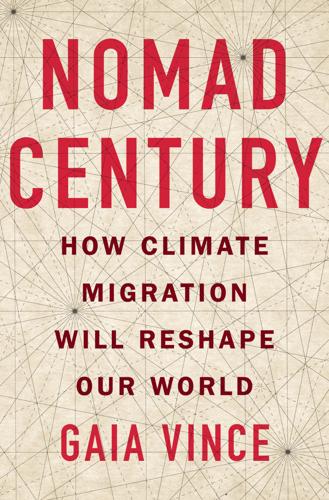
Nomad Century: How Climate Migration Will Reshape Our World
by
Gaia Vince
Published 22 Aug 2022
Wherever our food is produced, we will need to use far more precise nutrient and drip-irrigation systems to avoid polluting ecosystems, and also to reduce food loss and waste. This means using cover crops, mulches and intercropping, which recycle nutrients so that chemical assistance can be used sparingly and appropriately when needed. It means rehabilitating exhausted farmland and enabling unsuitable land to rewild. China helped improve its farmlands through a vast programme of integrated soil-system management that ran from 2005 to 2015, involving some 20 million farmers across 40 million hectares of land. The result was an average increase in crop yields of more than 10 per cent, while nitrogen fertilizer use dropped by 16 per cent, culminating in an economic saving of $12.2 billion
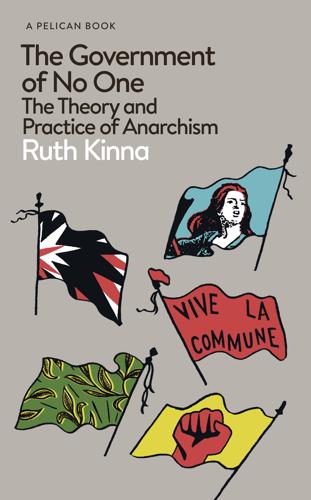
The Government of No One: The Theory and Practice of Anarchism
by
Ruth Kinna
Published 31 Jul 2019
To prevent governments making judgements for individuals, Goodman called on them to mug up on ‘physical science, physical and mental hygiene, sociology and political economy, to analyze problems of urbanism, transportation, pollution, degenerative disease, mental disease, pesticides, indiscriminate use of antibiotics and other powerful drugs, and so forth’.86 For Zerzan, this is a faulty approach. Education cannot come from within hierarchical symbolic systems. It comes, instead, through re-wilding: reconnecting to undomesticated, genuinely ecological and gentler systems of knowing.87 Skill-sharing and the cultures of anarchy While knowledge-transfer and practice-based learning often shade into one another, the philosophies that underpin these two types of skill-sharing point to distinctive cultures of anarchy.
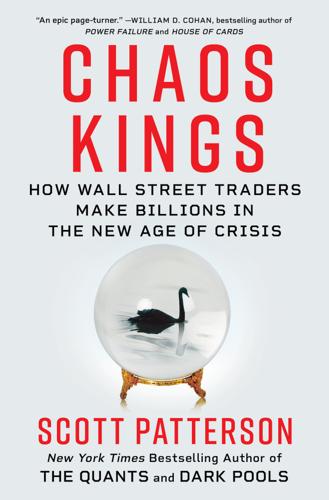
Chaos Kings: How Wall Street Traders Make Billions in the New Age of Crisis
by
Scott Patterson
Published 5 Jun 2023
While every effort to cut emissions needed to be made, humanity, in Read and Bendell’s view, needed to prepare for, and adapt to, the inevitable changes in the climate that were already baked into a heating atmosphere. Deep Adaptation recommended transformative social changes such as moving large populations away from coastlines, “rewilding” urban landscapes, and shifting to local, community-based farming. The title was based on a controversial 2018 paper by Bendell that argued that accelerating global warming had made civilizational collapse a fast-coming certainty. Bendell gave humanity a decade. (He later backed away from claiming collapse was a literal certainty and conceded it was his strong opinion.)
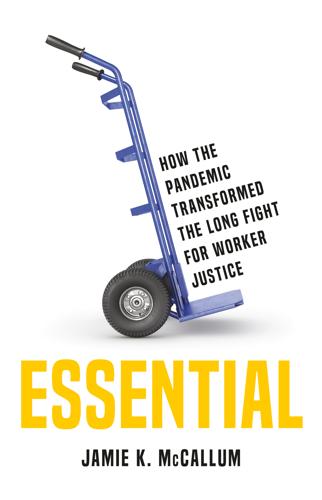
Essential: How the Pandemic Transformed the Long Fight for Worker Justice
by
Jamie K. McCallum
Published 15 Nov 2022
A herd of buffalo occupied the empty streets of New Delhi, India. Dolphins found their way into the notoriously brackish Venetian canals. Even the noxious skies over Wuhan and elsewhere across China turned storybook blue as the lockdowns shuttered the industries that emit infamous levels of air pollution. But what seemed at the time like a peaceful rewilding of an empty earth was really just a momentary calm before the storm. If the epidemiology of the pandemic was to some extent predictable, the political economy of it was not. It was the worst GDP crash since the thirties, and a cascading series of worsts for unemployment claims. Never before had there been such a collective effort to shut down major parts of global economic infrastructure.
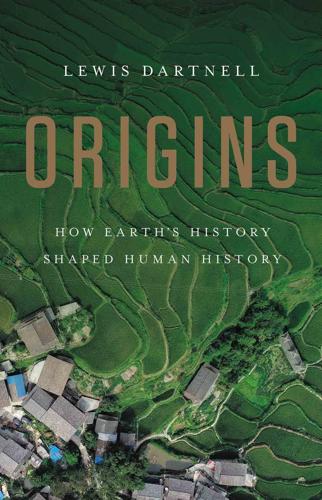
Origins: How Earth's History Shaped Human History
by
Lewis Dartnell
Published 13 May 2019
‘Most of the extant mtDNA boundaries in South and Southwest Asia were likely shaped during the initial settlement of Eurasia by anatomically modern humans’, BMC Genetics 5: 26. Millward, J. A. (2013). The Silk Road: A Very Short Introduction, Oxford University Press. Mokyr, J. (1992). The Lever of Riches: Technological Creativity and Economic Progress, Oxford University Press. Monbiot, G. (2014). Feral: Rewilding the Land, Sea and Human Life, Penguin. Moorjani, P., C. E. G. Amorim, P. F. Arndt and M. Przeworski (2016). ‘Variation in the molecular clock of primates’, Proceedings of the National Academy of Sciences 113(38): 10607–12. Morris, I. (2011). Why the West Rules–for Now: The Patterns of History and What They Reveal about the Future, Profile Books.
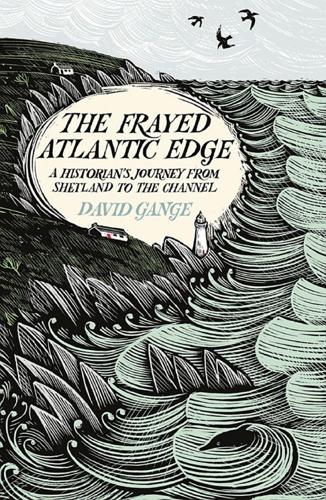
The Frayed Atlantic Edge: A Historian’s Journey From Shetland to the Channel
by
David Gange
Published 10 Jul 2019
Simm has written hundreds of closely observed otter poems, and in many, floods are the creature’s medium. Water sweeps land when, in acts of drainage and deforestation, ‘a balance of centuries to the balance-sheet yields’.8 When otters twist and tumble through redrowned vales a historic ordering of water, earth and animal is reprised in a beautiful unplanned catastrophe of rewilding. As poets make otters into ribbons of water, so they make Skye a figment of fog, a realm subject not to divine or human law but to ‘amorphous rules of light’.9 When Richard Hugo, poet of the Pacific Northwest, came to live on Skye he wrote that the shifting mists alter the colour of the island a hundred times a day and ‘never stop changing the distance to the pier from your front door’.
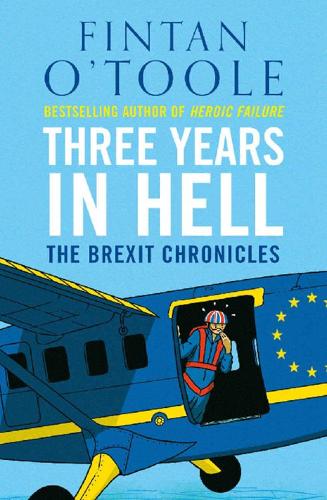
Three Years in Hell: The Brexit Chronicles
by
Fintan O'Toole
Published 5 Mar 2020
Just a decade ago, Henry Hemming produced a long book, In Search of the English Eccentric, warning that ‘the English eccentric was about to become an endangered species’. If only. For not only is the English eccentric not an endangered species, he is flourishing right at the top of the food chain. Brexit can be thought of as an experiment in political re-wilding: instead of bringing back wolves or bears or lynx, it has reintroduced the English eccentric to the ecosystem of power. When we outsiders see Johnson stuck on a zip wire with a Union Jack in each hand or Rees-Mogg bringing his nanny along to canvass voters on his behalf, we are initially indulgent: how delightfully, comically, English.

Braiding Sweetgrass
by
Robin Wall Kimmerer
But it can be too easy to shift the burden of responsibility to the coal company or the land developers. What about me, the one who buys what they sell, who is complicit in the dishonorable harvest? I live in the country, where I grow a big garden, get eggs from my neighbor’s farm, buy apples from the next valley over, pick berries and greens from my few rewilding acres. A lot of what I own is secondhand, or third. The desk that I’m writing on was once a fine dining table that someone set out on the curb. But while I heat with wood, compost and recycle, and do myriad other responsible things, if I did an honest inventory of my household, most of it would probably not make the grade of the Honorable Harvest.
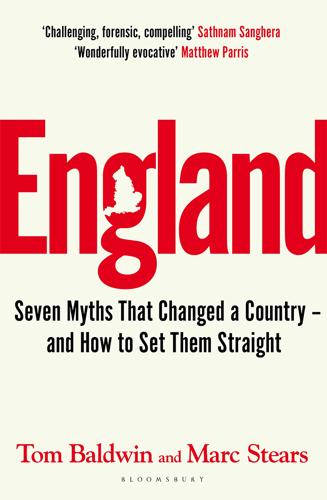
England: Seven Myths That Changed a Country – and How to Set Them Straight
by
Tom Baldwin
and
Marc Stears
Published 24 Apr 2024
The following chapters will examine in greater detail what that did to England, but there is a circularity between the reasons why Powell’s former constituents lost their jobs and the revival of his myth that contributed to the city voting by a 63 to 37 per cent for Brexit in 2016.113 Average earnings in Wolverhampton, which used to keep pace with those in London, are now 20 per cent below the UK average. Beatties, the big department store that was once at the heart of the city’s shopping district, now stands shuttered and empty opposite a pawnbroker. The site of the giant GKN Sankey’s plant at Bilston has been re-wilded as a meadow and the air is less polluted, so that on a clear day it’s possible to see ‘those blue remembered hills’ that A. E. Housman had imagined in A Shropshire Lad. But there is a strong sense that many people are now yearning less for an imagined pastoral past than an industrial one. No matter how hard and dirty the work was, there is now nostalgia for times when their communities felt strong, there was money for a good night out and hope that better days lay ahead.

The Zero Marginal Cost Society: The Internet of Things, the Collaborative Commons, and the Eclipse of Capitalism
by
Jeremy Rifkin
Published 31 Mar 2014
Homes and workplaces will no longer be separated by lengthy commutes. It is even conceivable that today’s overcrowded road systems will be less traveled and that the expense of building new roads will diminish as workers become owners and consumers become producers. Smaller urban centers of 150,000 to 250,000 people, surrounded by a rewilding of green space, might slowly replace dense urban cores and suburban sprawl in a more distributed and collaborative economic era. Democratizing the Replicator The new 3D printing revolution is an example of “extreme productivity.” It is not fully here yet, but as it kicks in, it will eventually and inevitably reduce marginal costs to near zero, eliminate profit, and make property exchange in markets unnecessary for many (though not all) products.
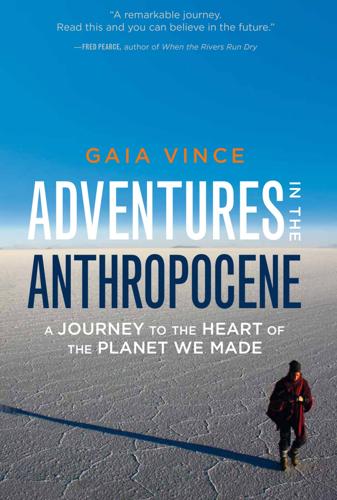
Adventures in the Anthropocene: A Journey to the Heart of the Planet We Made
by
Gaia Vince
Published 19 Oct 2014
Yellowstone’s ecology is being transformed by the Anthropocene’s climate change, for example – more than half of the conifers have been damaged by pine beetles, which thrive over warmer winters. Nevertheless, the dream of the pristine persists as a conservation goal. In Montana, former Silicon Valley entrepreneur Sean Gerrity is attempting to expand the rewilding concept across some 3.5 million contiguous acres of native prairie, with a goal of restoring the wildlife abundance the landscape once contained. He wants to introduce 25,000 ‘genetically pure’ bison, multiple packs of wolves, as well as elk and bighorn sheep, and has already bought up much of the land for his dream park.
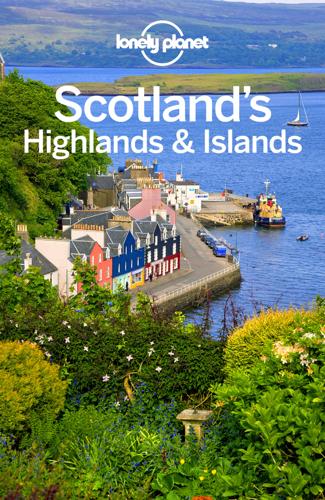
Lonely Planet Scotland's Highlands & Islands
by
Lonely Planet
A two-mile blue trail winds through the forest, while a 4.5-mile black track will test expert bikers with a stiff climb and an adrenalin-surging rock-slab descent. Alladale Wilderness Reserve LODGE€€€ (%01863-755338; www.alladale.com; Ardgay; self-catering per week from £1200, r with full board Oct-May £213-340; pW#) In deep wilderness near Croick, this lodge is part of a notable rewilding project. The main lodge (which includes meals) is, in summer, for entire hire only (it sleeps 12 to 14). Individual rooms are available in low season. Smaller buildings – a farmhouse and cottages – accommodate up to four on a self-catering basis. The scope for outdoor activity here is superb. Crannag BISTRO€€ (%01863-766111; www.crannag.com; Bonar Bridge; mains £12-19; h6-8.30pm Tue-Sat; v) This likeable Highland bistro in Bonar Bridge is our favourite eating establishment in the area.

Demanding the Impossible: A History of Anarchism
by
Peter Marshall
Published 2 Jan 1992
Some live in small communities coexisting with other beings without dominating them. Some develop the art of doing nothing yet leave nothing undone. Some try to simplify their lives while they continue to live in the cities, resisting the authoritarian and alienating elements of modern culture and the destruction of the wider environment. Others go in for ‘Rewilding’, attempting to reclaim our ‘lost knowledge of living with the earth’.44 What unites green anarchists is the belief that the present form of industrial civilization, spreading across the world with global capital and political imperialism, will lead to a social and ecological catastrophe unless there is a major shift in values and a new relationship with the Earth.
…
, Running on Emptiness: The Pathology of Civilization (Los Angeles: Feral House, 2002), p. 34 38 Zerzan, Future Primitive, op. cit., p. 16 39 See Zerzan and Alice Carnes, eds., Questioning Technology: A Critical Anthology (Freedom Press, 1988) 40 Zerzan, Running on Emptiness, op. cit., p. 80 41 See my Around Africa: From the Pillars of Hercules to the Strait of Gibraltar (London and New York: Simon & Schuster, 1994), pp. 127–31 42 See my Europe’s Lost Civilization: Uncovering the Mysteries of the Megaliths (Headline, 2004), pp. 8–10, 285–90 43 See www.primitivism.com 44 ‘Rewilding’, Back to Basics, vol. 3, www.greenanarchy.org 45 See Graham Purchase, ‘Social Ecology, Anarchism and Trades Unionism’, Deep Ecology and Anarchism (Freedom Press, 1993) 46 Gary Snyder, ‘Buddhist Anarchism’, Journal for the Protection of All Beings (San Francisco: City Lights, 1961) 47 Agorn!

The Stack: On Software and Sovereignty
by
Benjamin H. Bratton
Published 19 Feb 2016
We must save the nonhumans from being merely humans, so that they could show us a different way for us to be both human and not. Another project might steal from the surfacing of posthuman actors through the medium of the universal User, that these simple utilitarianisms cannot hold and that the psychological-utilitarian User is thereby recast in a far less reductive and less familiar light. In its place we imagine a re-wilded landscape of inhumanist intentions, mapped by multipolar points of control, composing a more polysynchronic and less chauvinistic system of systems. It is probably prudent to acknowledge the first conclusion and design on behalf of that second project. In doing so, we should pay special attention to the risks incurred by legacy User positions, including the tendency to individuate the subjective outcomes of interactions with The Stack's apparatuses and envelopes.
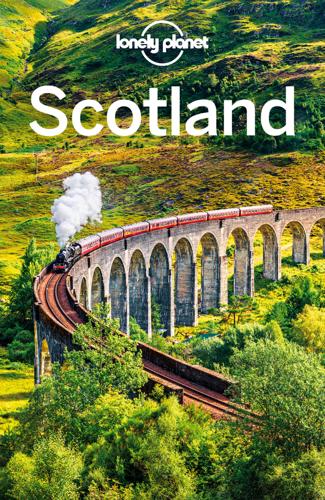
Lonely Planet Scotland
by
Lonely Planet
You can still see the evocative messages scratched by refugee crofters from Glencalvie on the eastern windows of Croick Church. Alladale Wilderness ReserveLODGE£££ (%07770-419671; www.alladale.com; Ardgay; self-catering per week from £950; pW#) In deep wilderness near Croick, this lodge is part of a notable rewilding project. The main lodge (which includes meals) is for entire hire only, so you’d want a large group (it sleeps 12 to 14). Smaller buildings – a farmhouse and a cottage – accommodate up to four on a self-catering basis. See the website for details. The scope for outdoor activity here is superb. Lairg & Around Lairg is an attractive village, although the tranquillity can be rudely interrupted by the sound of military jets roaring overhead (the valley is frequently used by the RAF for low-flying exercises).

Lonely Planet Scotland
by
Lonely Planet
A two-mile blue trail winds through the forest, while a 4.5-mile black track will test expert bikers with a stiff climb and an adrenalin-surging rock-slab descent. Alladale Wilderness ReserveLODGE£££ (%01863-755338; www.alladale.com; Ardgay; self-catering per week from £1200, r with full board Oct-May £213-340; pW#) In deep wilderness near Croick, this lodge is part of a notable rewilding project. The main lodge (which includes meals) is, in summer, for entire hire only (it sleeps 12 to 14). Individual rooms are available in low season. Smaller buildings – a farmhouse and cottages – accommodate up to four on a self-catering basis. The scope for outdoor activity here is superb. CrannagBISTRO££ (%01863-766111; www.crannag.com; Bonar Bridge; mains £12-19; h6-8.30pm Tue-Sat; v) This likeable Highland bistro in Bonar Bridge is our favourite eating establishment in the area.
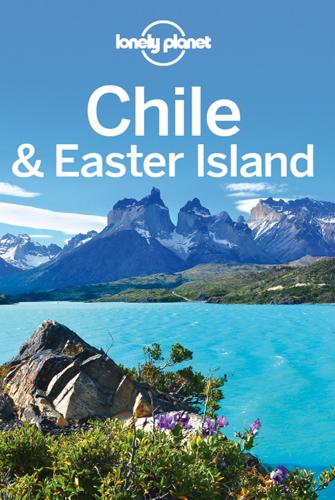
Lonely Planet Chile & Easter Island (Travel Guide)
by
Lonely Planet
,
Carolyn McCarthy
and
Kevin Raub
Published 19 Oct 2015
With holdings in Chile and Argentina, the couple has conserved over two million acres of land, which is more than any individual in history. While this power couple started in the trenches of retail (she as CEO of Patagonia, he as founder of Northface and Esprit), they have turned their industry toward rewilding key ecosystems. It started in 1991 with Parque Pumalín, a Rhode Island–sized conservation project cobbled together from small Patagonian farms abutting ancient forest. In 2004, Kris Tompkins became a player, purchasing a run-down estancia (grazing ranch) near Cochrane through nonprofit Conservación Patagonica.